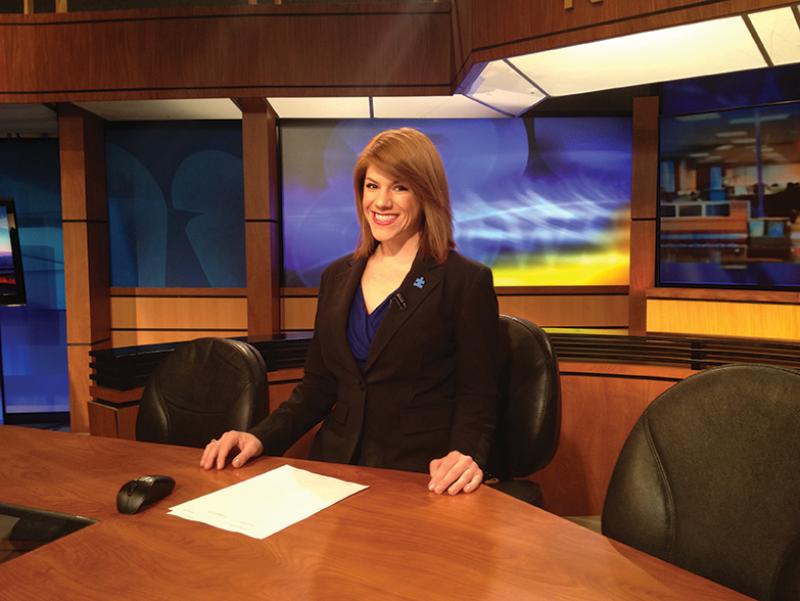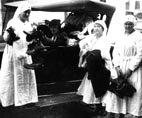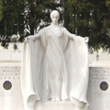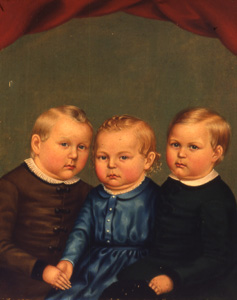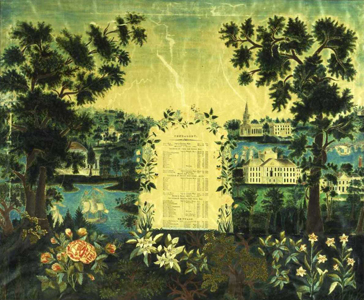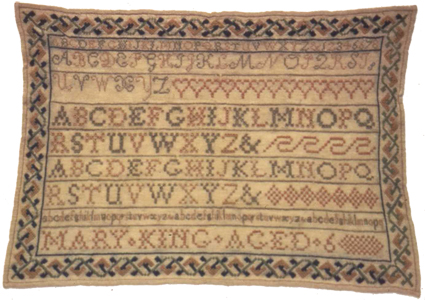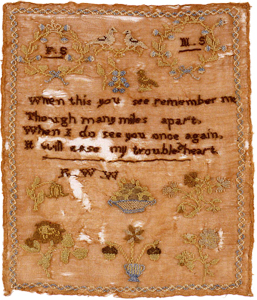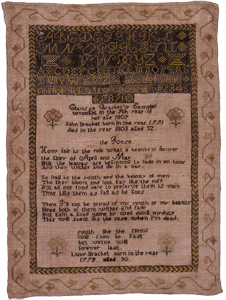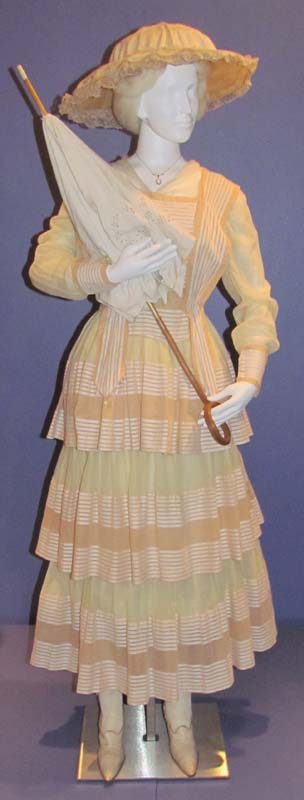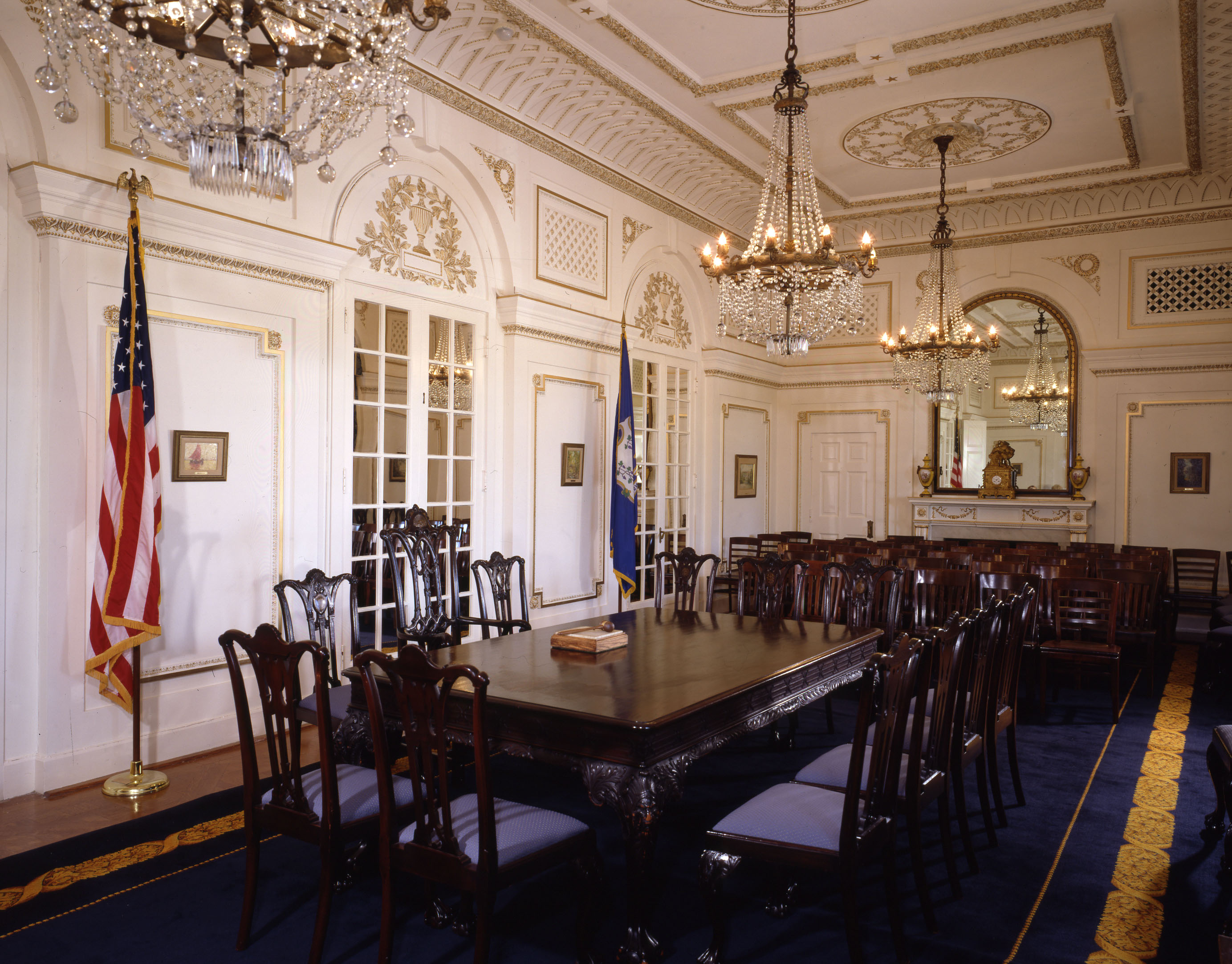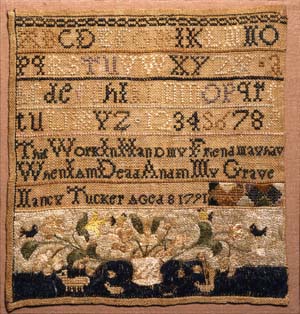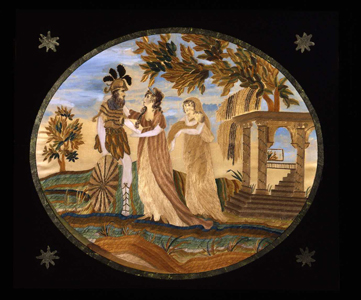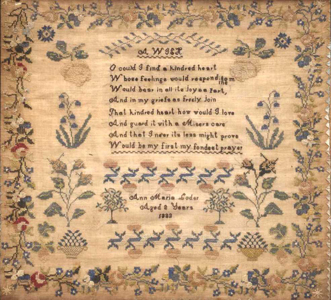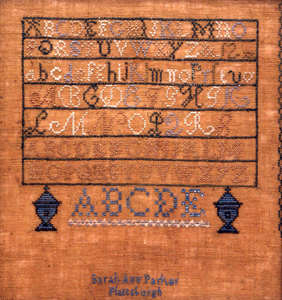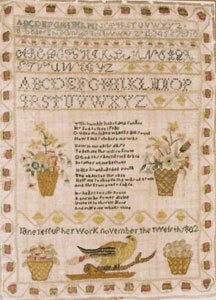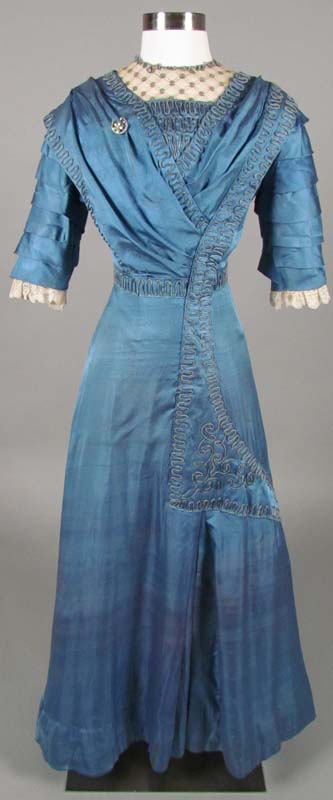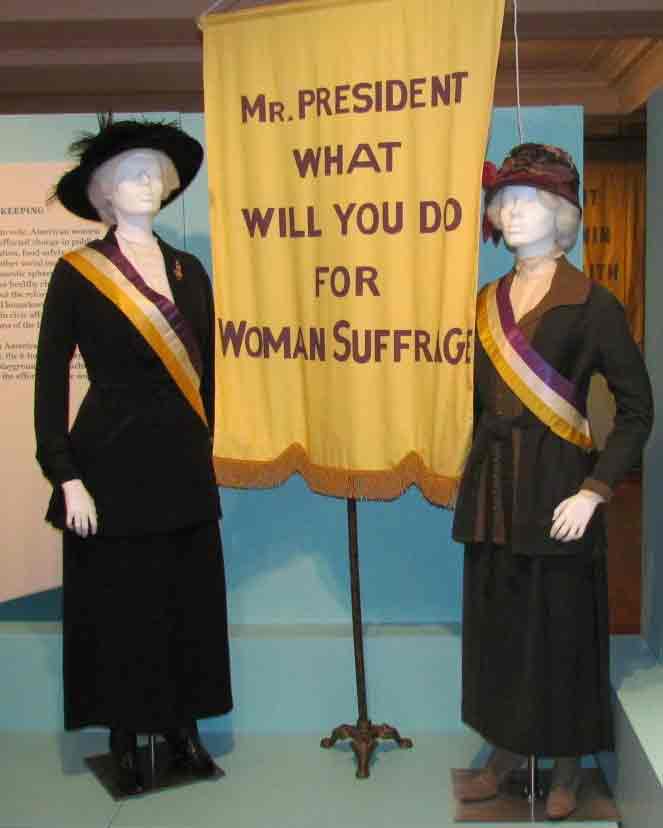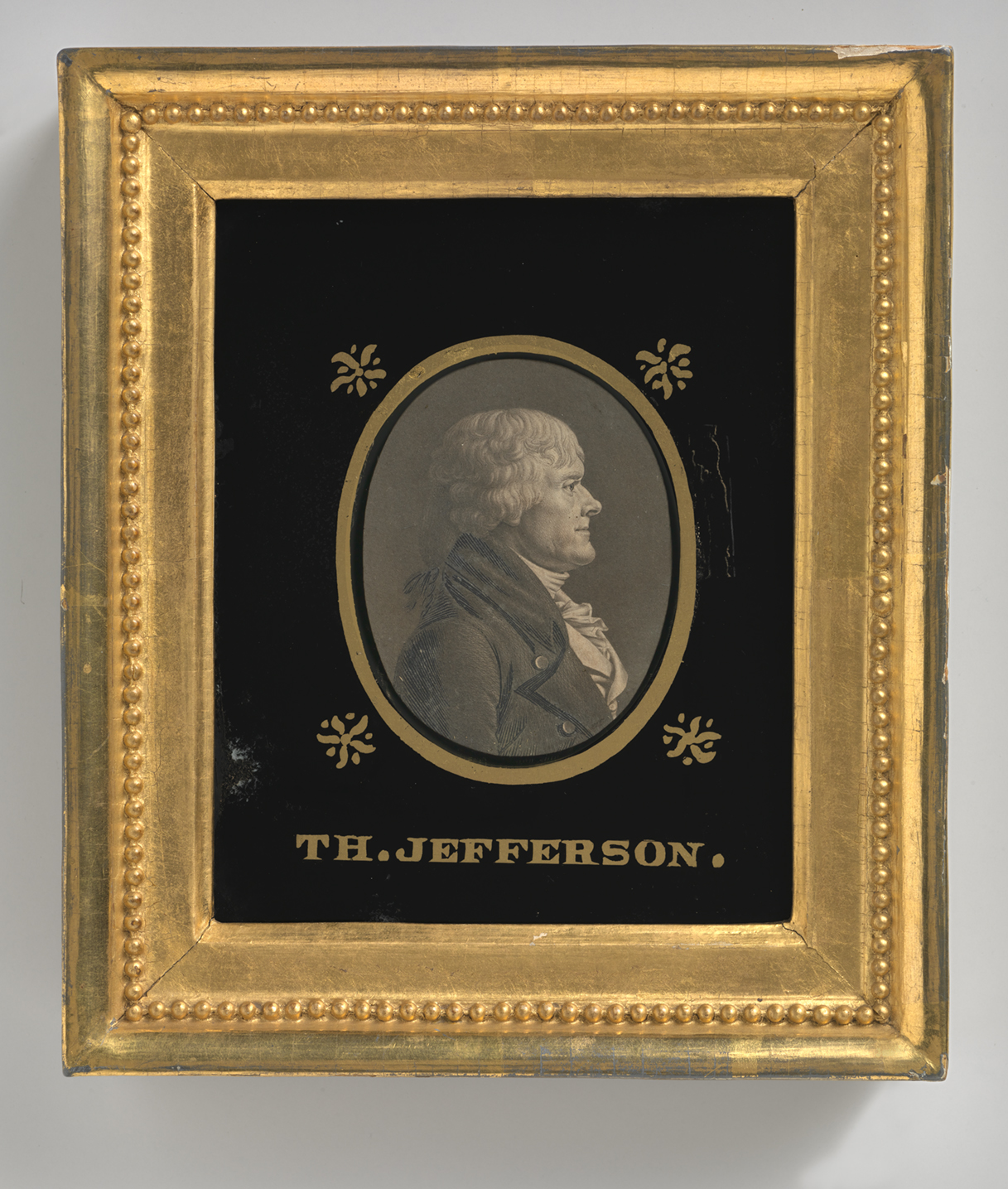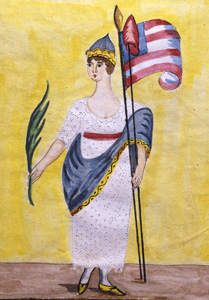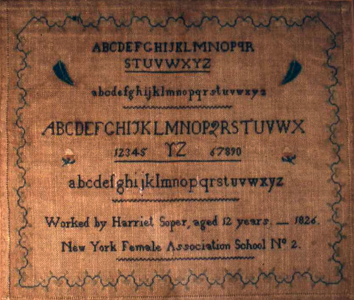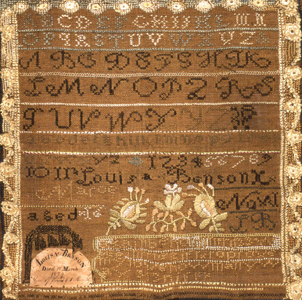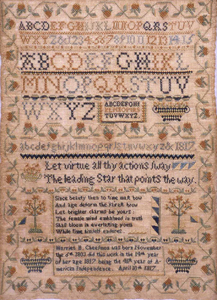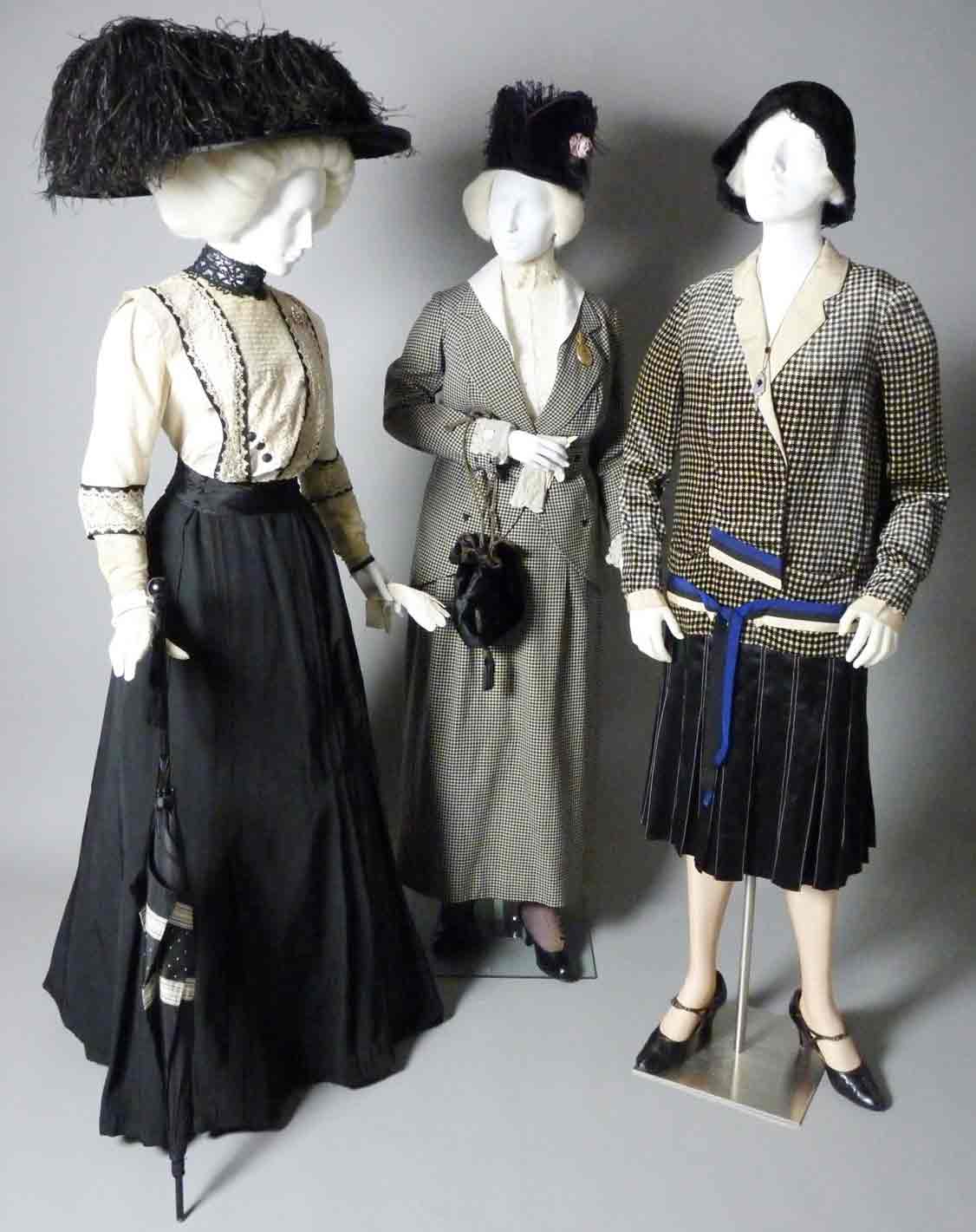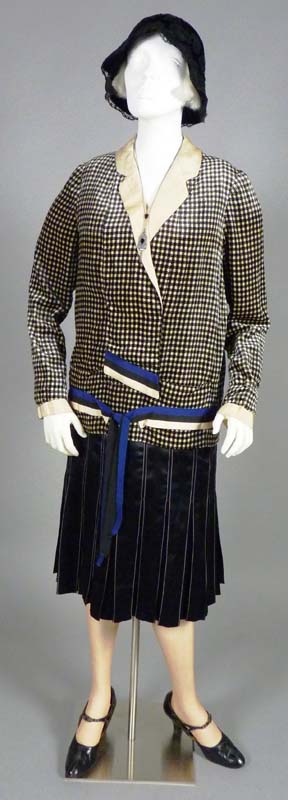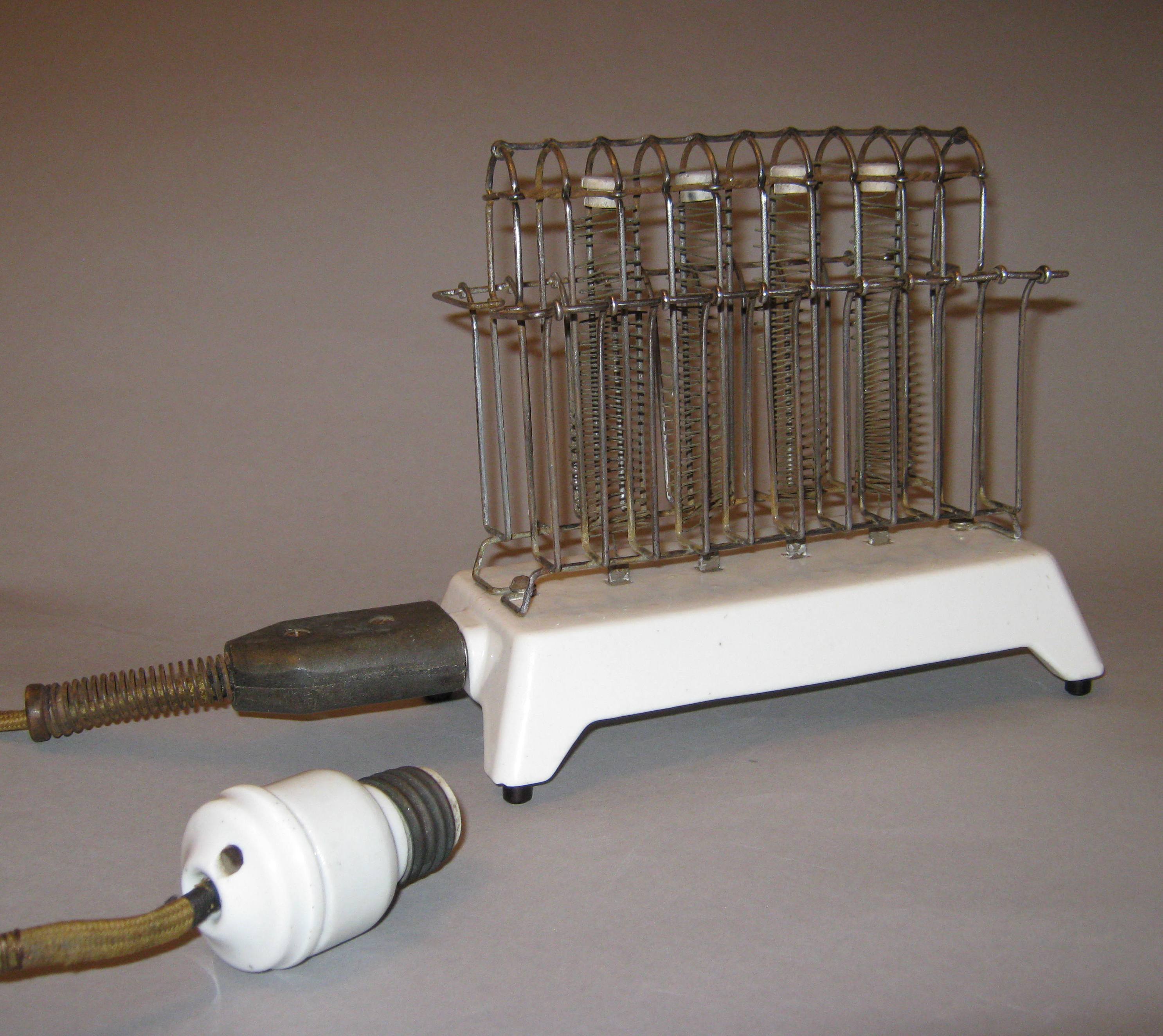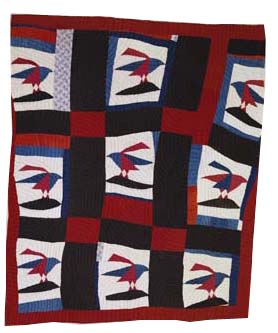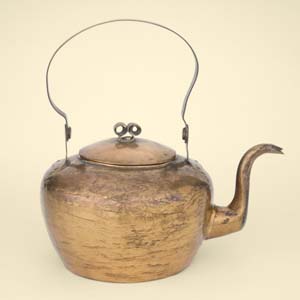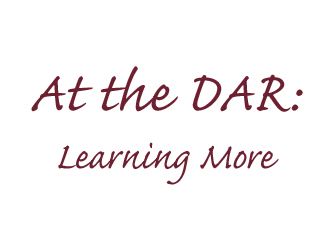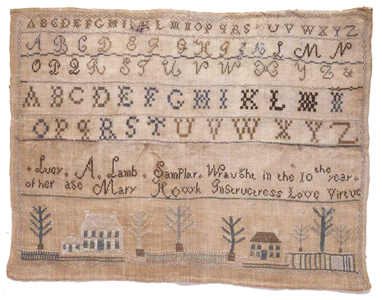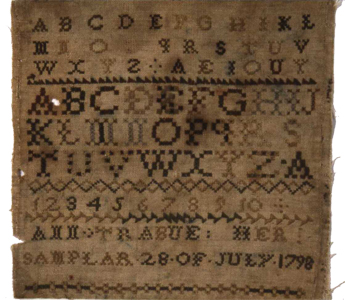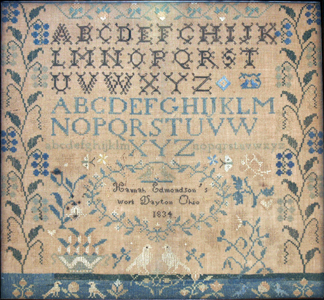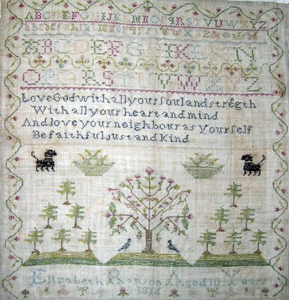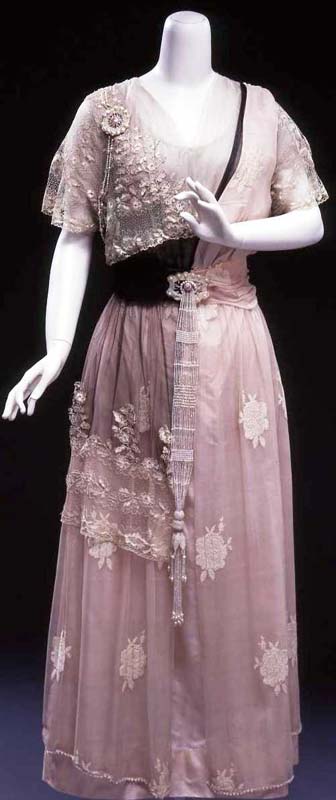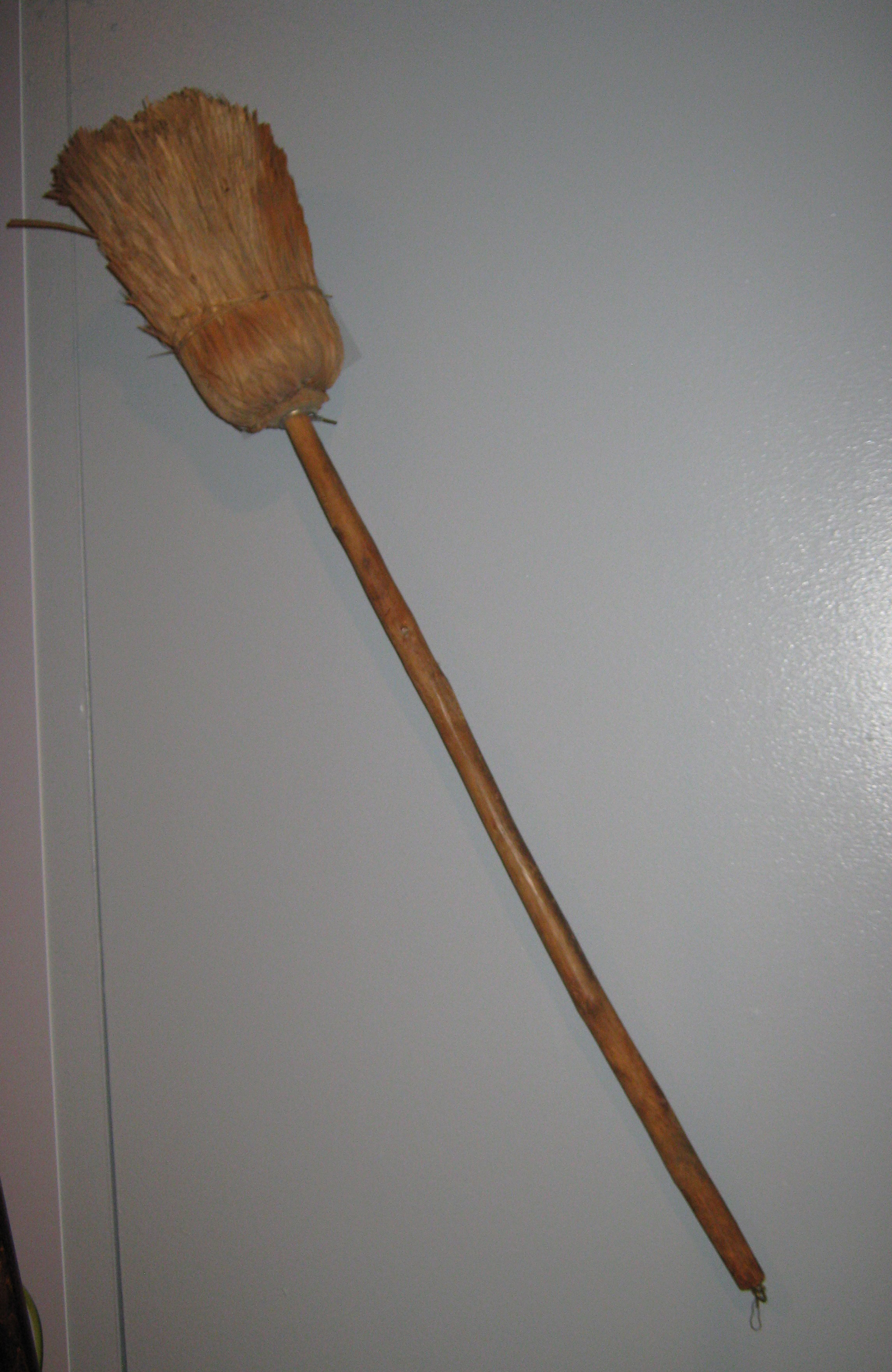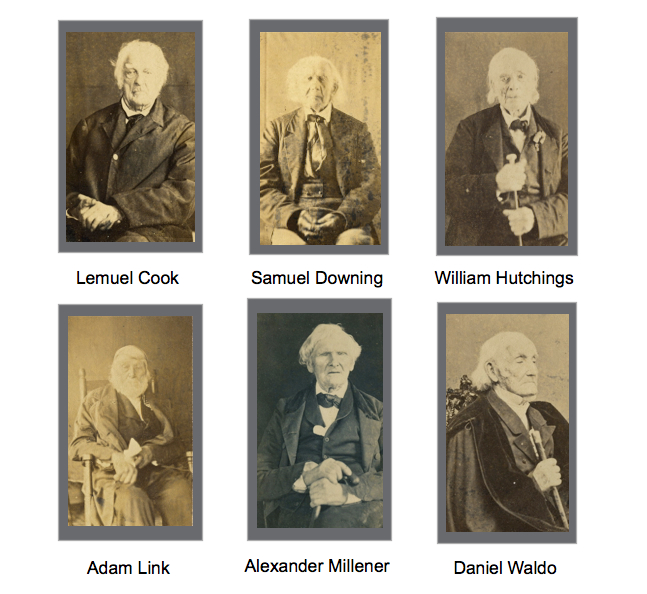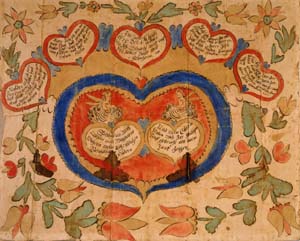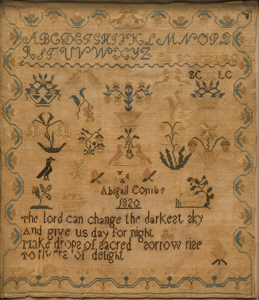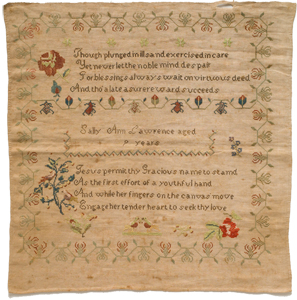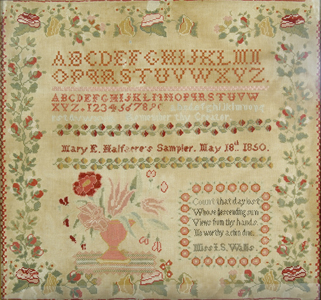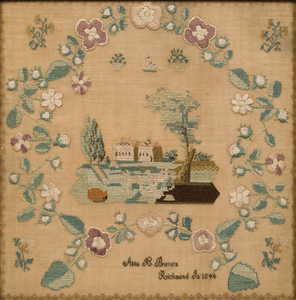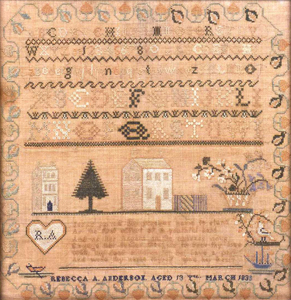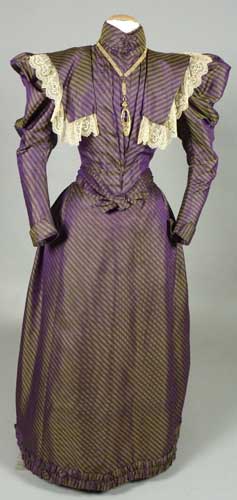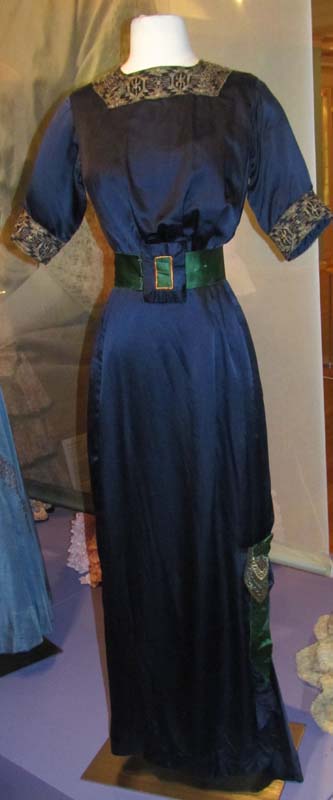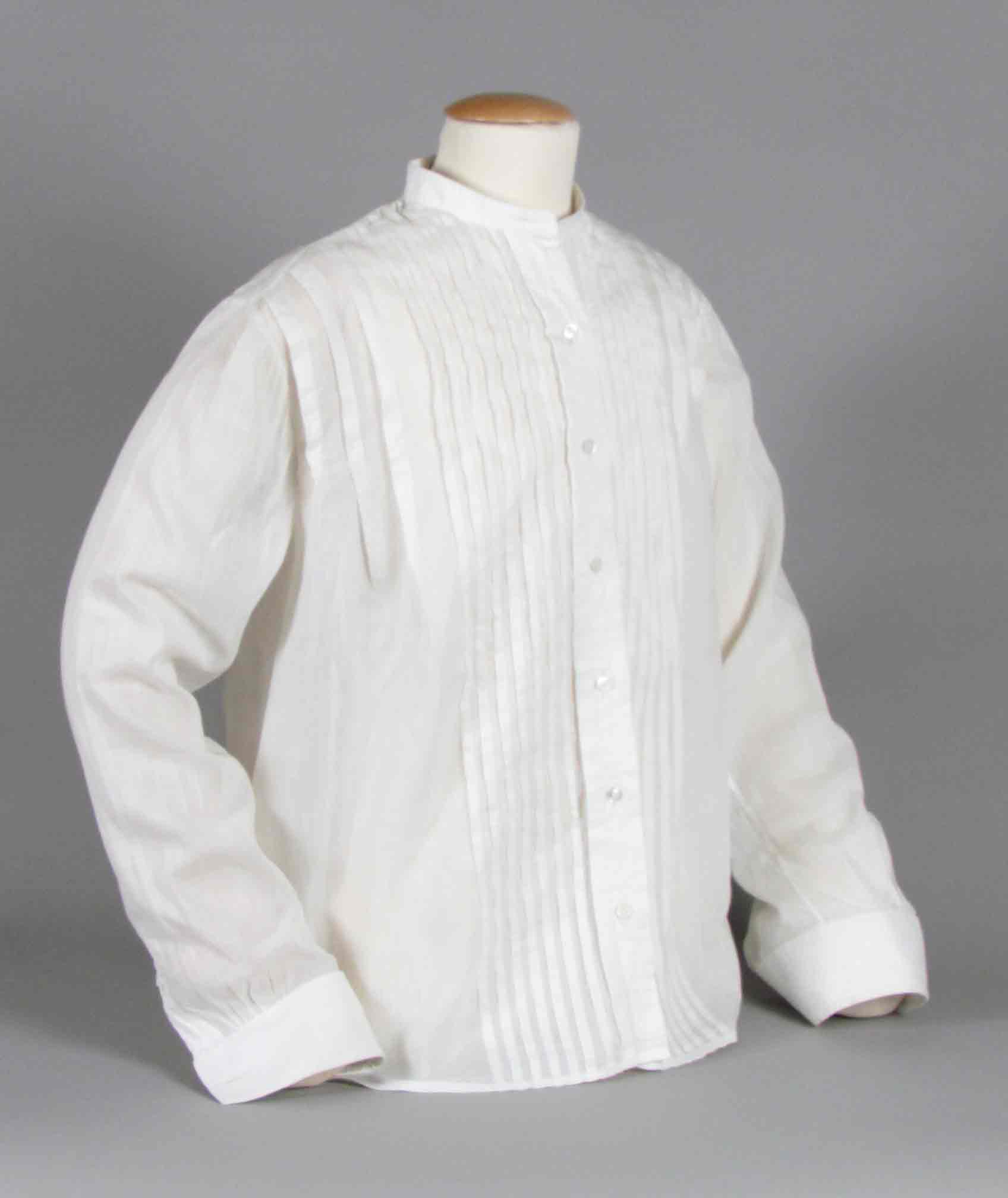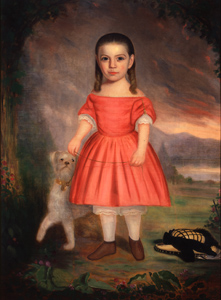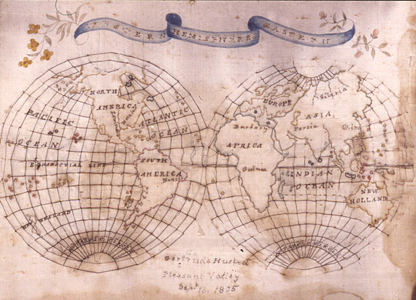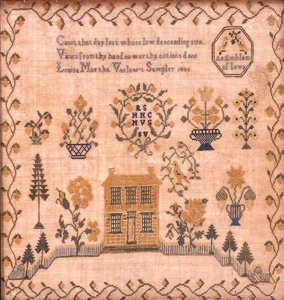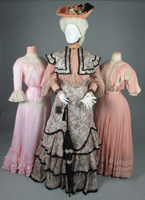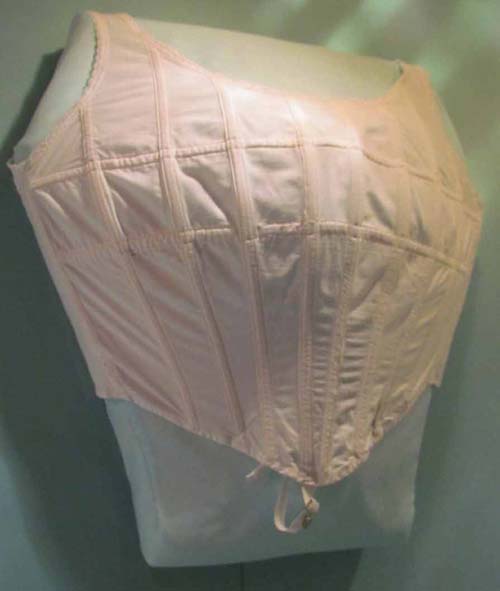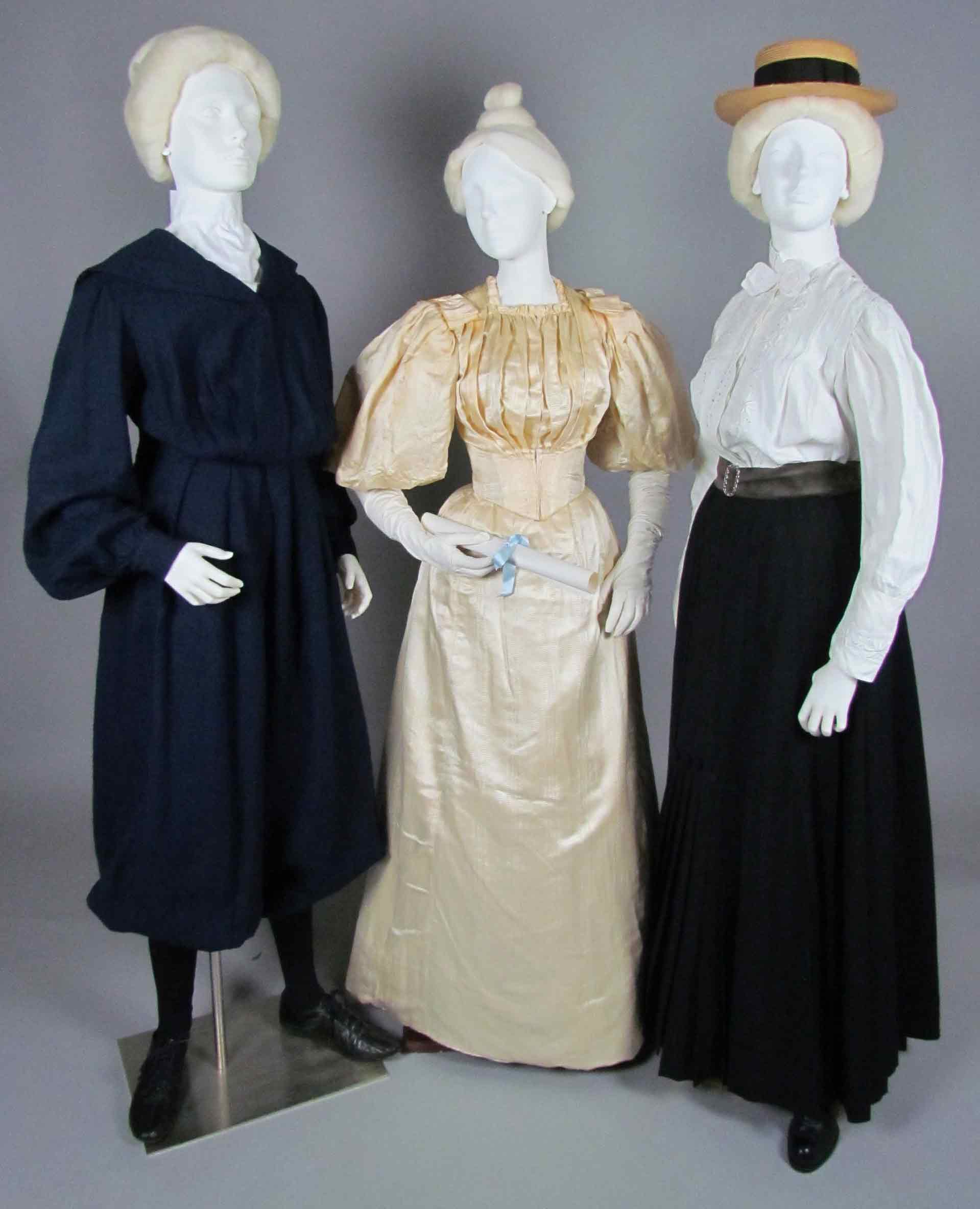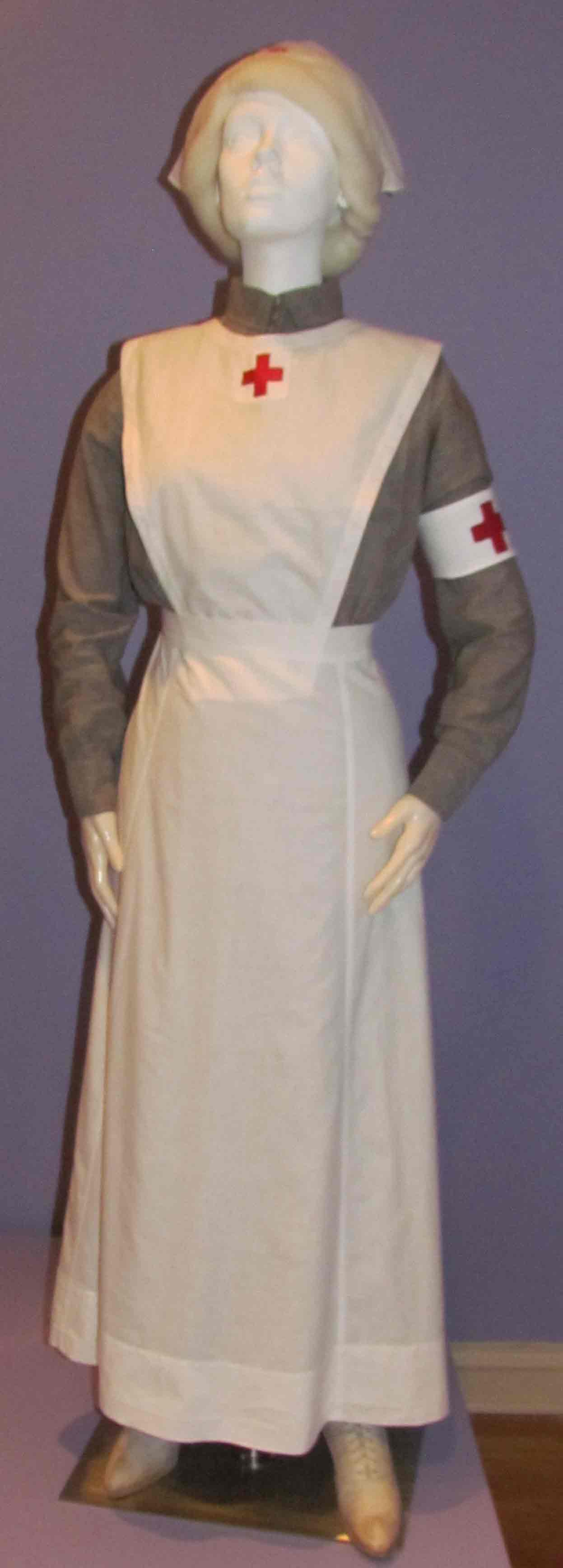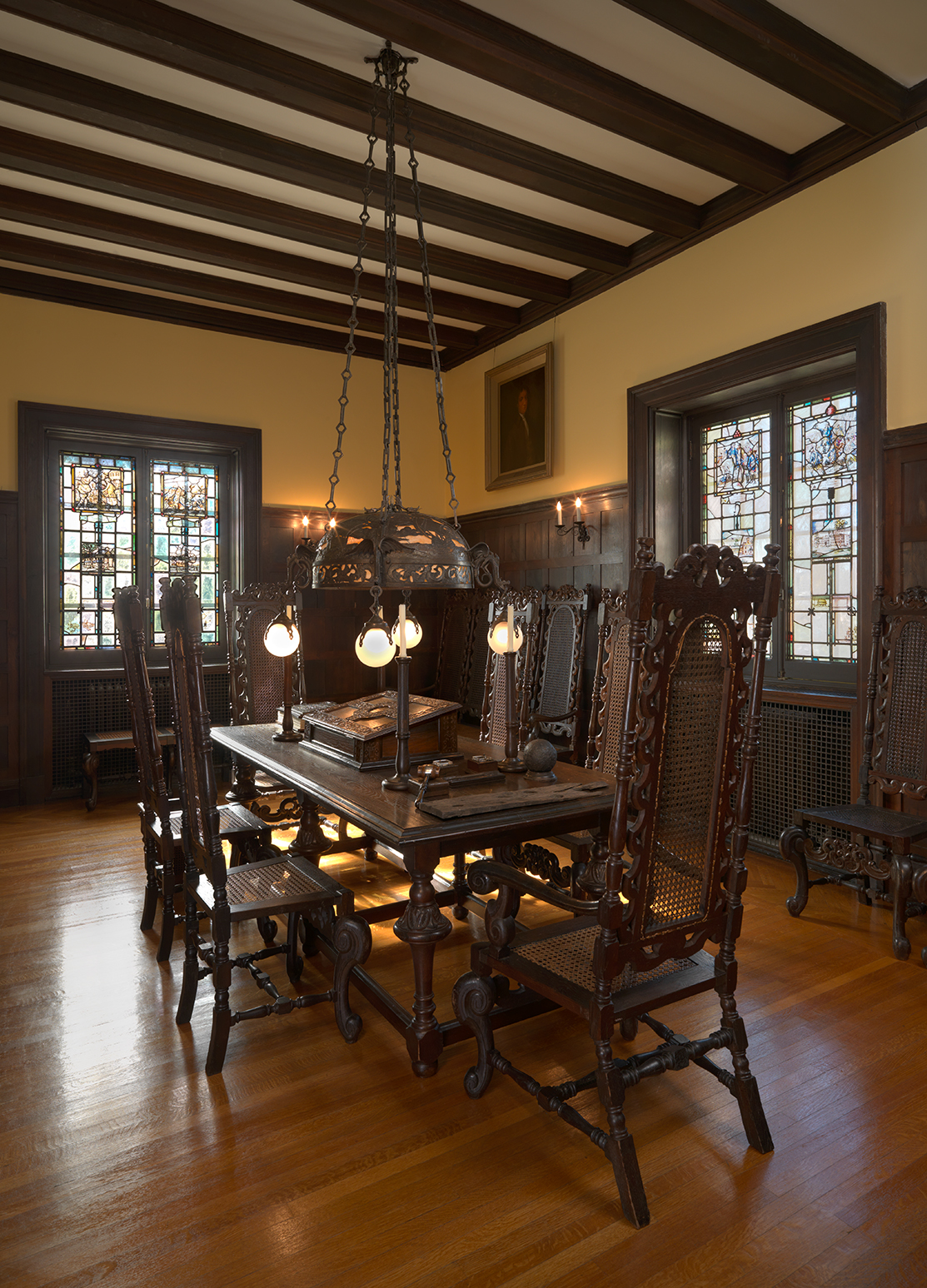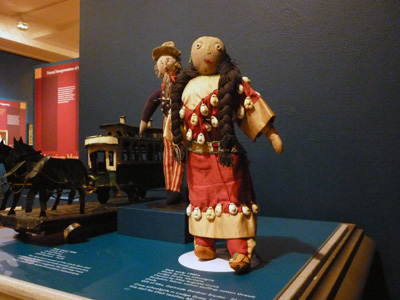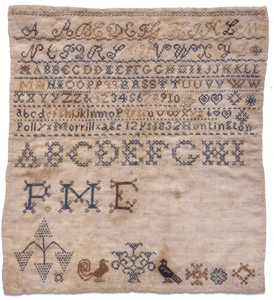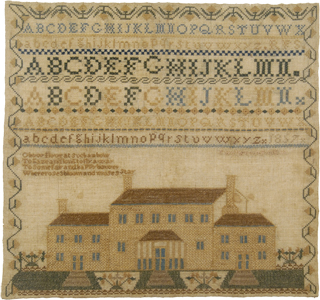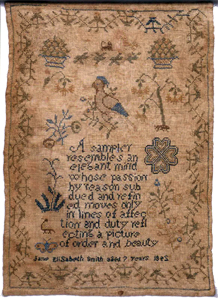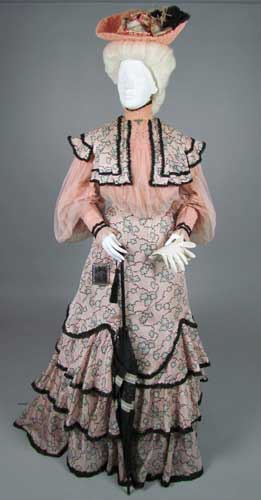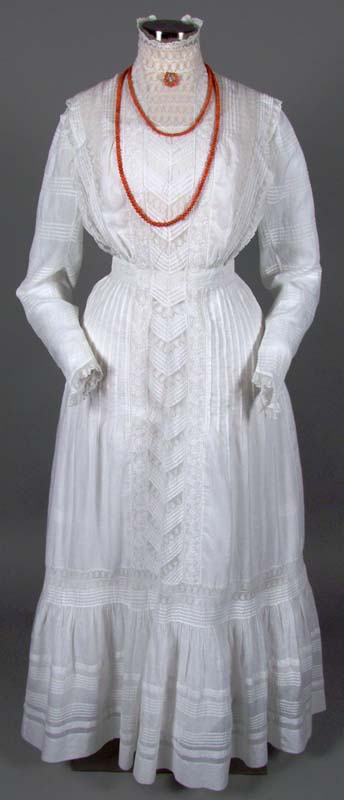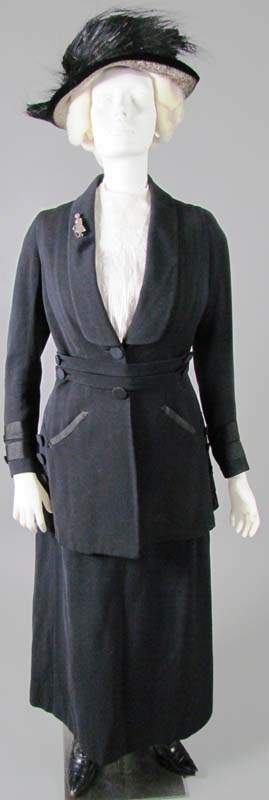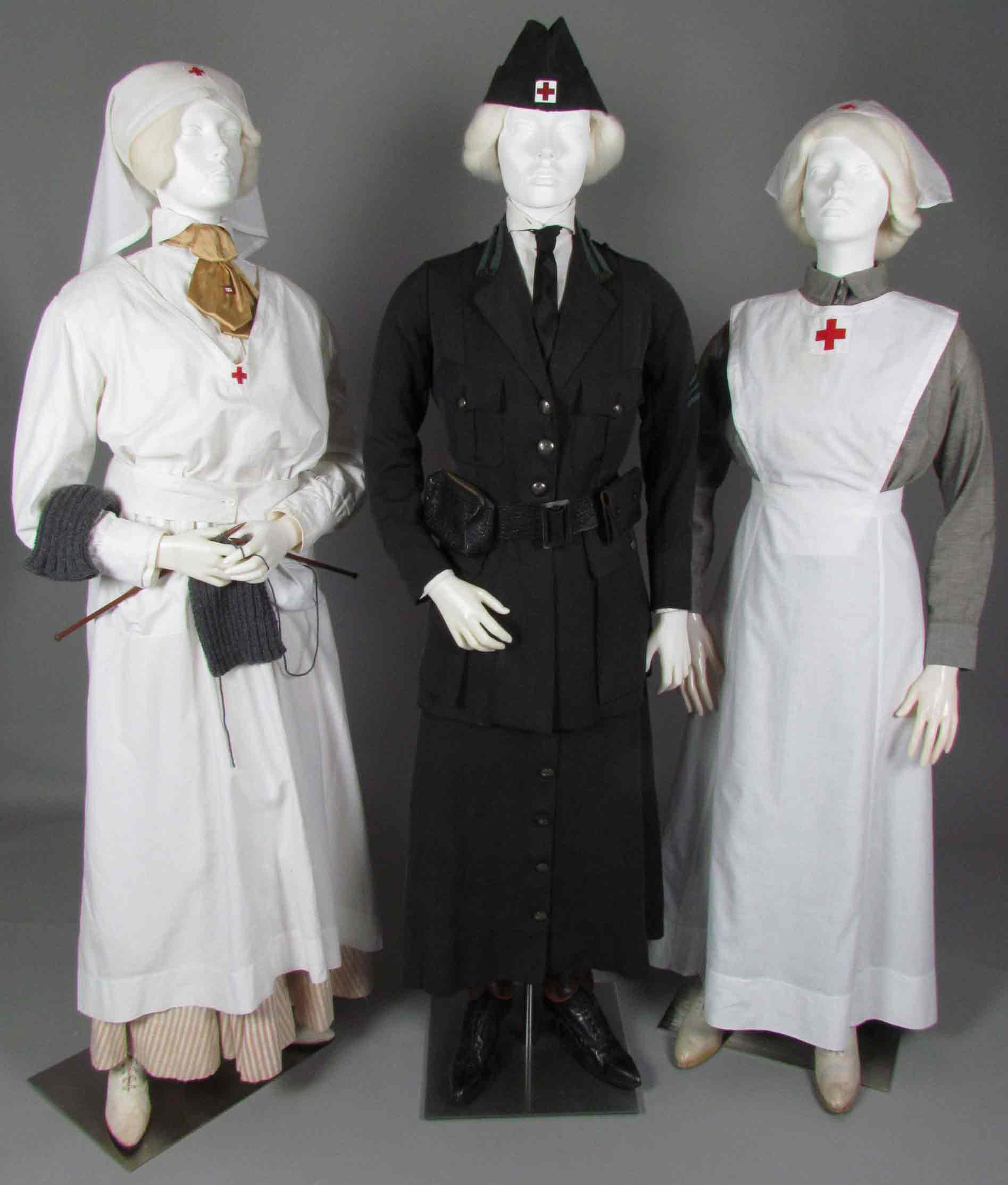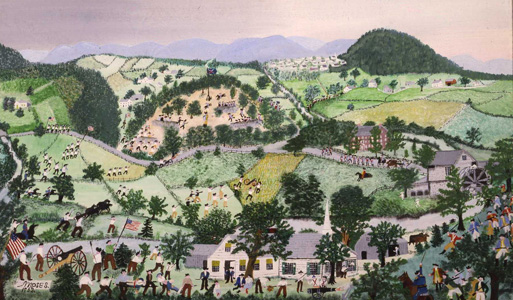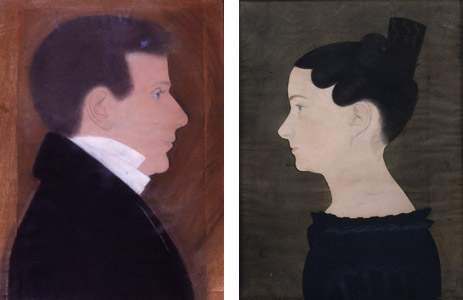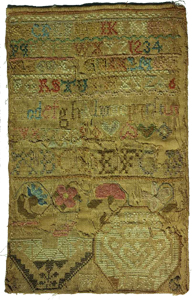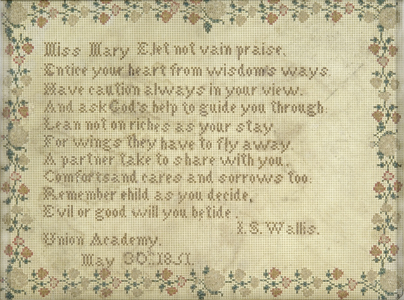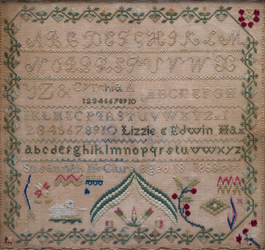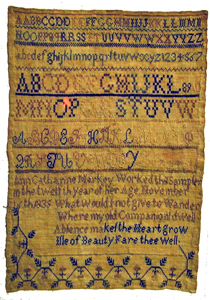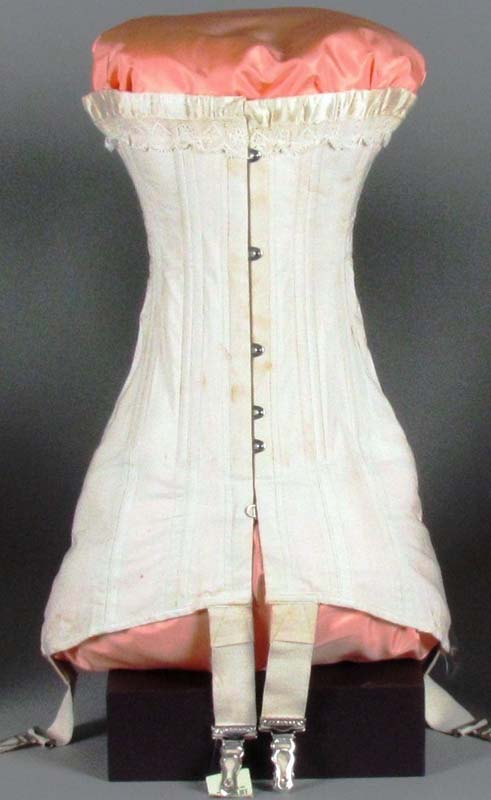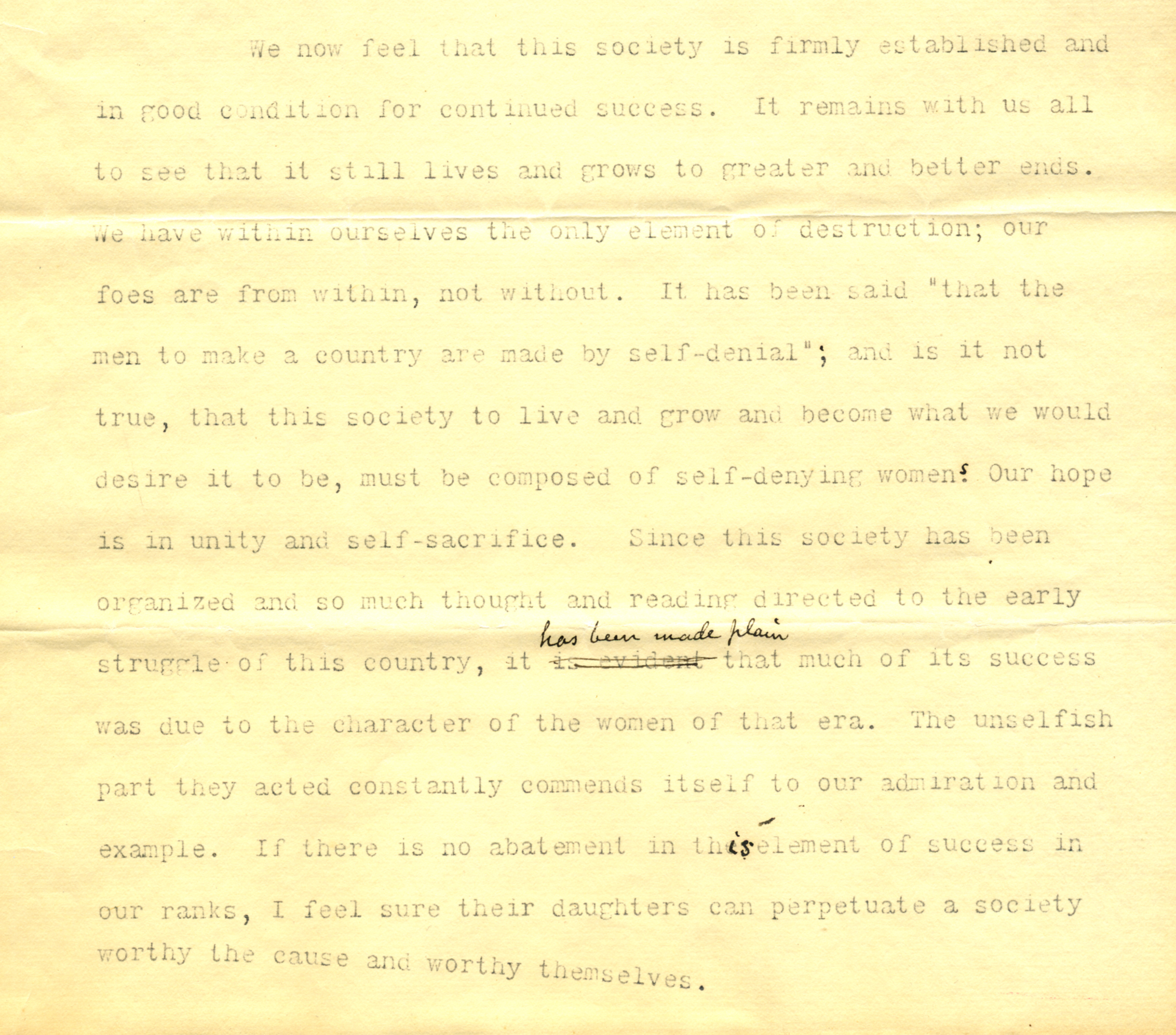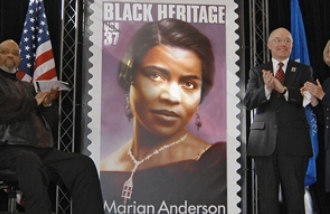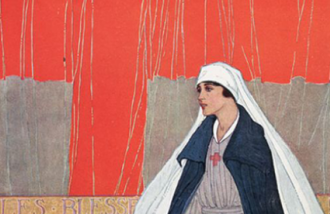This regular feature in the bimonthly DAR magazine, American Spirit, offers a glimpse into the lives and passions of the diverse group of women who comprise today’s DAR membership.

Dazzling Daughters
This exhibit celebrates the lives of DAR members, both yesterday’s and today’s women, whom through diligent application of their unique talents and abilities, have made significant and positive contributions to American or International culture, society, or history. This Website features just a portion of more than 130 DAR Daughters who have received the distinction as a Dazzling Daughter. These women are comprised of first ladies, writers, artists.
Best in Show
When Nancy Prince saw John Trumbull’s “Declaration of Independence” painting on display during a high school field trip to the U.S. Capitol, she thought, “That would make an interesting quilt.”
Mrs. Prince began sewing at the age of 13. She took up quilting in the 1990s but disliked the repetition required of traditional patterns. One hiking trip to the Great Smoky Mountains and one photograph of a waterfall later, and she had stumbled upon a different technique—one that has kept her attention ever since.
“I wanted to make a memento of our trip, and so I tried to put the waterfall onto a quilt,” said Mrs. Prince, a member of William P. Duval DAR Chapter, Winter Park, Florida. “I did a zigzag stitch over the water to give it a little movement.”
March/April 2024
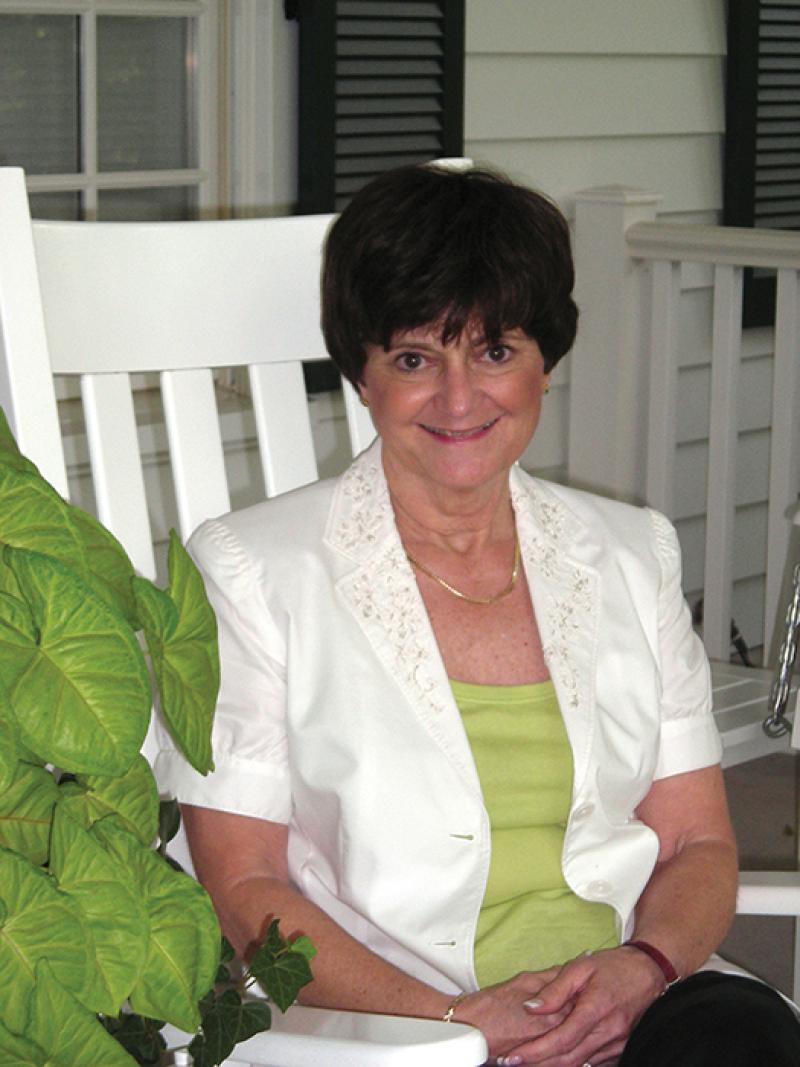
On the Road Again
For 18 years, Beth Szescila participated as an appraiser on PBS’s “Antiques Roadshow.” That means she spent 18 summers crisscrossing the country, sizing up the prized possessions belonging to thousands of everyday people. During her time on the show, she valued decorative arts and textiles, including outfits of famous celebrities Marilyn Monroe and Elvis Presley. But her fondest finds were antique quilts.
An on-again, off-again quilter since childhood, Ms. Szescila specializes in the tedious, time-consuming art of hand quilting, a skill her mother taught her as a child. That is why any time an old quilt came across her “Antiques Roadshow” table, Ms. Szescila would take a special interest.
March/April 2024
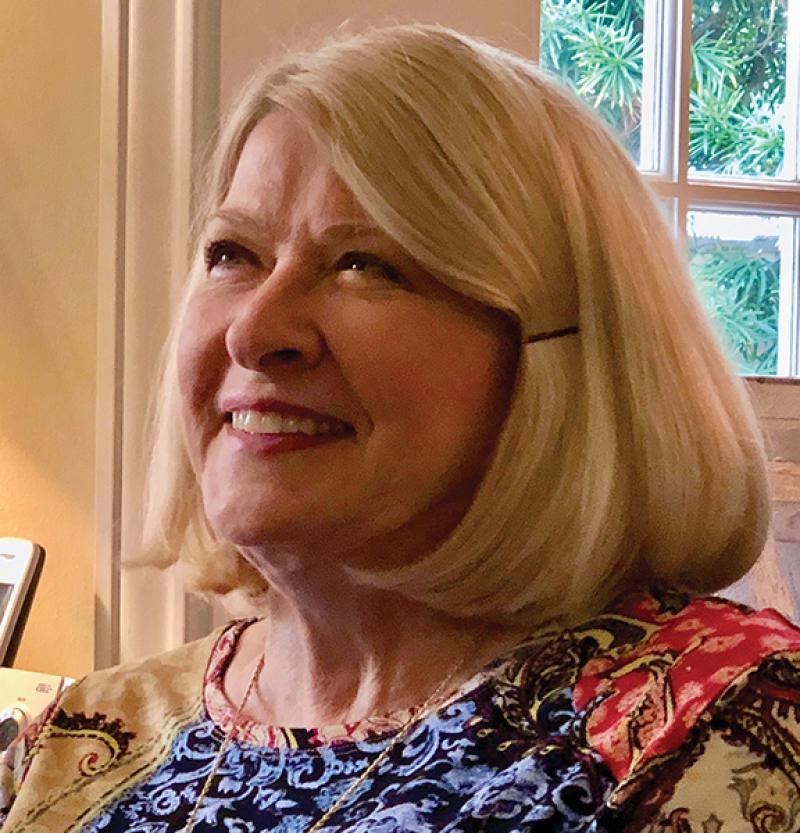
Brenda Mauney Councill first exhibited her artwork at the age of 7. It was a watercolor painting of a bronze statue that she admired in Jacksonville, Florida’s Memorial Park.
“It was a pretty difficult subject matter for that age,” said Ms. Councill, who grew up in Florida but now resides in Blowing Rock, North Carolina, where she is a member of Daniel Boone DAR Chapter. “But even from a young age, I’ve always welcomed a challenge.”
After that initial exhibition at a children’s museum five decades ago, her career as an artist took off. Her work has taken her all over the country and even as far as India.
She has worked in every medium imaginable, including ink and light gauge metal.
“I learned that if you want to make a living in the arts, you have to be proficient in multiple mediums and be flexible in how you use them,” she said. “It’s great to be an artist who creates art for art’s sake, but when it becomes a living, you really have to adapt to different market movements.”
Jan/Feb 2024
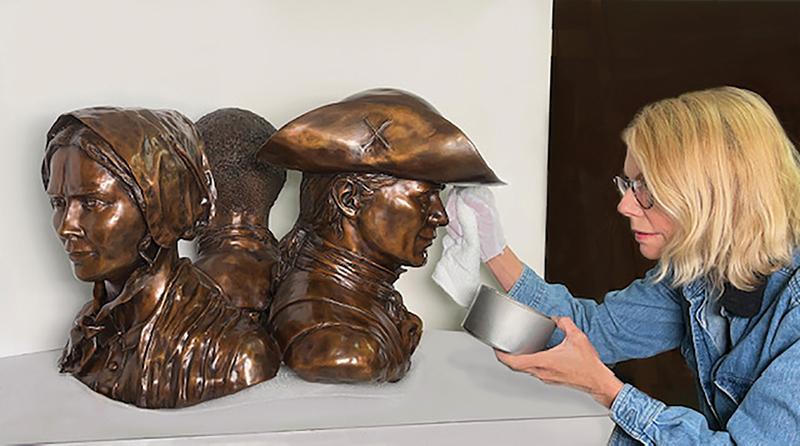
How Creole Descendants Comprise Heart of Louisiana Chapter
Several Patriots hail from Louisiana, thanks to the brazen Spanish governor Bernando de Gálvez, who assembled an army, beat back the British and accidentally aided American independence along the way.
One of these Patriots was Claude Thomas Pierre Metoyer, who had come to Louisiana from France in the mid-1760s, eventually settling in Natchitoches Parish, where he became known as a merchant, plantation owner and father of 10 children by his slave, Marie Thérèse dite Coincoin. Metoyer was part of the company that Gálvez dispatched to Mobile, Alabama, in 1780 to fight the British, according to A Dictionary of Louisiana Biography: Ten Year Supplement 1988–1998, published by The Louisiana Historical Association. The Louisiana Society Sons of the American Revolution and the Louisiana State Society Daughters of the American Revolution honored him as a Patriot on October 7, 2011.
In 2019, the Cane River DAR Chapter, Isle Brevelle, Louisiana, was established with 28 founding members, most of them Creole descendants of Metoyer and Coincoin.
It is not that these women did not know about their lineage. After all, genealogy and history run deep in the tight-knit Isle Brevelle community situated along the Cane River. But perceptions, specifically misperceptions about all DAR does, played an outsize role in the group’s birth, recalled Chapter Regent Peggy Aycock, who suggested they form a chapter of Coincoin’s descendants.
“We were making tamales one afternoon at church and were talking about what we do in our free time,” said Mrs. Aycock, who is not Creole. “I was new to DAR myself, so I told them about the organization and all of the things we do around historic preservation, education and patriotism.”
Next, Mrs. Aycock invited Charlotte White, who was preparing for her term as Louisiana State Regent, to speak at a prospective member workshop. “As State Regent, one of my goals was to help organize chapters to honor all of the different cultural groups we have in Louisiana who contributed to the Revolution,” Mrs. White said. “I knew the Cane River community played a part, but I also knew it might be hard to get them interested.”
Skepticism wasn’t the only sentiment at the meeting; there also was excitement.
“As I listened to the presentation, everything about the DAR mission stood out to me as something that our community could benefit from,” said Nicol Delphin, Chapter Corresponding Secretary. “They spoke of historic preservation grants we could apply for, scholarships we could award to our youth, and patriotic ceremonies we could have for our servicemembers, past and present.”
It was enough for Mrs. Delphin to stand up and announce to her fellow Metoyer descendants: “I think we need this.”
From there, Mrs. Aycock and Mrs. White worked to obtain wills and death certificates, traveling to cemeteries to take pictures of headstones—whatever it took to prove lineage for as many interested Metoyer descendants as possible. “The rest is history,” Mrs. Aycock said. “This is the best group of ladies imaginable. They are so loving and easy to work with and are always up for an adventure, a challenge or both.”
There is Mrs. Delphin, of course, and Minnie Metoyer, Mrs. Delphin’s mother and Cane River Chapter Chaplain. Several members also mentioned Carolyn DunnMiller, whose professional experience in computer and internet technology consulting translates into every chapter meeting being recorded and streamed for faraway members in places including California, Ohio and New York. Bianca Alexander performs her Chapter Recording Secretary duties from New Mexico, where she is a principal at a Navajo school outside Albuquerque. Nazy LaCour is the resident baker who infuses every cake she makes with love and kindness.
And the chapter is growing. An Application was verified this spring, and two more are pending. “I want to help anyone who is a descendant of Coincoin become a member of DAR because I think it’s such a win-win,” Mrs. Aycock said. “Joining DAR is a way to celebrate your individual connection to our nation’s founding. It’s also a way to make sure DAR reflects the great diversity of the people who made it possible.”
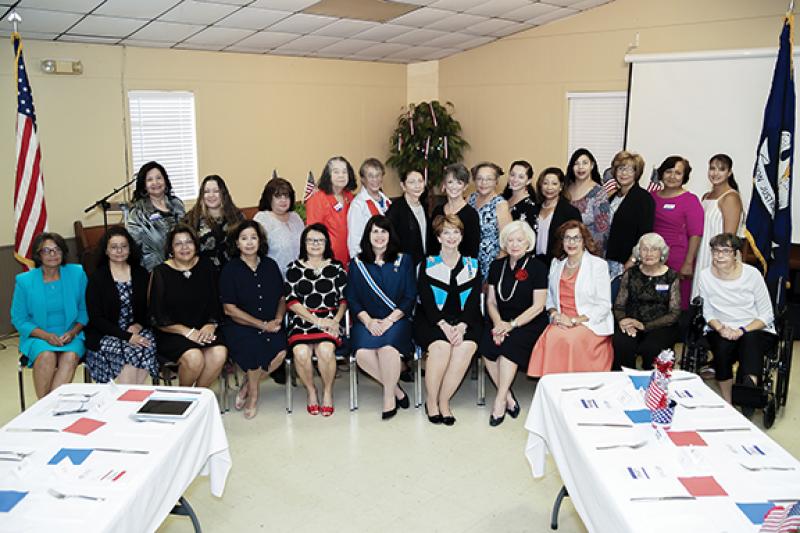
Telling Her Story
Women’s Military Memorial president looks to fellow DAR members to help collect stories of women, past and present, serving our nation.
The Women’s Military Memorial, located at the ceremonial entrance of Arlington National Cemetery, has a long-standing history with DAR. In fact, it traces all the way back to one of the DAR’s founding objectives: to perpetuate the memory and spirit of the men and women who achieved American Independence.
In 1898, the DAR Hospital Corps certified 1,081 nurses for service during the Spanish-American War, and those nurses became some of the first women to serve officially in the U.S. military. The Women’s Military Memorial’s founder and first president, retired Air Force Brigadier General Wilma L. Vaught, is a DAR member. The memorial’s current president, retired Command Chief Warrant Office Five for the Army Reserve Phyllis Wilson, is as well.
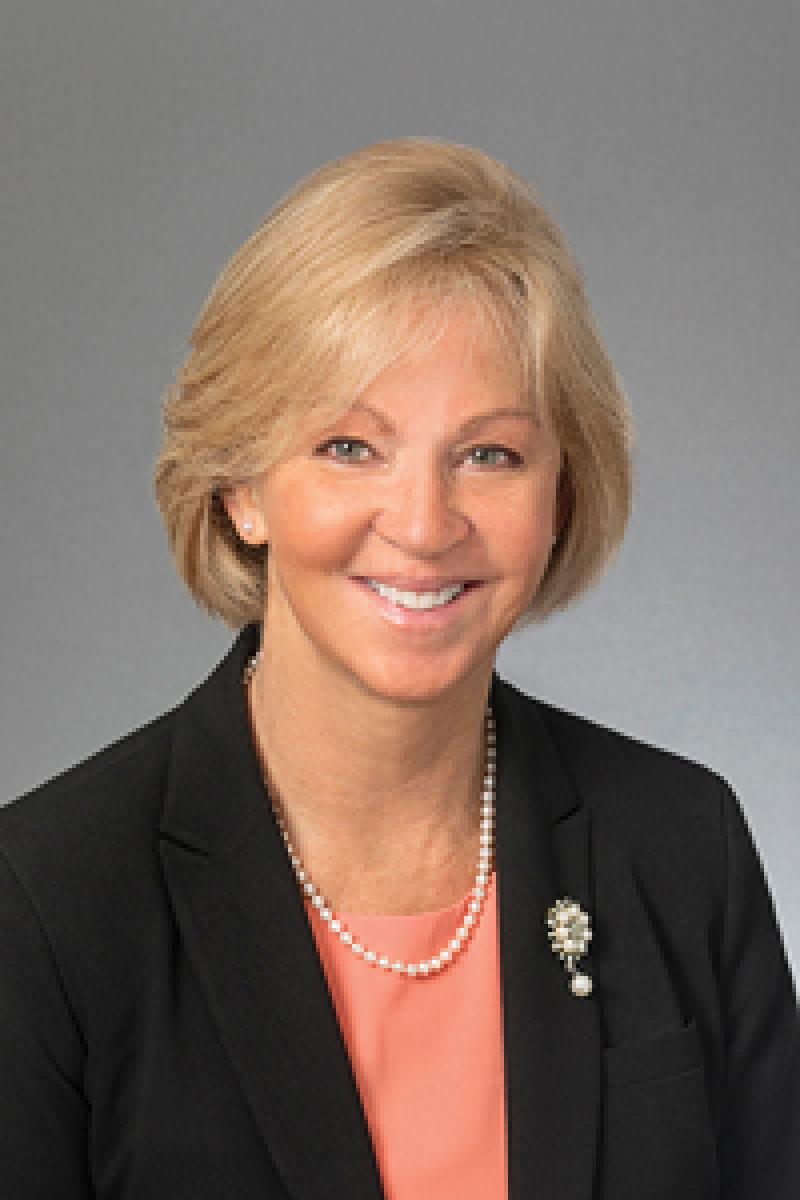
Story of Her Life
Florida Daughter Kitty Slattery’s writing career spans five decades and countless inspirational stories.
When Kitty Slattery looks back on her career as an inspirational writer and the hundreds of articles and many books that she has authored since 1977, a few projects stand out as particularly memorable to her.
One is the essay she wrote in the aftermath of 9/11. At the time of the attack, she was on a New York City train making her way to the Guideposts office, as she did every other weekday morning. A typical morning quickly turned into anything but as she scrambled to get in touch with family members, including her husband, Tom, who also worked in the city, and her daughter, Katy, who was then a student at New York University.
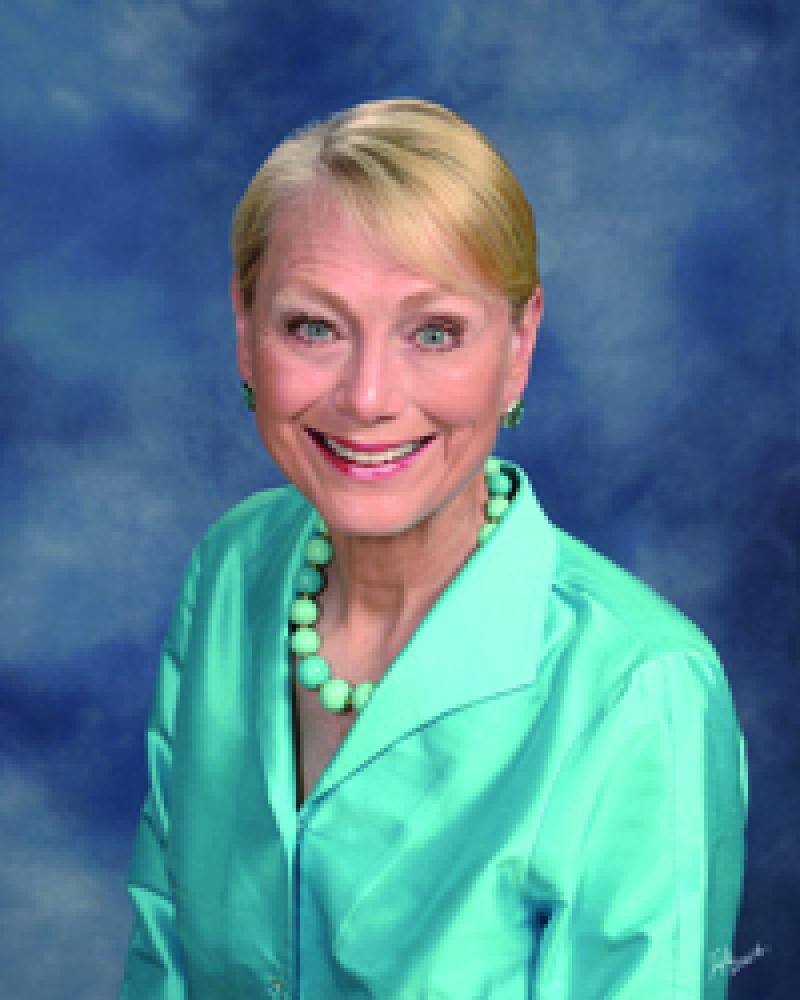
This Precious Life
At 92 years old, this Nevada Daughter shares why she’s not slowing down.
Loretta Young Eichelberger has a lot she could complain about. The year she was born—1930—was the same year severe dust storms began in her home state of Oklahoma. She was 11 when Pearl Harbor was bombed, and she can still remember exactly where she was when she overheard the news on her father’s radio. She has been divorced, widowed and widowed again. She has been a foster parent to more than 200 children. But none of that has slowed her down.
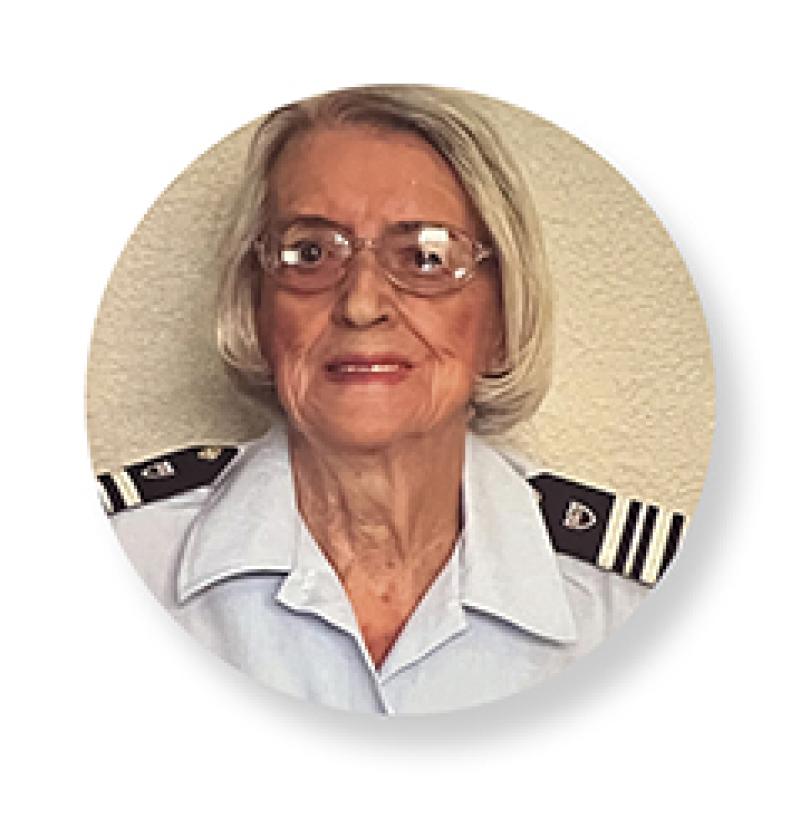
When Michelle Campbell Johnson decided to pursue electrical engineering at Michigan State University, her reasons had less to do with the actual field but more to do with its opportunities and her cousins.
“I had two cousins who were engineers—one in mechanical and one in chemical,” she said. “I decided I wanted to do something different from them.”
November/December 2022

Give it Arrest
When Jana Cates took a civilian job with the Arapahoe County Sheriff’s Department, which covers more than 800 square miles south and east of Denver, Colo., it didn’t take her long to realize that the sheriff’s deputies were doing much of the same work for a lot more money. She never saw herself in a law enforcement role, but adding some risk for more earning potential was a calculation she was willing to make.
“I figured the worst they could do was tell me thanks but no thanks,” she said.
They did not, and 18 months later, after taking written tests, personality tests, and physical and mental fitness tests, and graduating from the training academy, she was officially commissioned as a sheriff’s deputy.
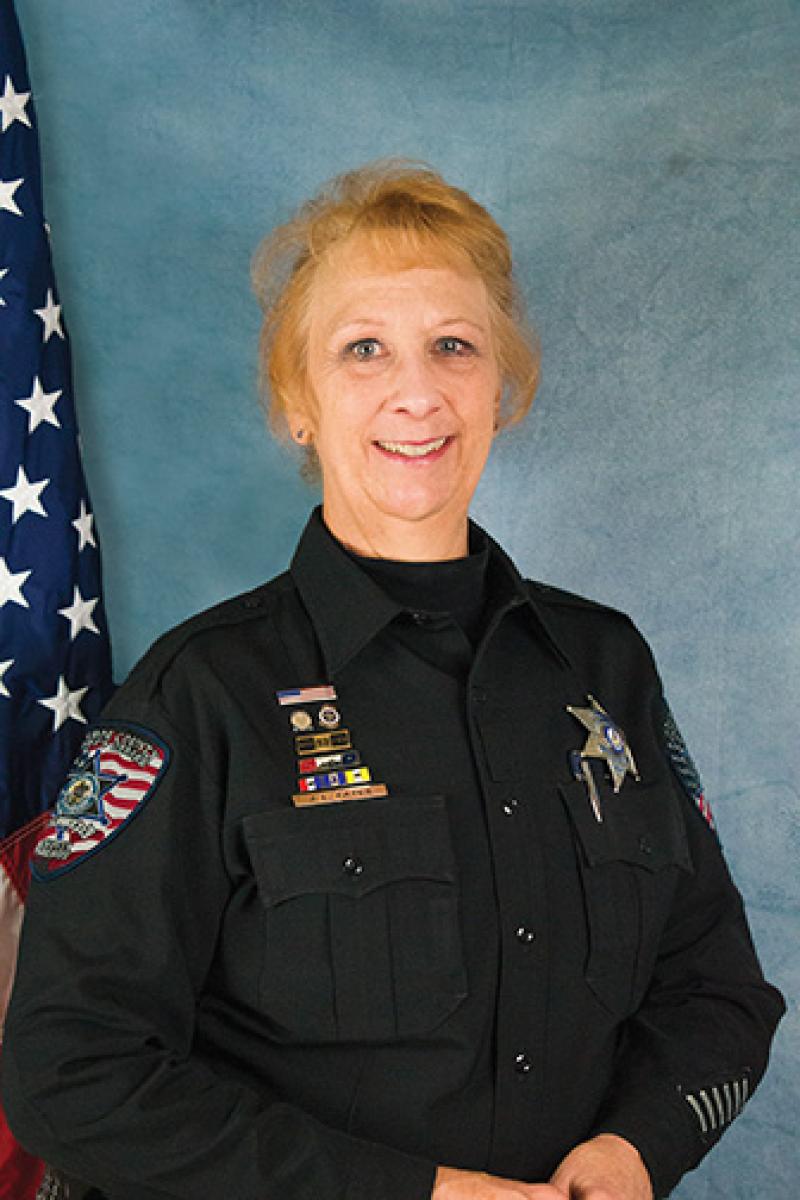
Family Reunion
Kate Kelley can still recall that funny feeling she got when she saw a box of family photos for sale at an antique store. “Being the genealogy enthusiast I am, my heart stopped,” she said. “These are someone’s relatives, and there’s a price tag on them?” Actually, there’s a market for these photos and memorabilia. “People buy other people’s family photos for all sorts of reasons,” the member of the Attleboro DAR Chapter in Attleboro, Mass., said. “They use them in art projects. They frame them as art. Some people will even pass them off as their own ancestors.”
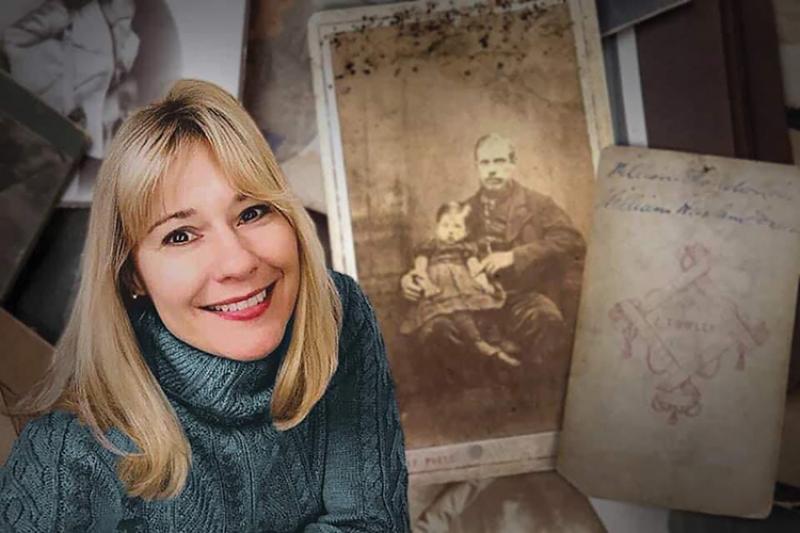
Independence Advocate
Sometimes the best ideas come when you least expect them. That was true for Mary Harroun, who was reminiscing about her son enjoying his baby walker when a lightbulb went off: What if she could take the concept of a baby walker and adapt it into a wheelchair alternative for adults?
As a geriatric recreational therapist and former nursing home administrator, Ms. Harroun saw firsthand how restrictive wheelchairs were for elderly residents who are not allowed to walk on their own. Wheelchairs offer limited independence for users, but also lead to muscle atrophy and pressure sores. Traditional walkers work best for those who just need a little bit of help getting around.
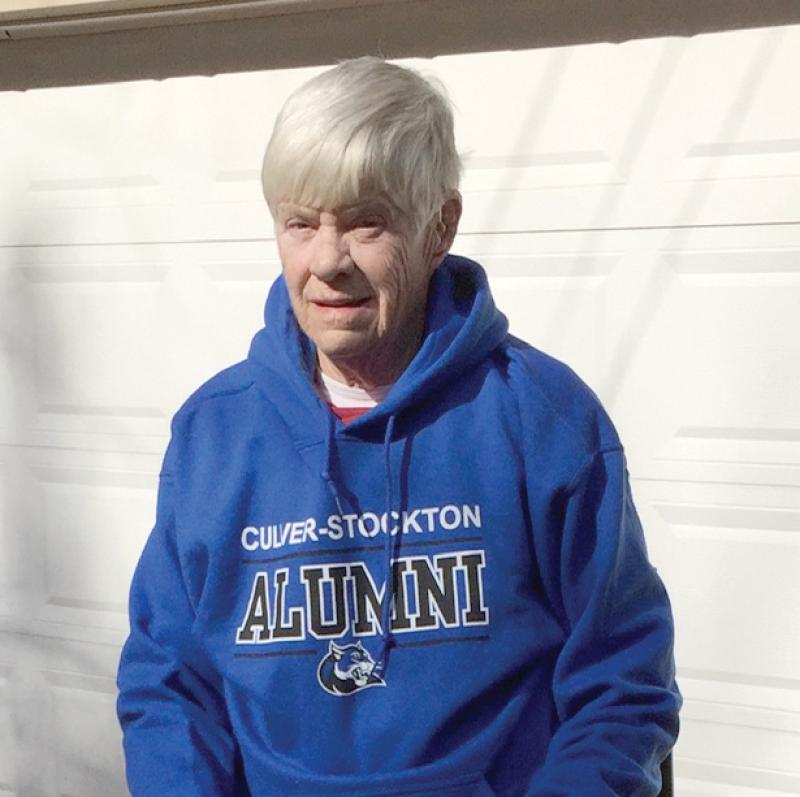
Making Her Mark
Dr. Priscilla Grew was 8 years old when she fell in love with geology. A summer vacation to Aspen, Colo., and one glimpse of the picturesque Maroon Bells later, she was captivated. On a return trip to the area after her freshman year at Bryn Mawr College, she met a geologist who explained how this pair of purplish peaks formed: by sedimentary rocks being uplifted from below the Earth’s surface.
“Until then, I had always thought of geology as something you do as a hobby or something you get to enjoy on vacation,” said the member of Lucy Wolcott Barnum Chapter, Adrian, Mich. “I didn’t realize it could be your job.”
March/April 2020
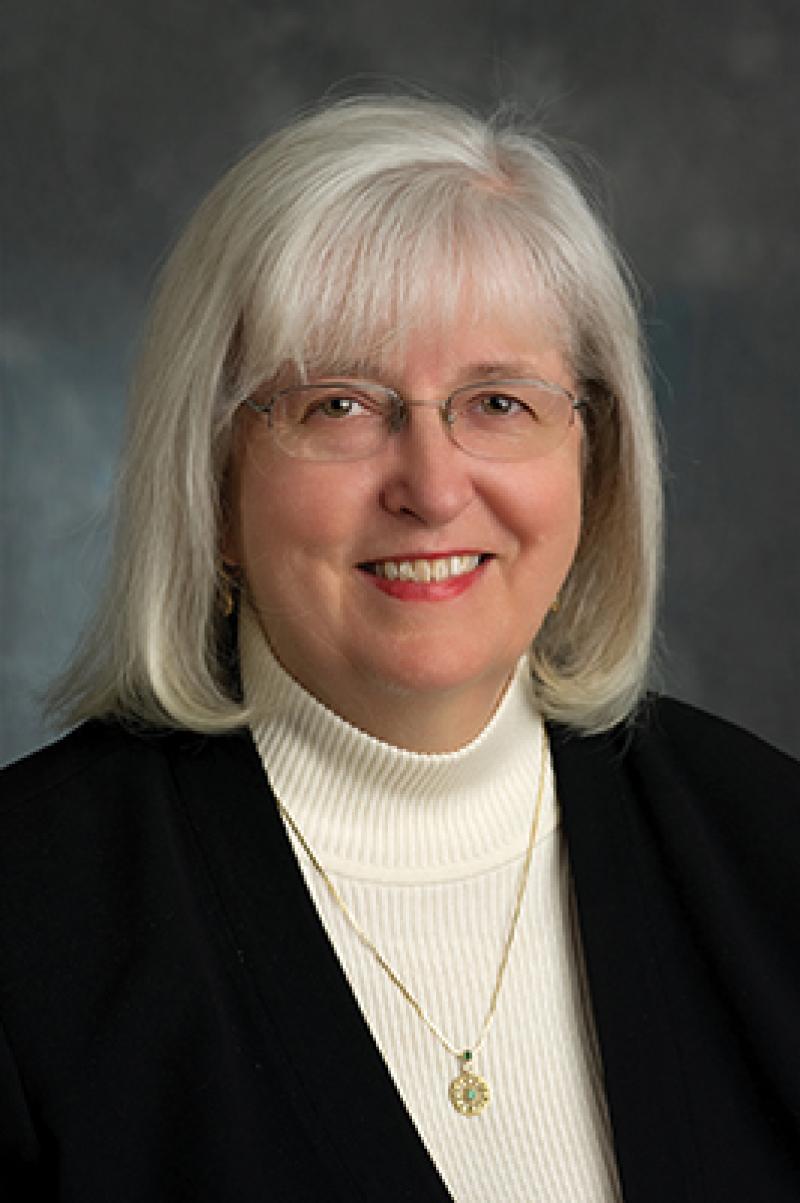
Genealogy for Life
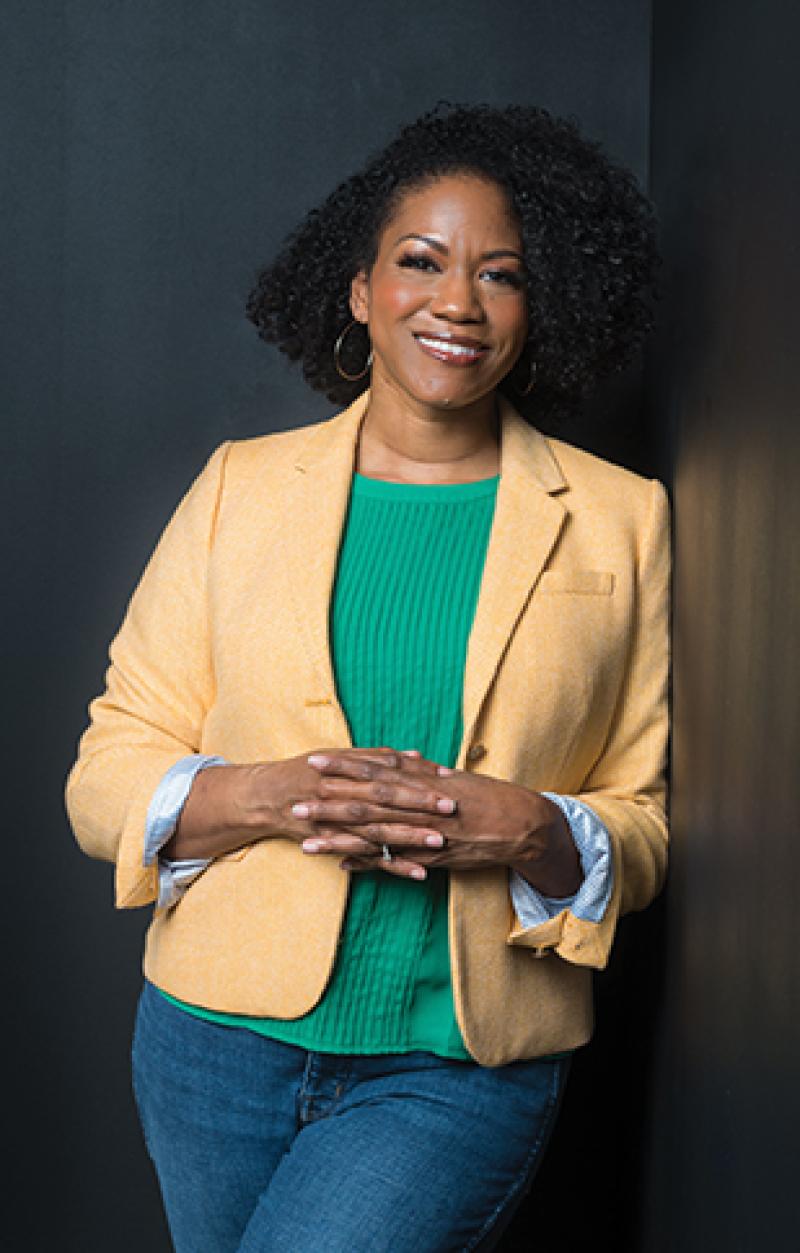
Above and Beyond
Victoria Vanderhaden was 13 when her answer to “What do you want to be when you grow up?” came into clear focus.
She was on a boat and decided right then that she wanted to join the U.S. Coast Guard, which is the principal federal agency responsible for maritime safety, security and environmental stewardship in U.S. ports and inland waterways.
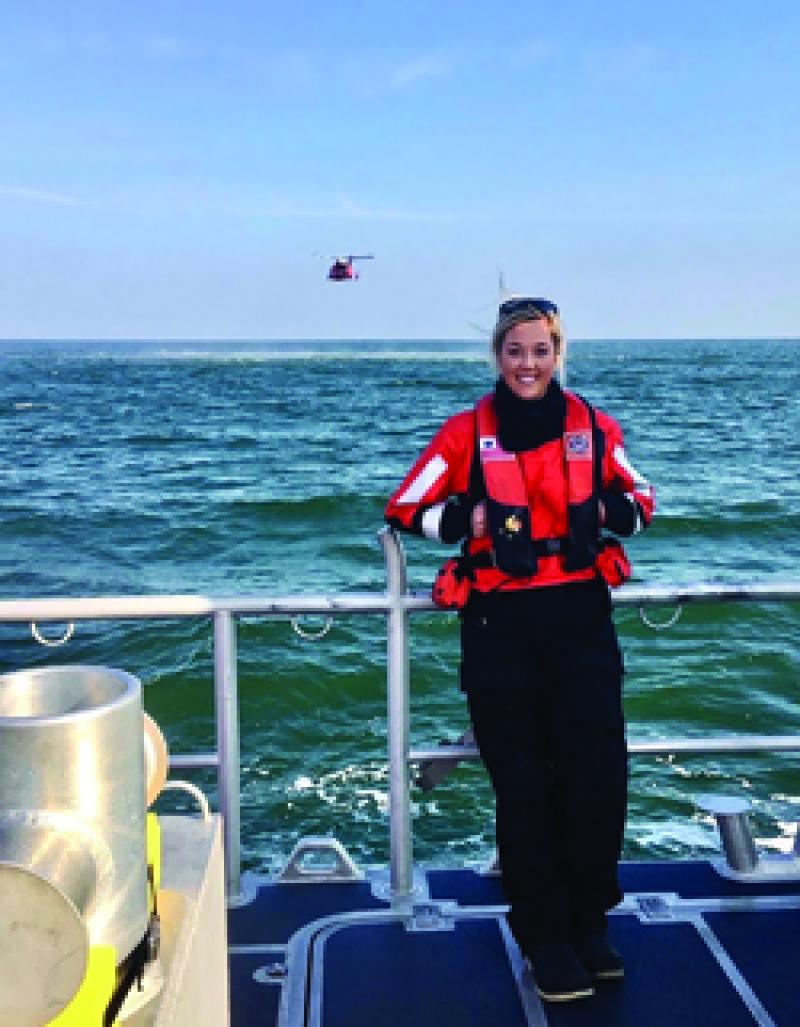
Genealogical Gems
Vero Beach, Fla., is known for its long stretches of beaches, historic downtown and …genealogy library? It’s true. In fact, the town has about twice as many genealogical titles housed in the Indian River County Main Library’s genealogy department as it does residents. It’s a source of pride for Michelle Wagner, who serves as the genealogy librarian, and Carol Robinson, a longtime volunteer.
“You name it, we probably have it,” said Ms. Robinson, who, along with Ms. Wagner, is a member of the Treasure Coast Chapter, Vero Beach, Fla. “It doesn’t matter where a patron is from. It could be Connecticut or Indiana or Ohio. We likely have something to help them.”
July/August 2021
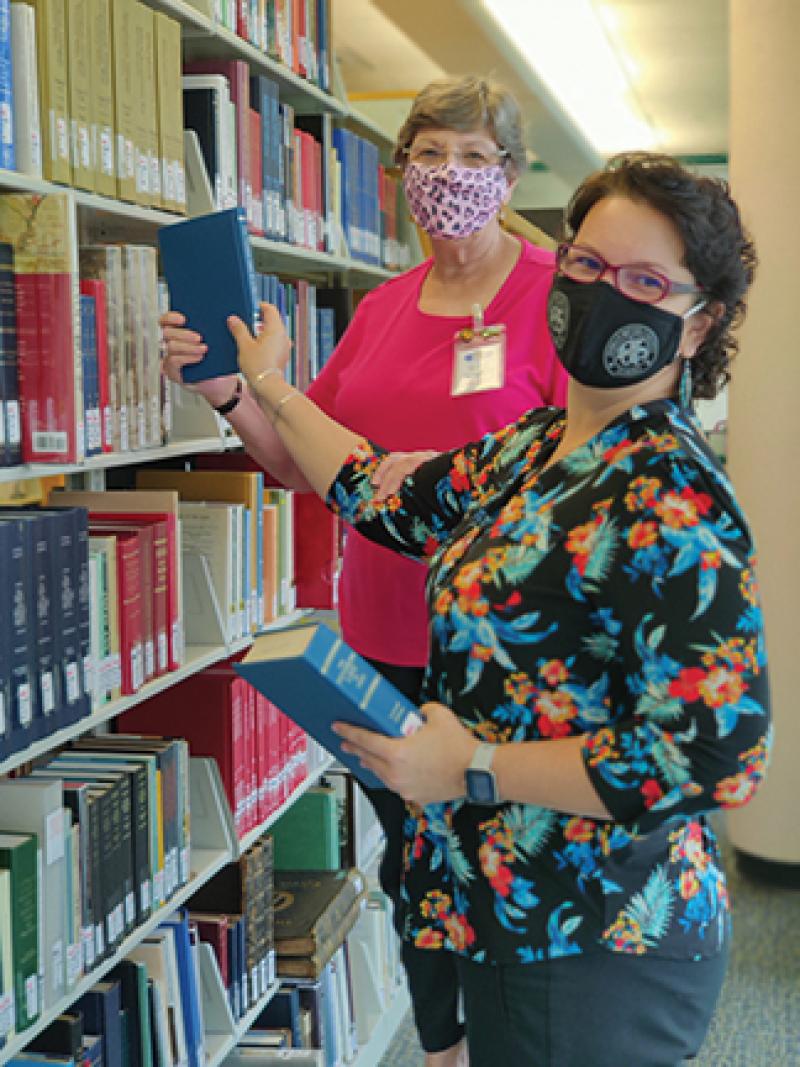
Always Ready
It happened nearly 50 years ago, but Edna Reinard recalls it as if it was yesterday. She and her brother were on the school bus en route to their home when a neighbor stopped the bus driver and summoned the siblings off. Their father had just died after suffering a massive heart attack at home, and their mother didn’t want them walking into the house unprepared.
“I knew he had a massive heart attack and there was nothing anyone could have done, but in the back of my mind, I always thought, what if someone had known CPR?” said Ms. Reinard, a member of Fort Augusta DAR Chapter, Sunbury, Pa.
September/October 2021
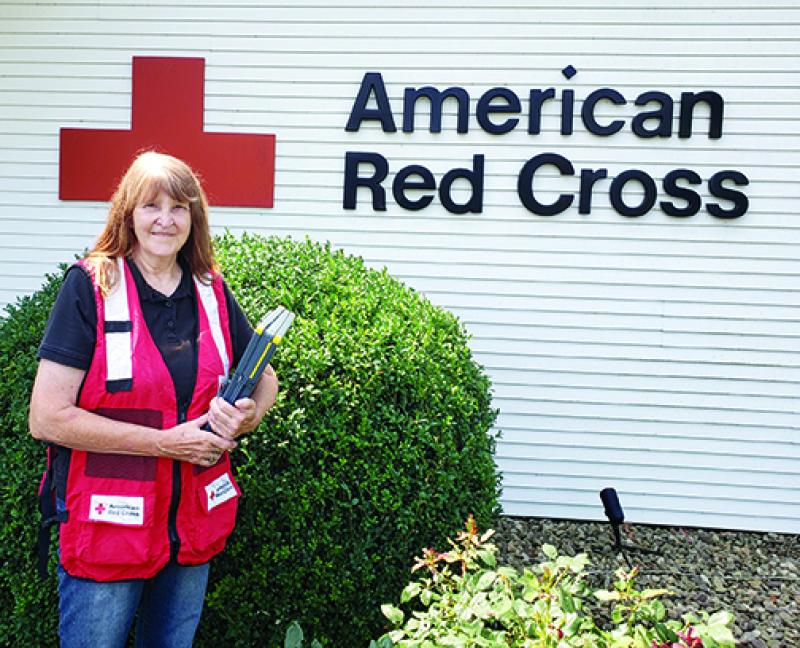
Genealogical Gems
Vero Beach, Fla., is known for its long stretches of beaches, historic downtown and …genealogy library? It’s true. In fact, the town has about twice as many genealogical titles housed in the Indian River County Main Library’s genealogy department as it does residents. It’s a source of pride for Michelle Wagner, who serves as the genealogy librarian, and Carol Robinson, a longtime volunteer.
“You name it, we probably have it,” said Ms. Robinson, who, along with Ms. Wagner, is a member of the Treasure Coast Chapter, Vero Beach, Fla. “It doesn’t matter where a patron is from. It could be Connecticut or Indiana or Ohio. We likely have something to help them.”
July/August 2021

Genealogical Gems
Every genealogist, whether a hobbyist or a professional, can recall that moment when the spark took hold. For Ann Hecht, it was listening to her 97-year-old grandfather tell stories about his childhood. “I always knew my family history,” she said. “I was just surprised that everyone did not know theirs.”
The spark came much later for Cindy Frederick, who works alongside Ms. Hecht at the McGrady-Brockman Genealogical Library in Vincennes, Ind. “I grew up not knowing anything about my family history,” she said. “I was an adult by the time I was helping my mom learn who our family connections were. I got hooked, and I just can’t let it go. I love it, and I love helping anyone who needs help with their genealogy.”
July/August 2021
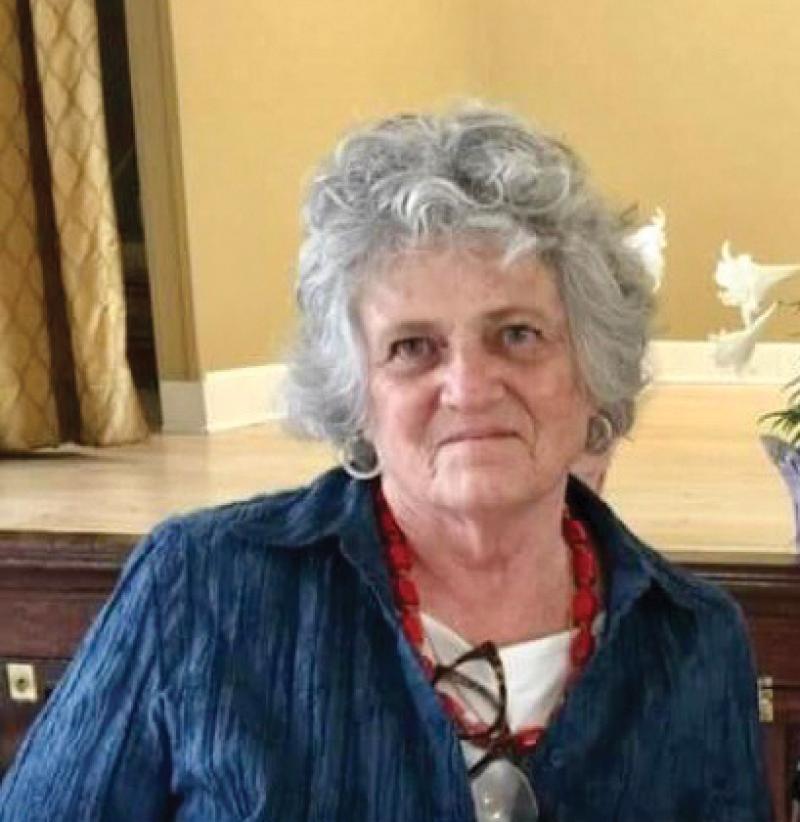
Genealogical Gems
Every genealogist, whether a hobbyist or a professional, can recall that moment when the spark took hold. For Ann Hecht, it was listening to her 97-year-old grandfather tell stories about his childhood. “I always knew my family history,” she said. “I was just surprised that everyone did not know theirs.”
The spark came much later for Cindy Frederick, who works alongside Ms. Hecht at the McGrady-Brockman Genealogical Library in Vincennes, Ind. “I grew up not knowing anything about my family history,” she said. “I was an adult by the time I was helping my mom learn who our family connections were. I got hooked, and I just can’t let it go. I love it, and I love helping anyone who needs help with their genealogy.”
July/AugustJ 2021
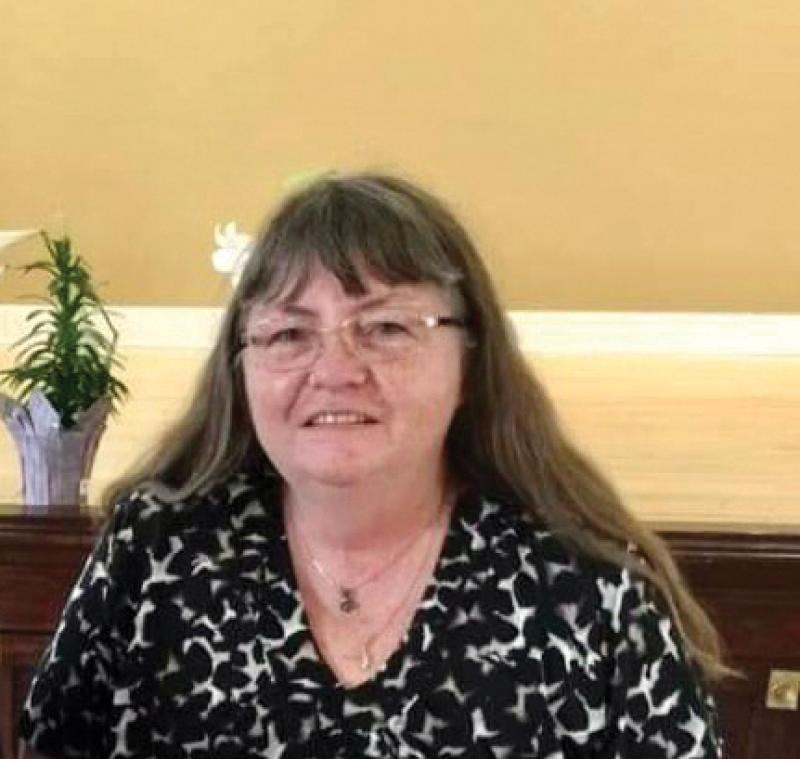
Genealogical Gems
When Donna Moore lost her job in finance in 2018, she was devastated. Looking back now she recognizes what an opportunity it was.
“As hard as that time was, it opened up a brand-new door for me,” said the member of Captain Nathaniel Mills Chapter, Hurst, Texas.
Ms. Moore went back to school to pursue her dream of becoming a librarian. After graduating with a master’s degree in library science in 2020, she started working as a librarian assistant at the Bedford Public Library, outside Dallas. As soon as she arrived, she began advocating for a genealogy department.
“Our library does not have one because two of the libraries around us already do,” she said. “It doesn’t mean we have to carry the same type of records, but I know there is such a demand for this, not just in our community but in every community.”
July/August 2021
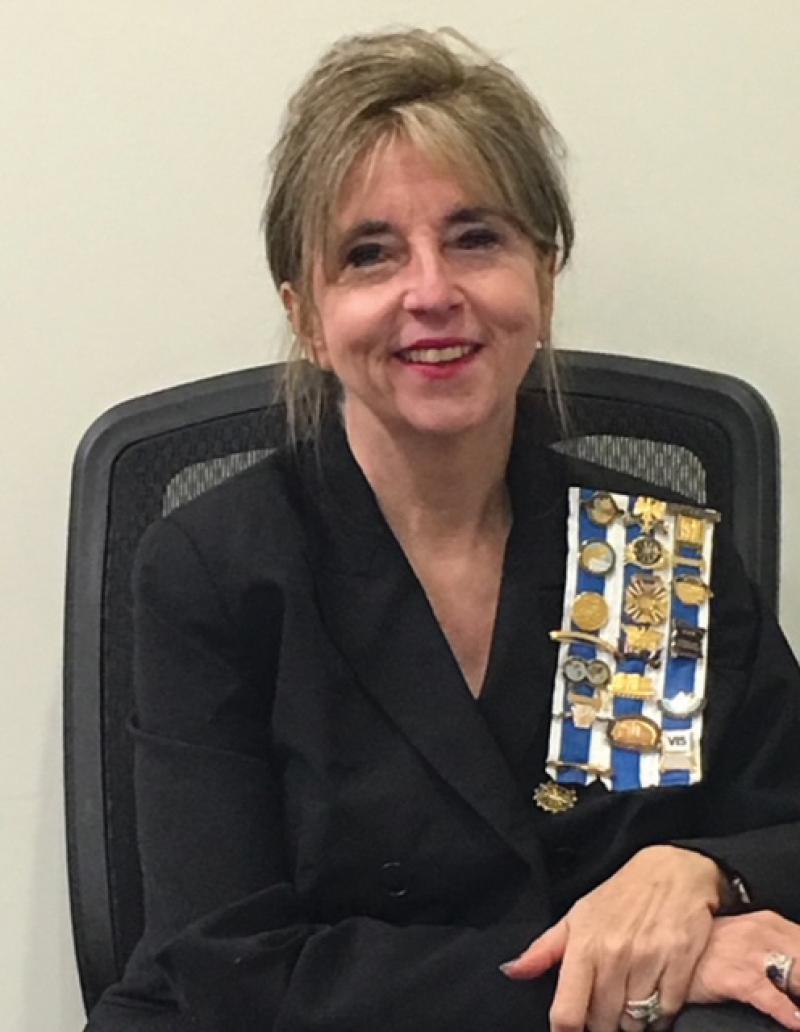
Genealogical Gems
Judy Engelhart caught the genealogy bug when she was in the seventh grade. “We had to do a project, and one of the options was to do your family history,” she said. “All the other prompts seemed really boring, so I picked that one.”
Her grandmother directed her to an aunt, who sent Mrs. Engelhart a handwritten family tree that dated to the 1600s. “There was a note that said, ‘By the way, you could join DAR,’ but it meant absolutely nothing to me at the time,” said the member of the Cheyenne Chapter, Cheyenne, Wyo.
Mrs. Engelhart believes a genealogist’s work is never done, which explains why she has been working on her family tree since she was 13. “I have not even broken my own brick walls,” she said. “When I get stuck on my own research, that’s when I love to help someone else, even if I can just be a small cog in the wheel and find one document they need.”
July/August 2021
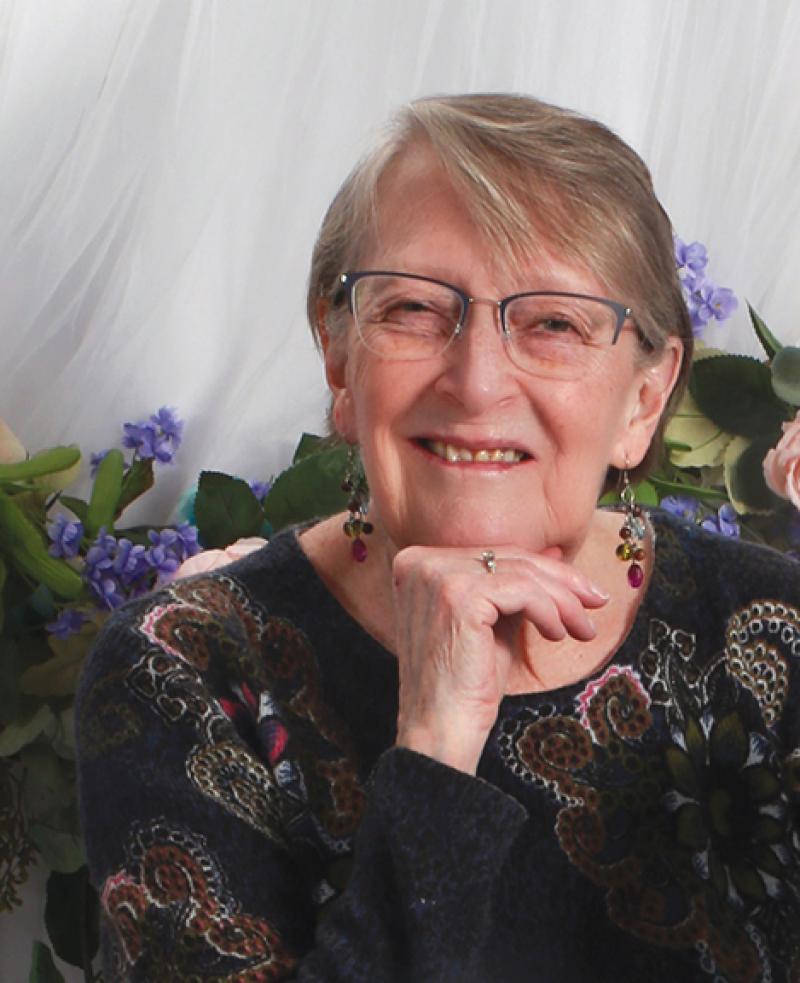
Full Speed Ahead
What does Regina Jaquess love most about water skiing? It is not the feeling she gets when she nails a jump that sends her nearly 200 feet through the air. It is not the 14 gold medals she has won at the Pan American Games and the Water Ski World Championships. It is not even that she holds the women’s world record for slalom skiing. What she loves most about the sport is the community.
May/June 2021
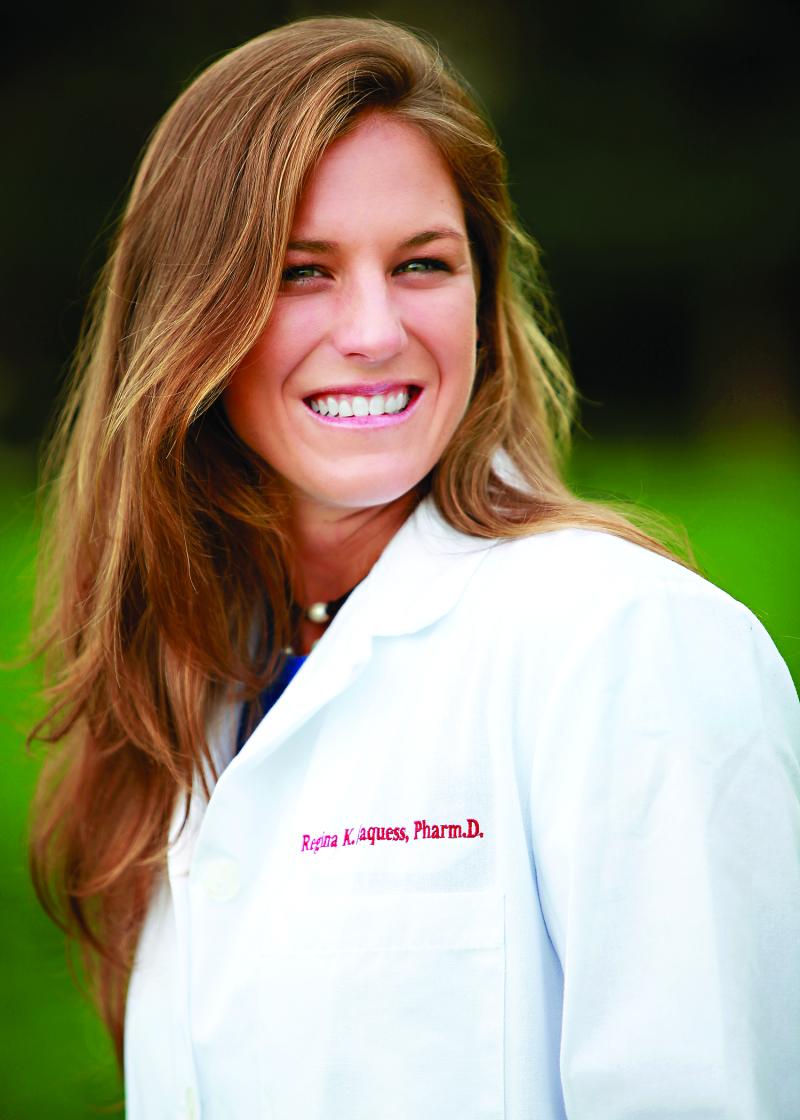
Judge of All Trades
Many words could describe Ada Brown’s legal career. Impressive would be one, given the fact that she’s one of the youngest women to ever hold a federal judicial seat. Interesting would be another. Judge Brown, who is African-American and a member of the Choctaw Nation, has worked on all sides of the law over the course of her 21-year career. She has been a criminal prosecutor, a civil litigator, a law professor, a trial court judge, an appellate court justice and now, since 2019, a U.S. district judge in the Northern District of Texas.
The variety has been surprising, even to her.
March/April 2021
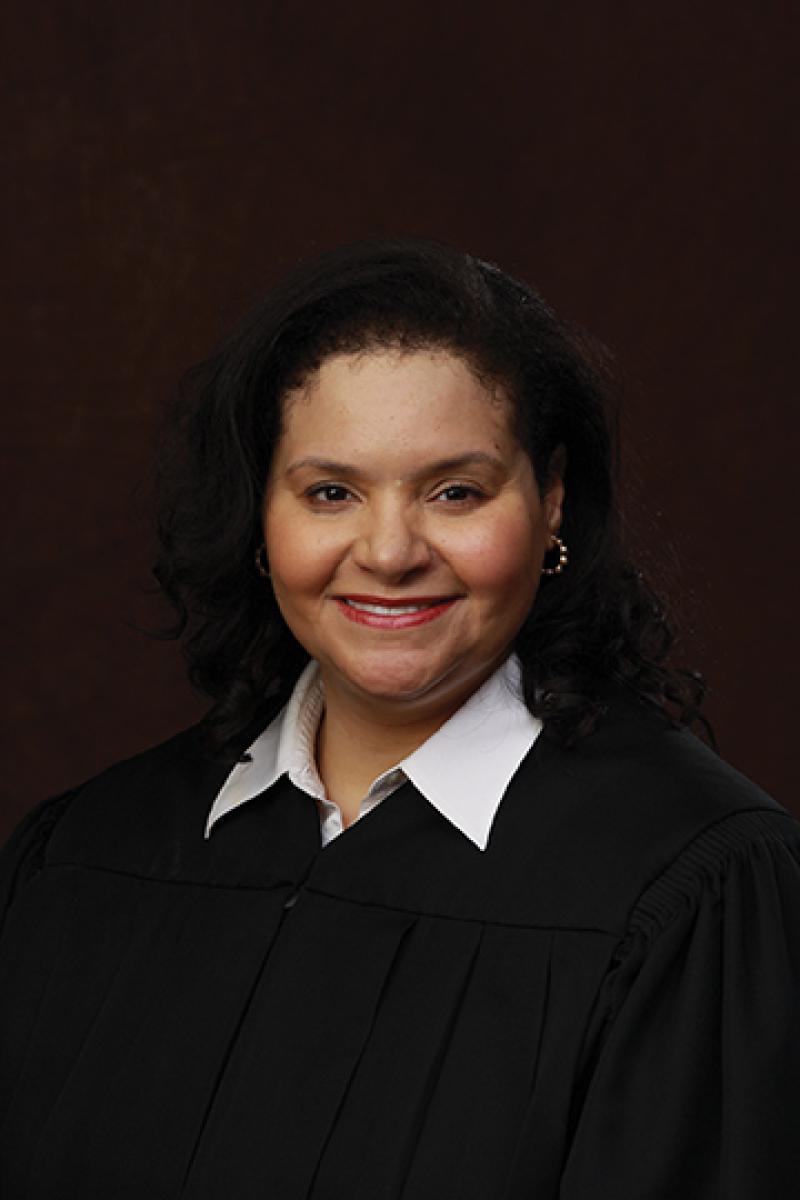
Lightbulb Moments
North Carolina Daughter combines creativity and imagination with historic preservation
Gay Chatham knows that historic homes tend to attract a certain type of patron, one who is typically older and has a heart for historic preservation. While she admits that she fits the profile, she’s also working hard to change it.
Read the full article here
January/February 2021
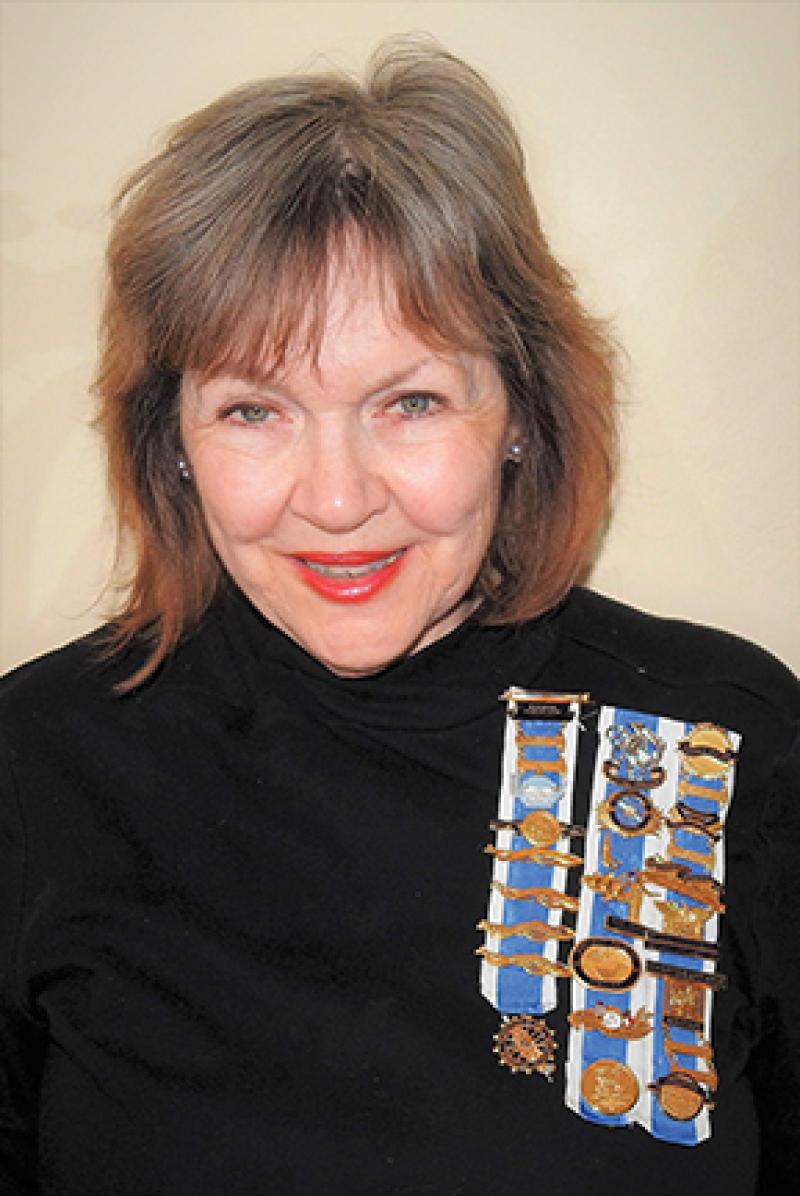
A Call to Service
Daughter preserves and uplifts the service and achievement of military women from the past, present and future
As a state ambassador for the Women in Military Service for America Memorial, Command Chief Warrant Officer Five for the Army Reserve (Retired) Phyllis Wilson was one of the first to hear about the organization’s search for a new president this past year. She also was one of the first to downplay her own qualifications for the role.
November/December 2020
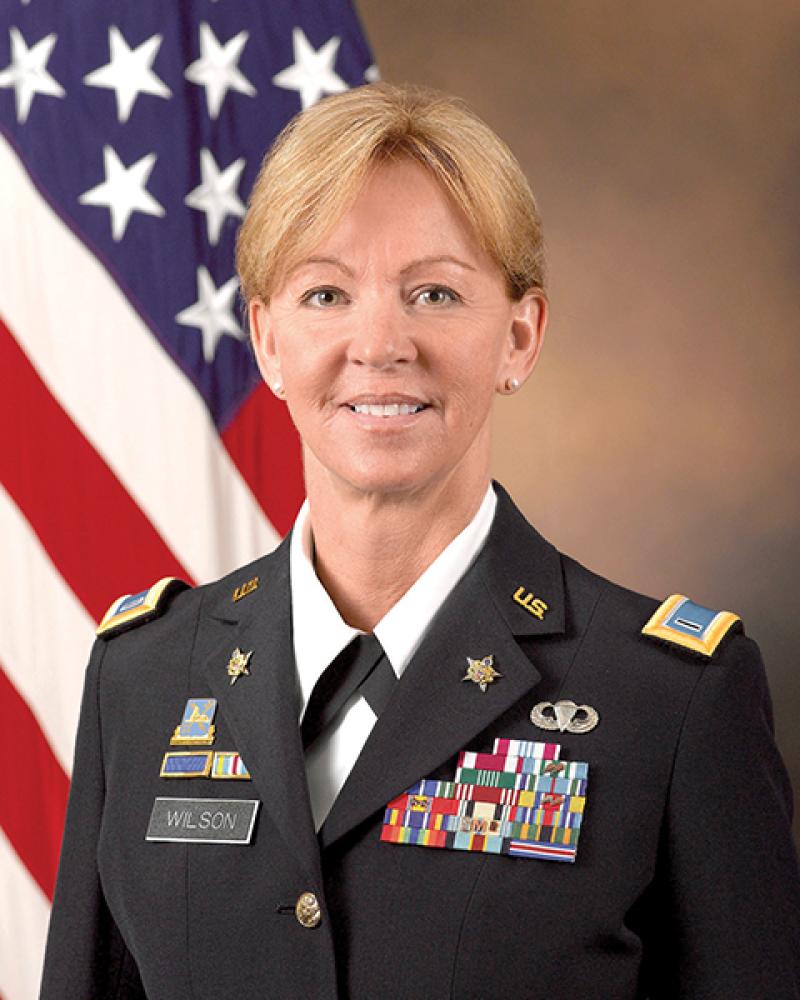
Great Big World
Idaho Daughter combines two passions as a teacher in Taiwan
Like many college graduates, when Dawnine Clews received her diploma from the College of Idaho in 1997, she wasn’t sure what should happen next. Science and math were easy subjects for her, so she considered applying to medical school, but she didn’t relish the amount of time and money it would take to become a doctor.
Enter the Peace Corps. At the suggestion of a friend, she applied, and was offered two options. The first was to be an economic adviser to small businesses in the former Soviet Union.
September/October 2020
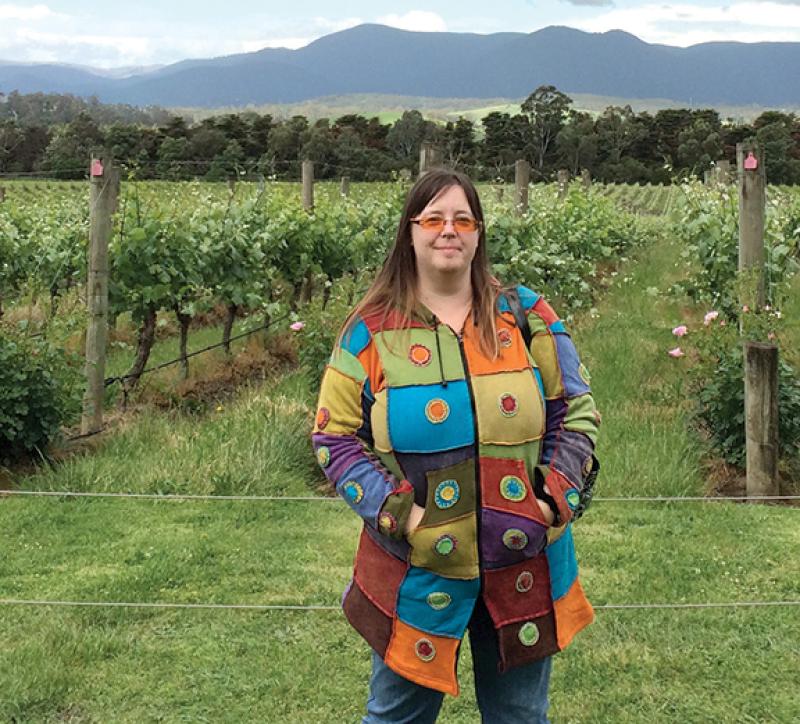
The Full Story
Rhode Island Daughter helps America’s most iconic historic sites articulate their complicated pasts.
Historic sites haven’t always grappled with their connections to slavery. Believe it or not, it used to be common practice to simply omit the truth—or perhaps admit that slaves lived there but say nothing more. Now there are people like Elon Cook Lee, director of interpretation and education at the National Trust for Historic Preservation, who are helping historic sites lean into their complicated pasts to offer visitors a fuller, more complete version of their American story.
July/August 2020
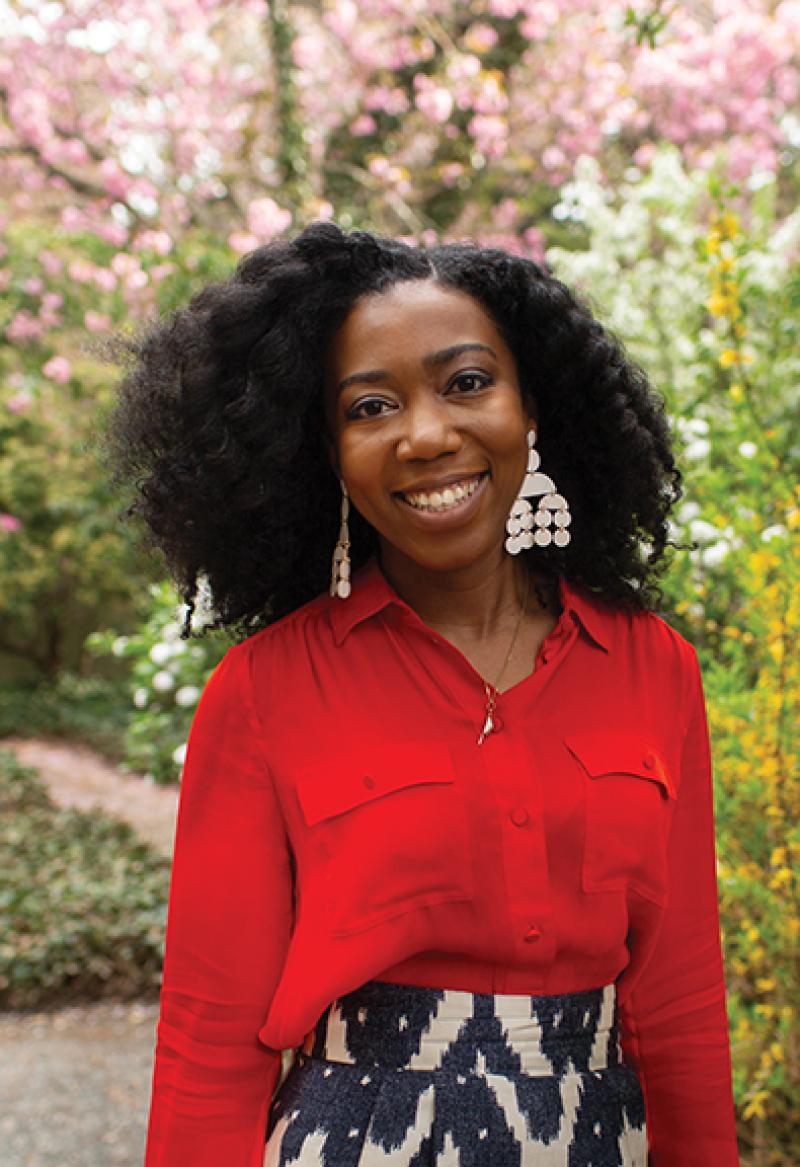
The Family Bond
What does it take to run a 20,000-acre cattle ranch? If you’re picturing dozens of strapping cowboys, think again. At Banner Ranch outside of Casper, Wyo., it’s a close-knit family operation co-managed by Kristen Trumbull Moldaschel.
A fifth-generation rancher, Mrs. Moldaschel runs the entire operation with her mother and uncle. “I consider them my bosses,” she said. Other family members—including her husband, Justin, and her father and two brothers—contribute when they can.
May/June 2020
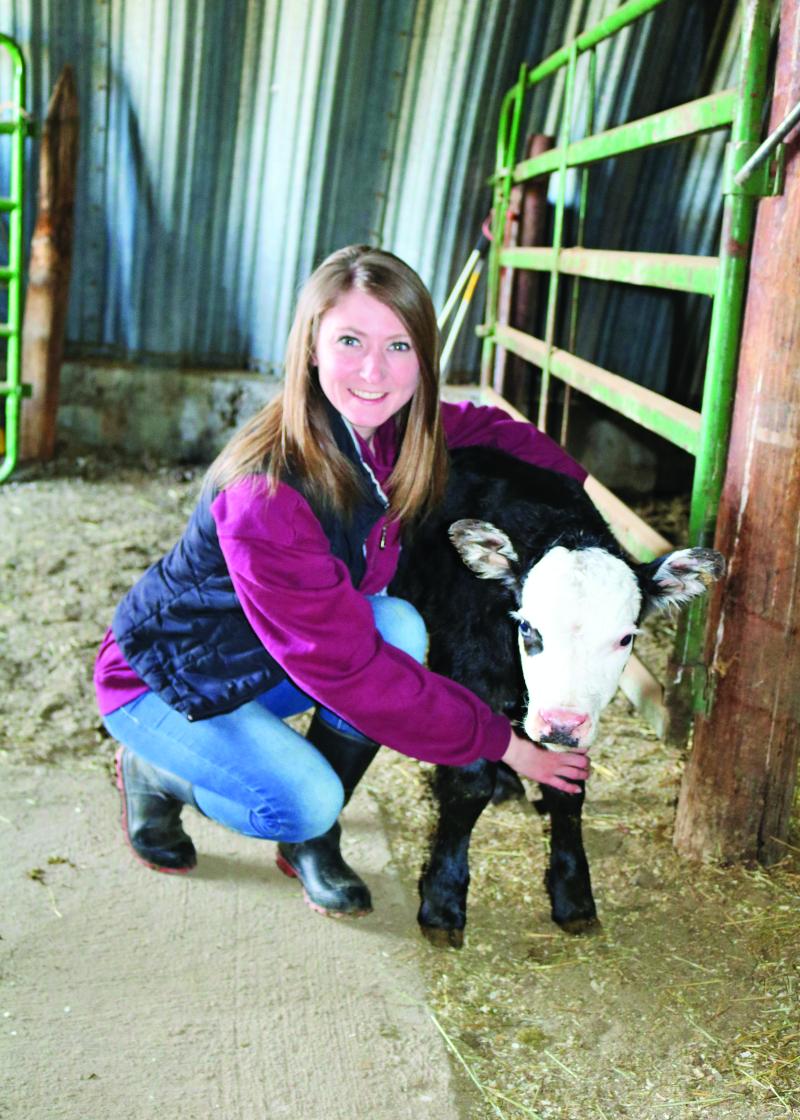
Supporting Victory
Two decorated U.S. Army veterans—one in the Women’s Army Auxiliary Corps and the other in the U.S. Army Nurse Corps—exemplify the meaning of service through their valorous efforts in the European theater of World War II.
It was 1942, and Helen Horlacher Evans was a newly minted home economics teacher when she heard the news. Congress had just passed a bill authorizing women to serve in the military, which had previously been open only to women who were nurses.
She was instantly intrigued. She had seen male friends and former classmates called up for service since the attack on Pearl Harbor, and her patriotic upbringing fueled her interest. But it was an innocent dare, waged among three young teachers in a Versailles, Ky., high school, that got the application in her hands. All three friends filled one out, but only Mrs. Evans was accepted as an officer candidate in the Women’s Army Auxiliary Corps (WAAC). (The WAAC was formed in 1942, and then became the Women’s Army Corps [WAC] on July 1, 1943.)
March/April 2020
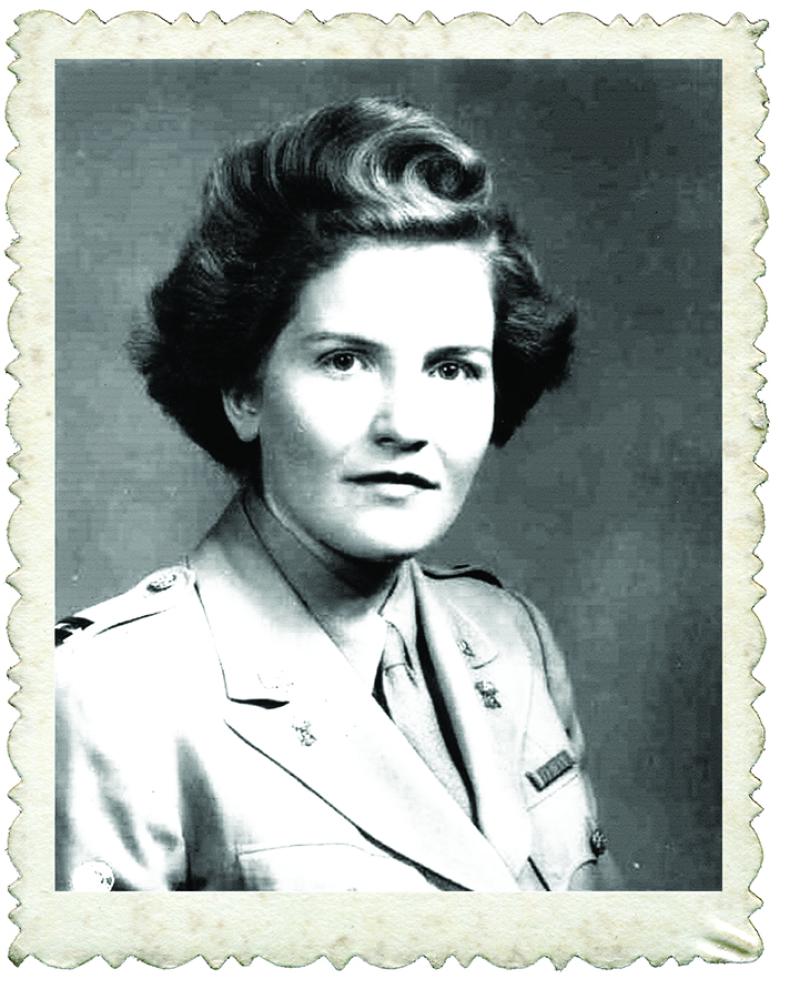
Supporting Victory
In 1943, Marian Rebecca Sebring Elcano embarked on a remarkable wartime odyssey that began in Oil City, Pa., and ended after two years of service as an Army nurse in the European theater of World War II. Mrs. Elcano cared for thousands of patients, spanning the Normandy invasion, battles in Northern France, and engagements in Belgium and Germany. She was witness to the Battle of the Bulge and the Battle of Remagen Bridge to the liberation of Buchenwald Concentration Camp and the Allied victory in Germany.
March/April 2020
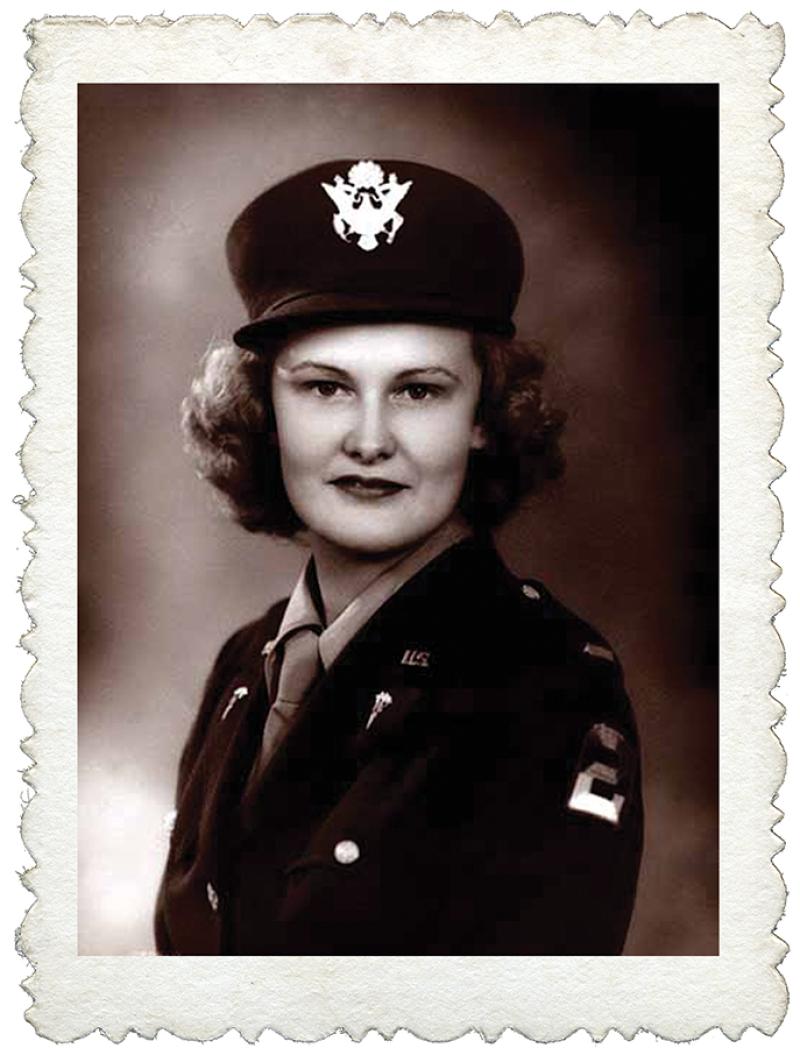
Monument Magician
When Mary Ruden moved from South Florida to East Tennessee 12 years ago, she took a look around the historic squares and parks of her new home and saw a problem. The markers and monuments commemorating the region’s rich Revolutionary War history were in disrepair. Bronze plaques had corroded to the point of being unreadable, and stone statues were cracking and crumbling. Fortunately for her community, Ms. Ruden is a qualified restoration specialist.
As an artist and welder who frequently works with bronze and metals, Ms. Ruden wasted no time offering her services. Her first project was restoring the monument to the Overmountain Men at Sycamore Shoals State Historic Park in Elizabethton, Tenn.
January/February 2020

On Her Way
Madeline McElroy, diagnosed at age 7 with Type 1 diabetes, is enthusiastic about sharing what she knows about the disease—in the hopes of demystifying it and helping others cope.
“I was diagnosed at such a young age, so it’s always been a part of my life,” said the member of Mary Chilton DAR Chapter, Sioux Falls, S.D. “But I never want to use my diagnosis as an excuse. It may be part of my life, but it doesn’t run my life.”
Ms. McElroy, now 18 and a college student, certainly never let the disease keep her from staying busy. She’s been active in theater, improv comedy, show choir, dance, horseback riding and hunting.
November/December 2019

What Lies Beneath
New York Daughter unearths history below modern construction sites
When the site for the new Staten Island Courthouse was selected on a hilltop overlooking New York Harbor, challenges were expected—par for the course anytime a large municipal building is constructed. But no one could have predicted the monumental challenge posed by the 19th-century burial ground uncovered at the northern end of the site. No one, that is, except Sara Mascia, Ph.D.
Dr. Mascia—a member of Hudson River Patriots DAR Chapter, Southern Westchester County, N.Y.—serves as vice president and principal investigator for Historical Perspectives, a Westport, Conn.-based cultural resources firm. New York City hired her company to conduct research on the history of the site, as mandated by the National Historic Preservation Act. Her research determined that the site was previously home to the New York Marine Hospital, which operated from 1799 until it burned down in 1858.
September/October 2019
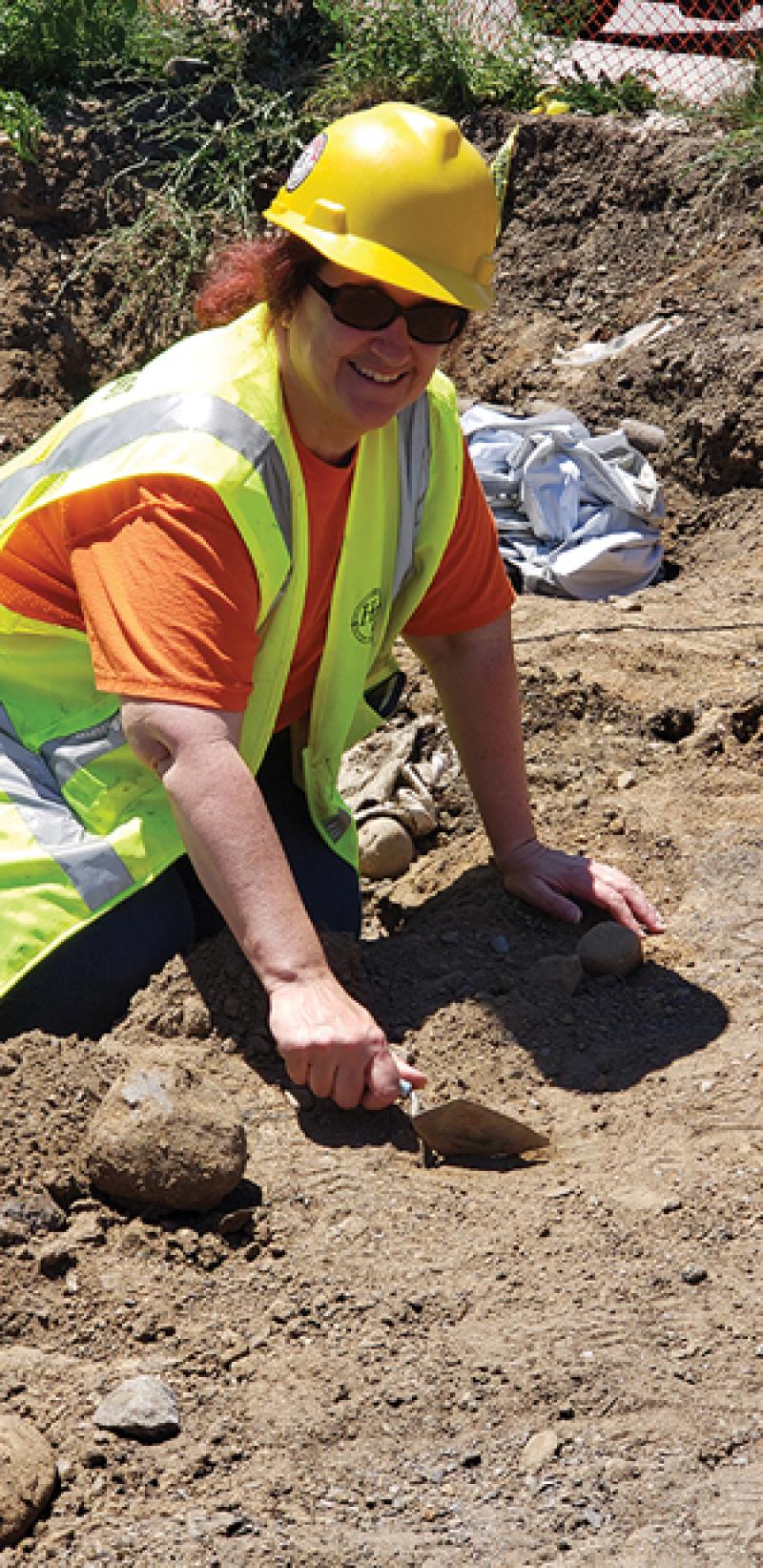
Justice for All
Georgia Daughter relocates to Louisiana to help address surge in immigration court cases
On any given day, U.S. Immigration Judge Angela Munson hears a variety of languages in her courtroom. Spanish is common, given the proximity of the LaSalle Immigration Court in Jena, La., to America’s southern border. Judge Munson also hears Russian, Punjabi and even remote dialects of indigenous Central American populations. She relies on court-certified interpreters to help her communicate with many of the respondents who appear before her. “So far, I’ve heard as many as eight languages in a single day,” she said.
Judge Munson is one of five judges in a newly established court located inside the LaSalle Detention Facility, the largest immigrant detention facility in Louisiana. The facility is designed to help process the growing backlog of pending immigration cases in the United States—a figure that surpassed 1 million last year. Judge Munson’s job is to determine whether the detainees appearing before her are eligible for deportation or qualify for relief that would allow them to remain in the country.
July/August 2019
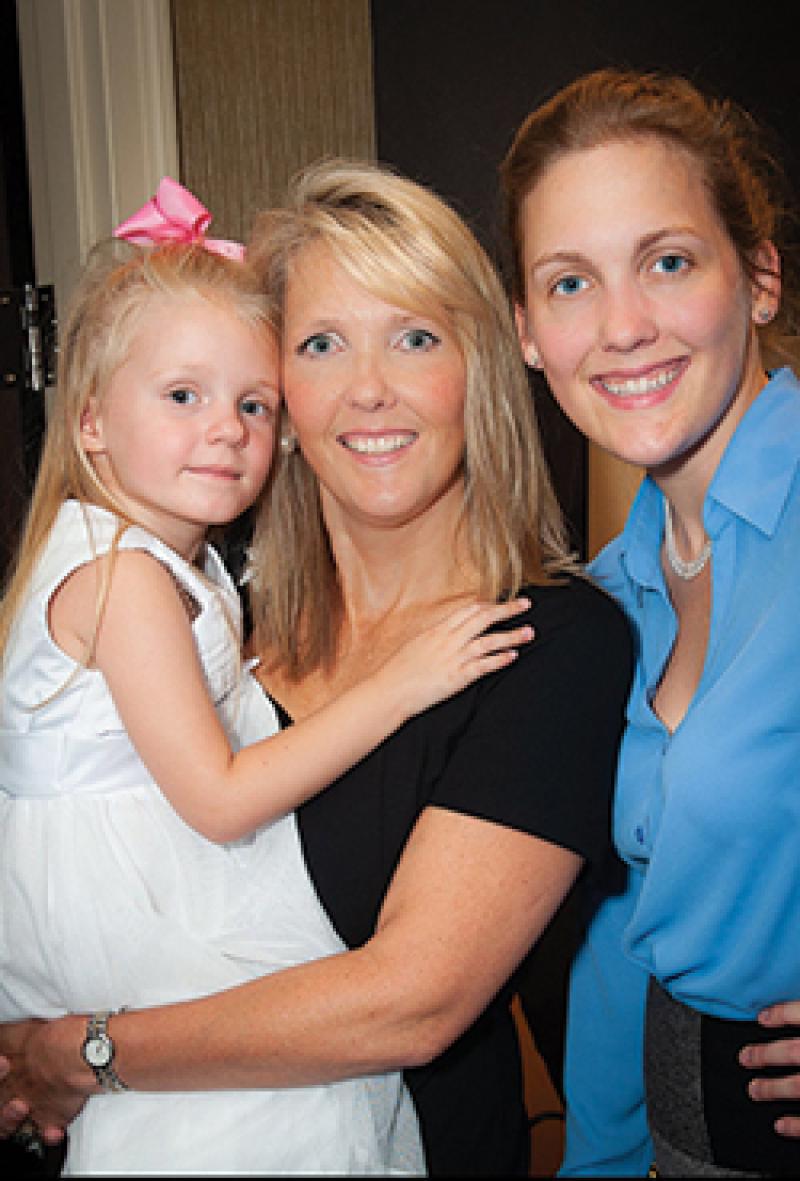
Make WAVES
Erna Schoen Bentley was 21 years old when the United States entered World War II, and almost immediately she looked for a chance to contribute. As the oldest daughter in a family with no sons, she saw it as her duty to serve. She also thought it would be a nice change of pace from the sleepy Connecticut town she called home. In March 1943, that opportunity came. She and a friend went to New York City to sign up for the women’s branch of the U.S. Naval Reserves, known as Women Accepted for Voluntary Emergency Service (WAVES). “We went there to do it together, but my friend had a change of heart and did not enlist,” Mrs. Bentley recalled.
On April 9, 1943, Mrs. Bentley arrived at the U.S. Naval Training School in Cedar Falls, Iowa. After training there and at the Washington, D.C. Navy Yard, she reported for duty at the Naval Communications Annex in Washington as a communications specialist in cryptography. There she and 4,000 other women spent the duration of the war working to decode secret messages from the German and Japanese governments.
May/June 2019
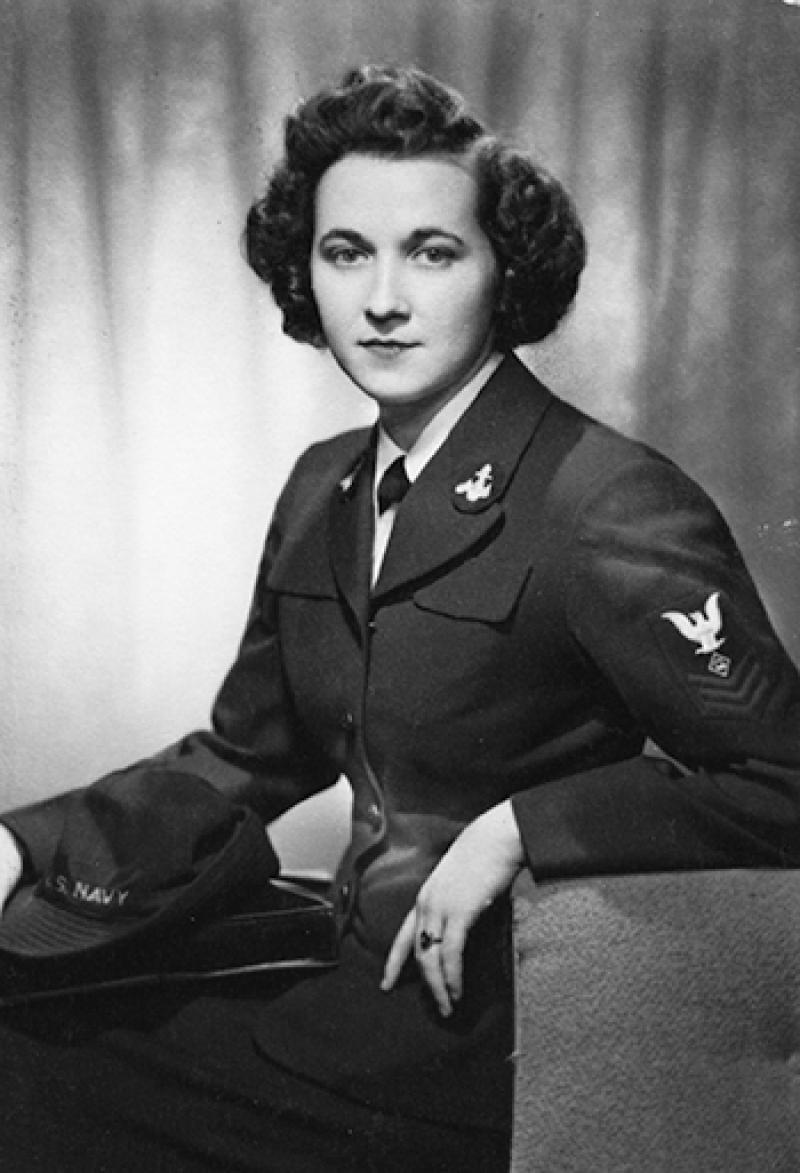
She’s Going the Distance
When Debbie French started training for her first race, a 3.1-mile fun run in 2006, she couldn’t run from her house to her neighbor’s without stopping for a break. It’s safe to say she’s come a long way. The fun run became a half marathon (13.1 miles), which became a marathon (26.2 miles), which turned into an ultramarathon (31 miles), which became an even longer ultramarathon (50 miles).
Right after the fun run, Mrs. French learned how to swim and added triathlons to the mix. She started with the shortest—or sprint—distance (400-yard swim, a dozen or so miles on the bike and a 3.1-mile run) before graduating to longer distances. In 2014, to celebrate her 40th birthday, she finished an Ironman—a 2.4-mile swim, a 112-mile bike ride and a 26.2-mile run, done in that order, without a break. If you’re wondering, it took her 16 hours.
March/April 2019
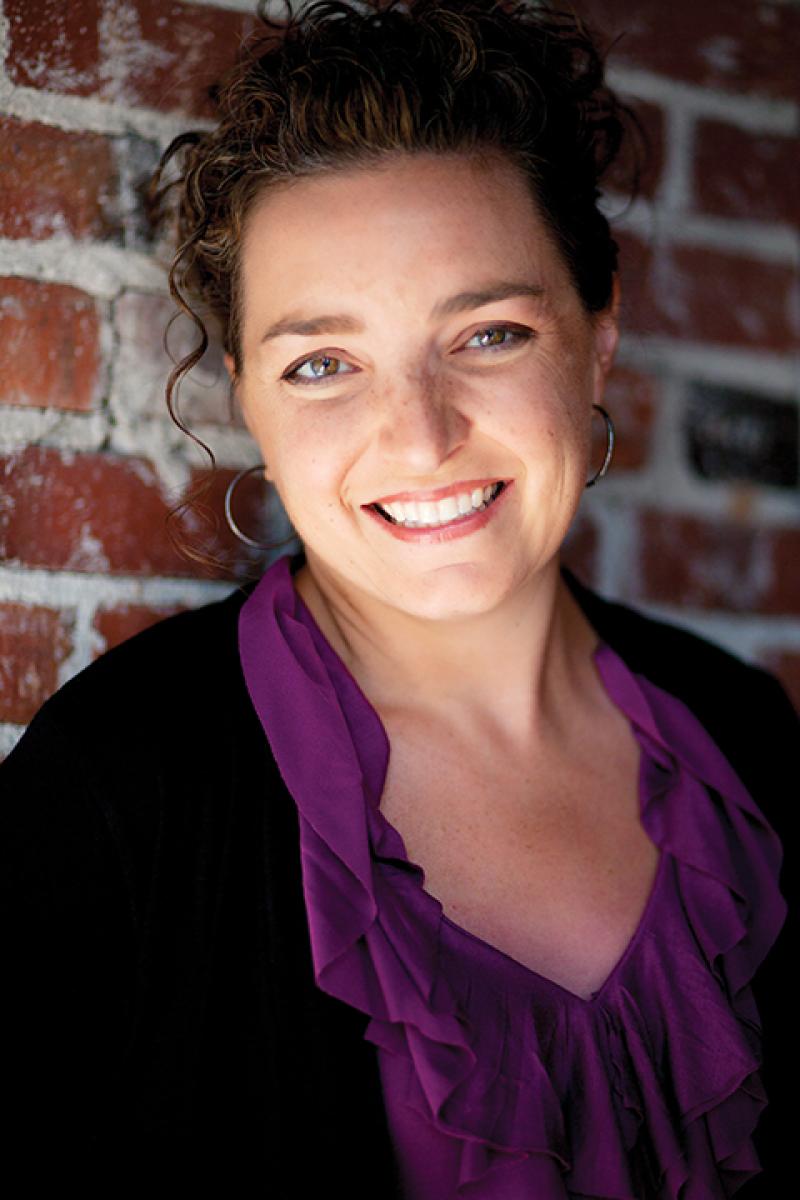
Life Support
A Nevada Daughter coordinates the complex process of organ transplant transportation
When an organ donor dies, the clock starts ticking. Sophisticated technology can match organs to recipients in an instant, but there’s nothing easy about what comes next. Mobilizing a recovery team, organizing safe, reliable transportation—all at a moment’s notice—can be just as complex as the life-saving transplant surgery itself.
“It’s like playing chess in your head, except it’s extremely fast-paced,” said Bethney Seifert, who serves as flight coordinator and safety manager for Reno, Nevada-based Transplant Transportation Services, which arranges transportation for organ recovery teams from across the Western United States, many of them located in the San Francisco Bay Area. “I’m always thinking three steps ahead to help make sure we anticipate anything that could happen. I don’t want to say, ‘I never saw that coming.’”
January/February 2019
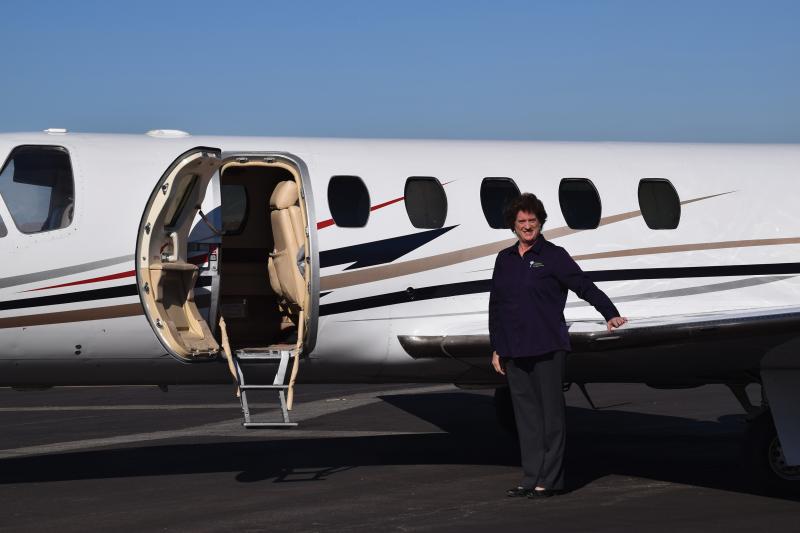
A Beacon of History
Indiana Daughter illuminates her state’s important stories
When Shirley Willard taught middle school history in the 1970s, textbooks were still glossing over one of the state’s darkest chapters—the forced removal of the Potawatomi American Indians from Indiana to Kansas in the fall of 1838.
“I remember there was one paragraph dedicated to it,” recalled the member of Manitou DAR Chapter, Rochester, Ind., and former president of the Fulton County Historical Society (1971–2001). “And it made it sound like the Potawatomi went West and then fell off the face of the earth.”
November/December 2018
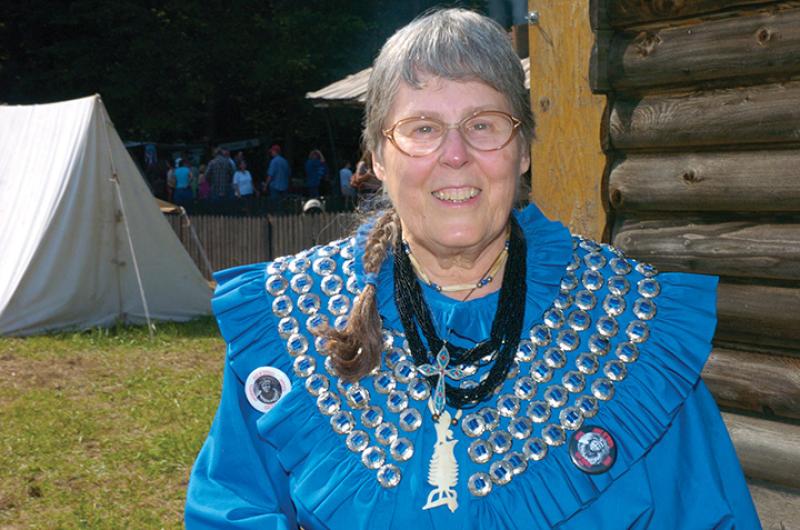
From Practical to Passionate
Illinois Daughter finds purpose in her work as a member of the U.S. Navy Dental Corps
When Lieutenant Commander (LCDR) Katherine Meister Cheng joined the U.S. Navy 10 years ago, she was looking for a practical way to pay for the expense of dental school.
She received the Navy’s health professions scholarship, which paid her tuition in exchange for four years of active duty service in the U.S. Navy Dental Corps, which provides dental support for the U.S. Navy and Marine Corps worldwide.
September/October 2018
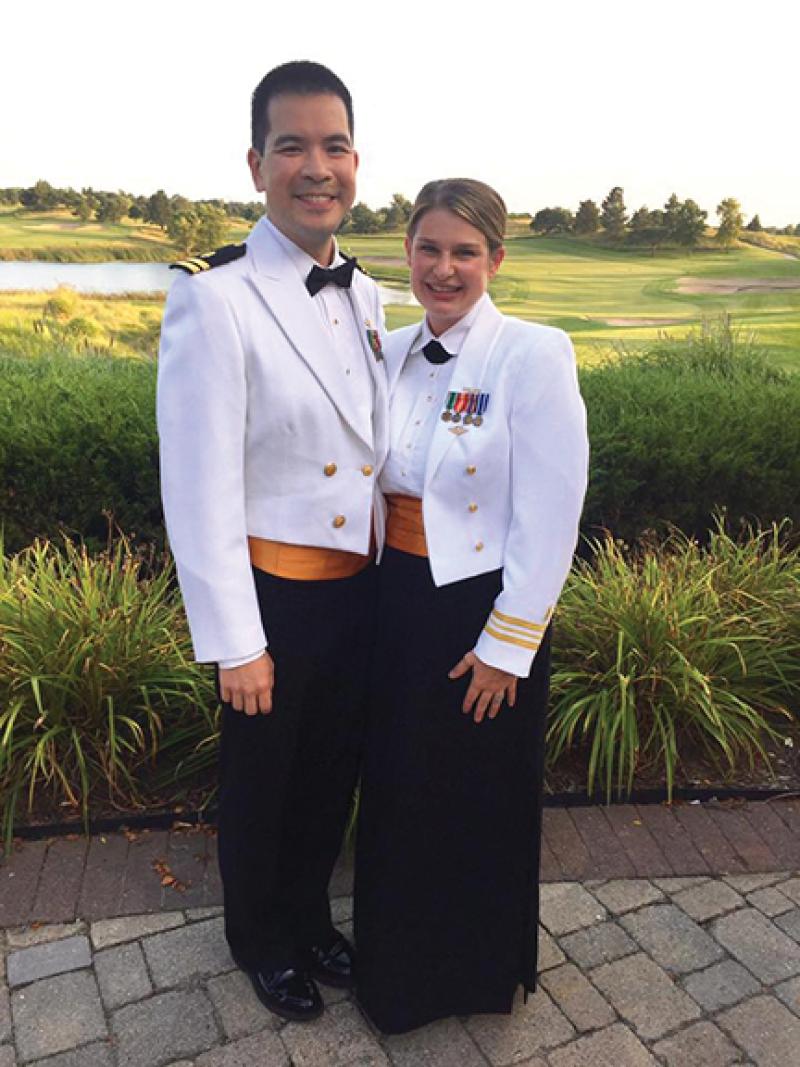
Port of Call
One Florida Daughter found her calling in the bustle of the maritime industry
When a cargo ship is in port, every minute matters. Ships pull in, unload, reload, refuel and then head back out to sea. The faster all of that can happen, the better, not just for port costs but also for the flow of cargo.
“Time is money at a port facility,” said Victoria Robas, member of Amelia Island DAR Chapter, Fernandina Beach, Fla. “For everyone’s sake, ships need to be at port as little as possible.”
July/August 2018
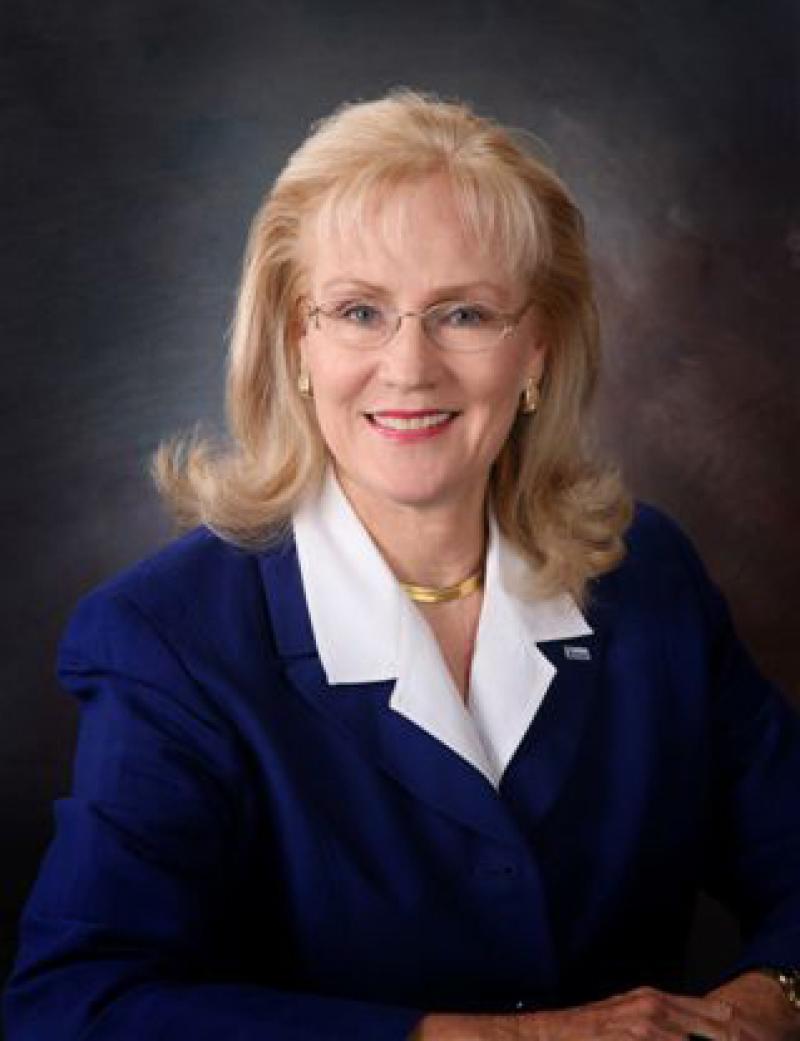
The Dog Detective
California Daughter and veterinarian helps solve medical mysteries affecting her four-legged patients
It might be tempting to categorize all of Dr. Barbara Doty’s patients as furry. After all, she is a veterinarian who works exclusively on cats and dogs. But, to call all of her patients furry would be forgetting about Lucy, a border collie with a terrible skin condition that caused her to lose all her hair—and now it won’t grow back.
After being poked and prodded by other veterinarians, including a dermatologist, Lucy’s owner brought her to Dr. Doty at Villa Animal Hospital in Orange, Calif. As a general practitioner, Dr. Doty diagnoses and treats all types of medical conditions, from the mundane to the extremely rare. She is hopeful that she’ll be able to help Lucy regain her “furry” status.
May/June 2018
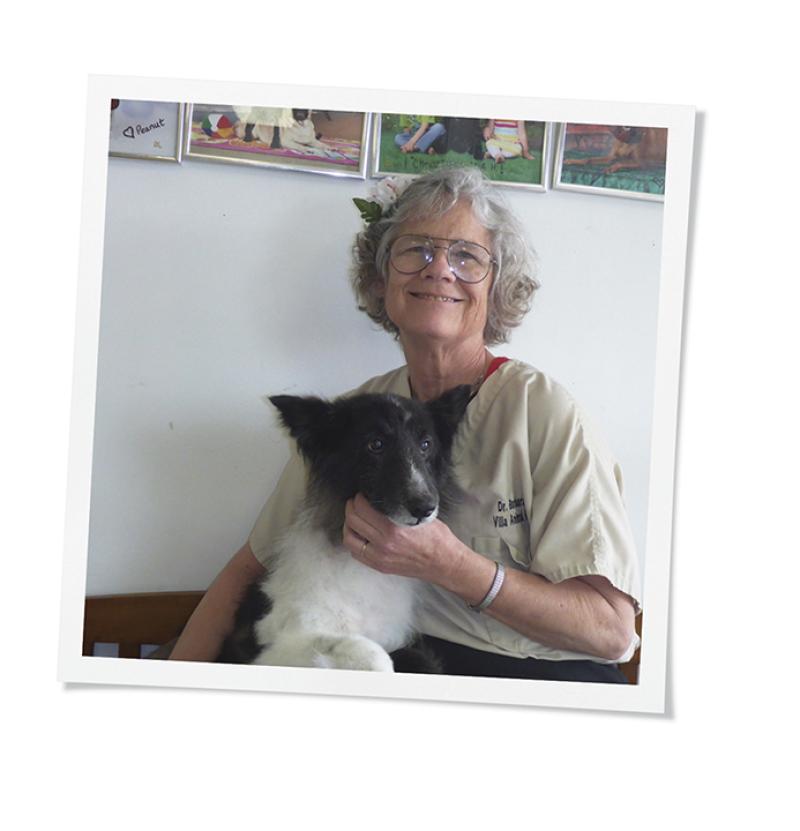
For the Win
When the Houston Astros won the World Series in November 2017, Twila Carter celebrated alongside fellow Houston residents and fans. This was the first World Series win for the team, and the victory came at just the right time—on the heels of the devastation caused by Hurricane Harvey just a few months before.
“It was a much-needed distraction for the entire city,” said the member of Twin Creeks DAR Chapter, Shenandoah, Texas. “Some people lost everything, and yet they talked about how exciting it was to watch the Astros win.”
March/April 2018
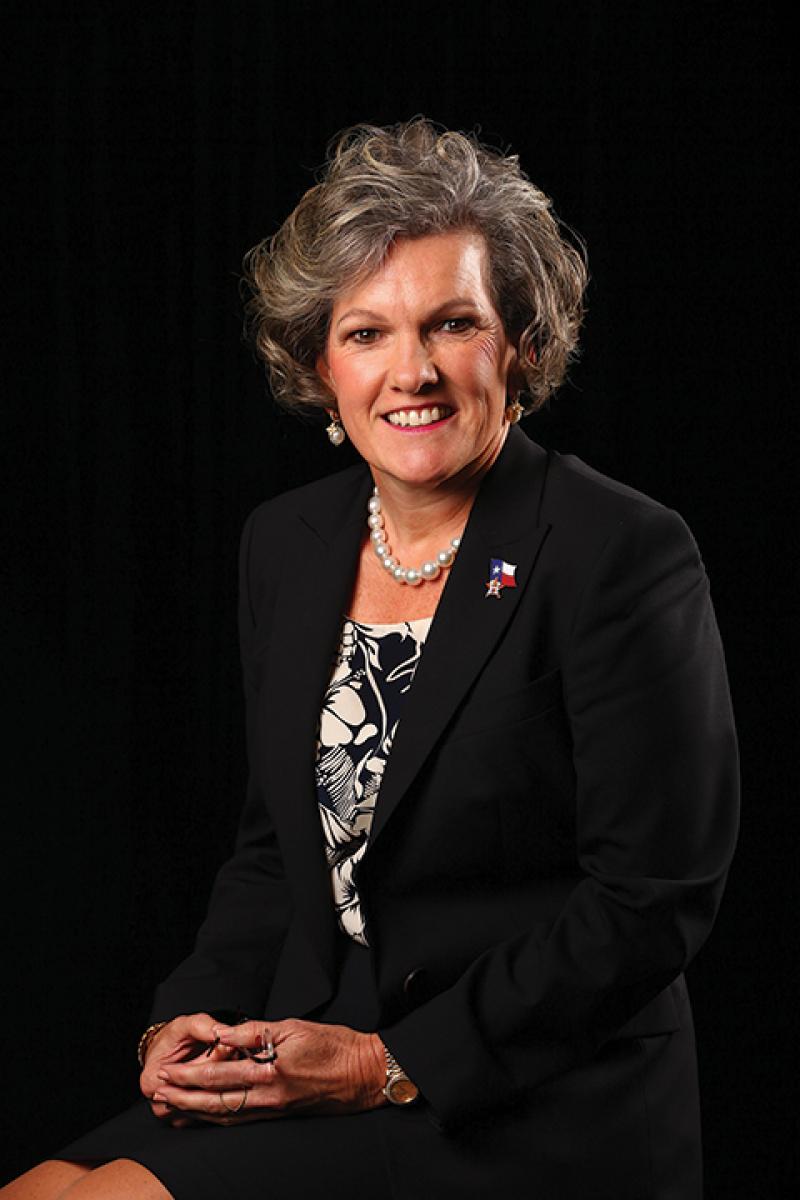
Out of This World
For as long as she can remember, Aileen Yingst wanted to be a space scientist. Her desire started around the age of 3, with a sticker book about stars.
“I remember the book showed objects in the solar system in orbit, which looked like it was some sort of physical thing,” said Dr. Yingst, a member of Brunswick-Topsham DAR Chapter, Brunswick, Maine. “I wondered if people lived near these orbits and if they did, if they could touch them.”
She has since moved on to other questions about the universe—such as, “What can Mars tell us about life on Earth?”
January/February 2018
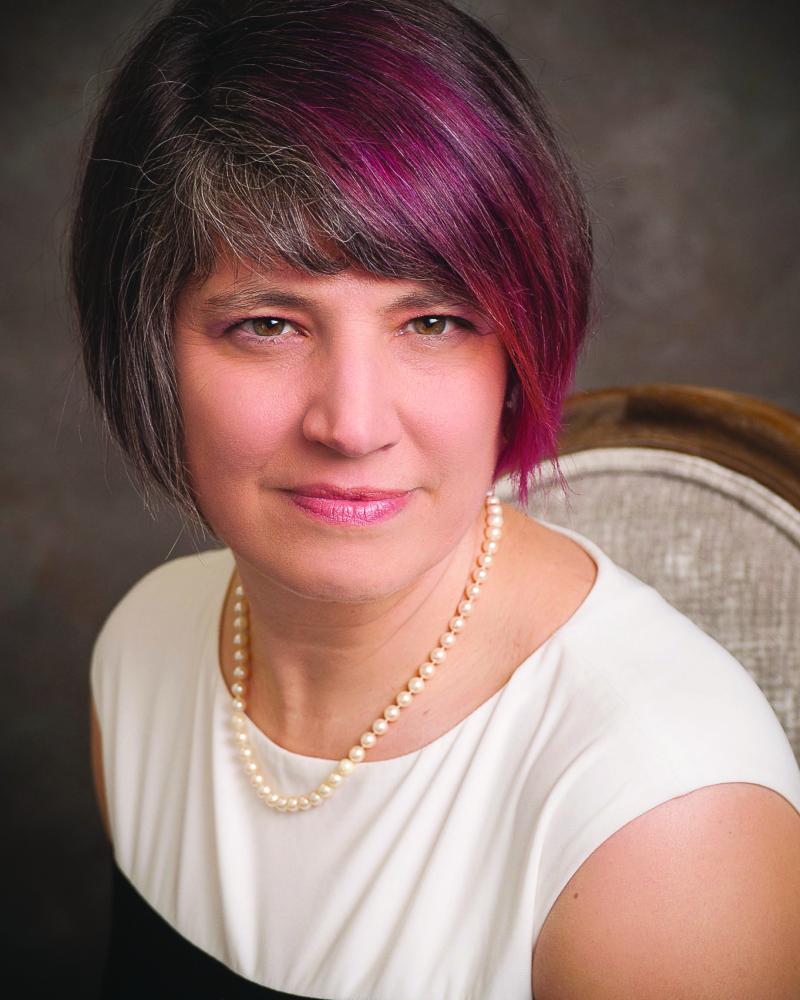
Called Home to Serve
Living abroad during 9/11, Congresswoman Jackie Walorski returned to Indiana to begin a career in politics.
Like many Americans, Indiana Congresswoman Jackie Walorski remembers exactly where she was on 9/11. She was living in Romania, wrapping up her day as a missionary at a local children’s burn unit. She and her husband, Dean Swihart, had been there less than a year. The daughter of an Air Force veteran and firefighter, Rep. Walorski grew up knowing the importance of serving one’s community, but 9/11 brought that lesson into clear focus.
“Watching my country under attack from afar changed my worldview forever,” said the member of William Tuffs DAR Chapter, Elkhart, Ind.
November/December 2017
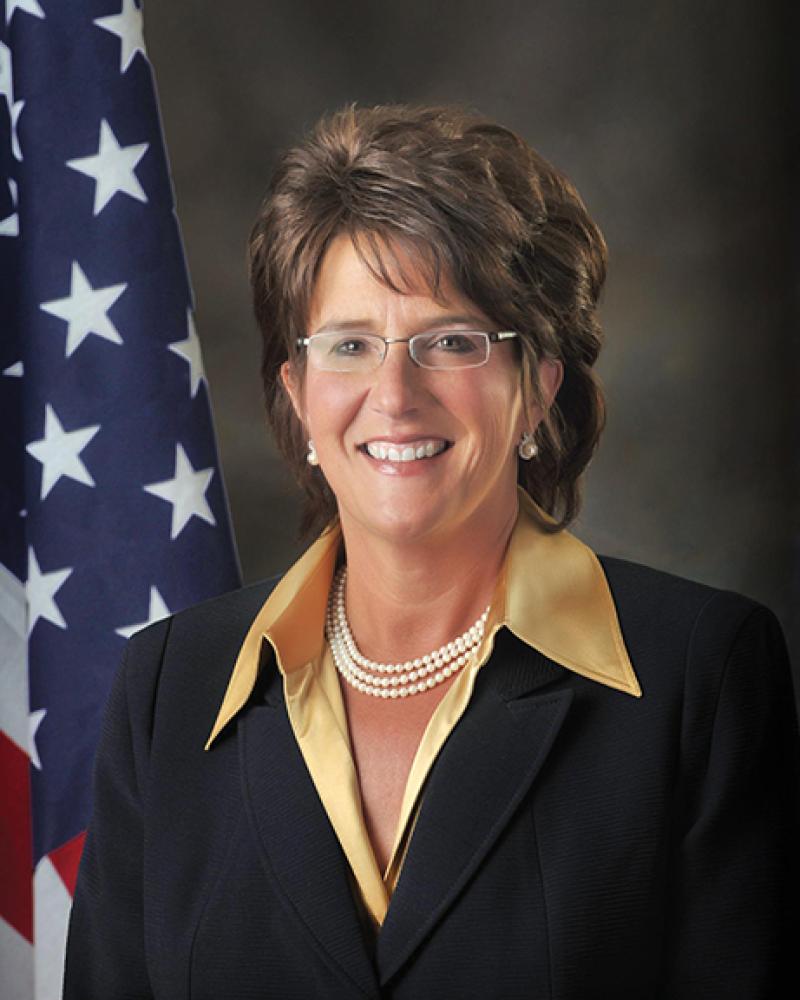
Playing to Her Strengths
In her 22 years as a teacher, Darcy Kennedy taught future doctors, lawyers, actors and even two judges—the types of students any teacher would dream of having in her classroom. But when she looks back at her teaching career, those star students aren’t the ones who stand out the most. Instead, it’s the ones who barely made it—the ones who needed more attention and effort to succeed.
“One parent came to me and said I saved her son’s life,” said Mrs. Kennedy, a member of Piney Creek DAR Chapter, Centennial, Colo. “He was on a really rough path. I was able to spend time with him and learn who he was instead of being afraid of him.”
September/October 2017
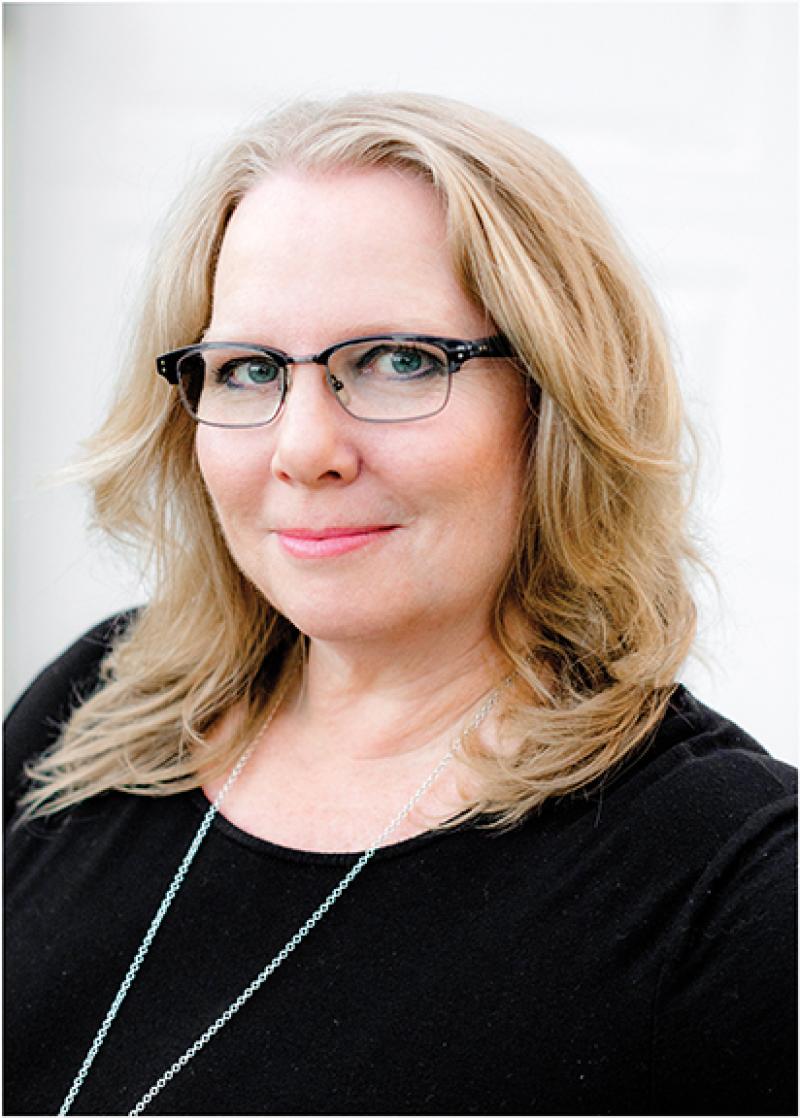
For the People
Philadelphia Daughter finds fulfillment in serving others
In 2013, Taryn Edmonds Kennedy made a big career change. After working for more than 12 years as a psychotherapist and behavioral health specialist with disadvantaged Philadelphia families, she completely switched gears and became a paralegal.
“As a psychotherapist, I was constantly aware that people weren’t getting the services they needed,” said the regent of the Philadelphia DAR Chapter, Philadelphia, Pa. “I saw an opportunity to be even more helpful as a legal professional.”
July/August 2017
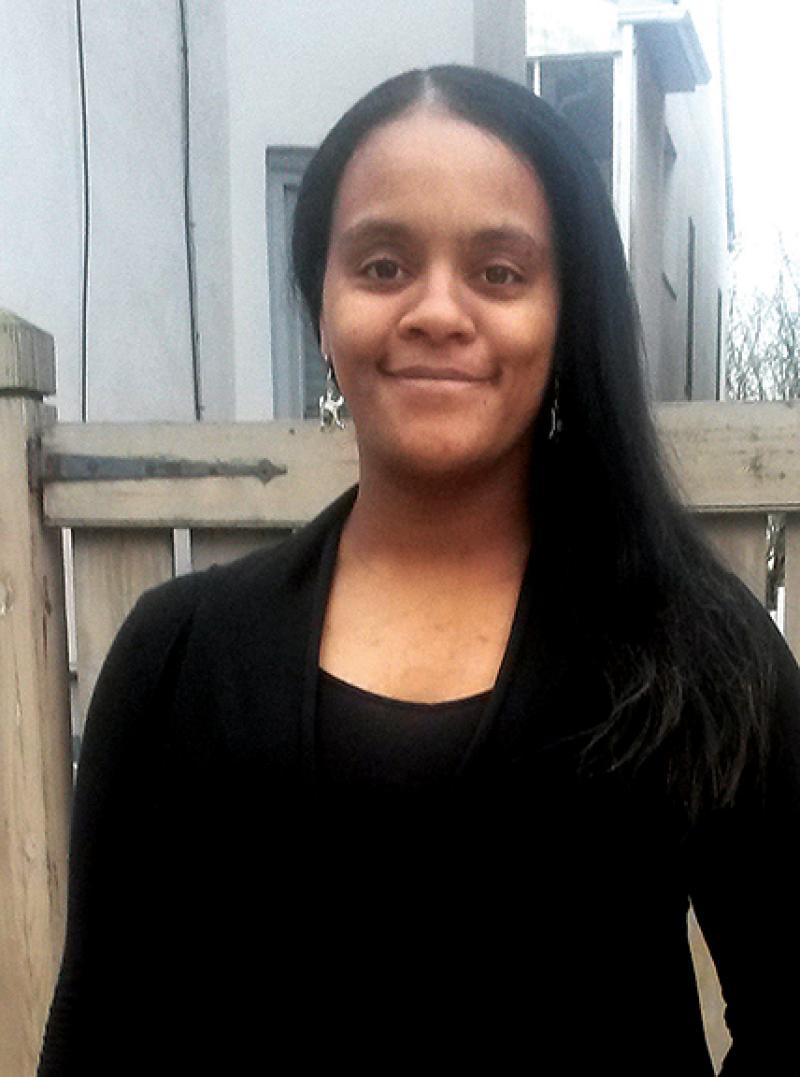
Expanding Horizons
Wyoming Daughter pilots state-of-the-art commercial aircraft
Barbara Bentzin is not only a world traveler, but she also facilitates that travel for thousands of others every year. As a commercial airline pilot for three decades on many different types of aircraft, Ms. Bentzin’s job has taken her to almost every continent.
Today she serves as one of four pilots on a Boeing 787 that flies from Los Angeles to Melbourne, Australia. She makes the 15-hour flight to Australia three times a month. Before her Los Angeles–Melbourne stint, she was based out of Newark, N.J., where she routinely flew passengers to destinations all over Europe. (Rome was her favorite.) Prior to that, she was based in Guam, flying to locations all over Asia.
May/June 2017
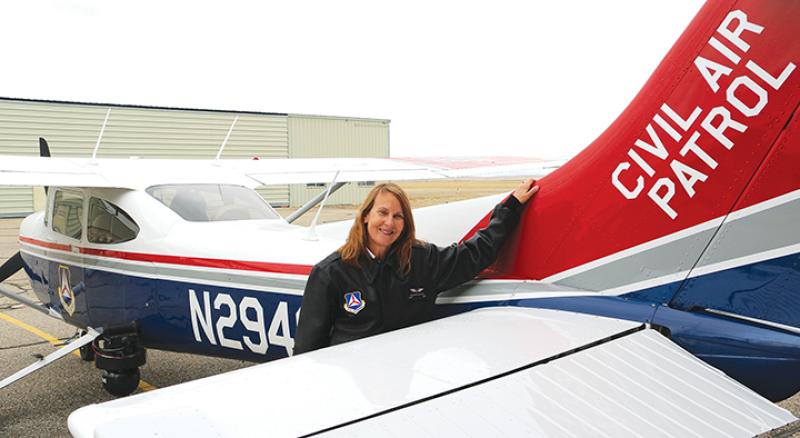
Answering the Call
Sister Elise Kriss devotes her life to education
After growing up two blocks from her Roman Catholic parish school and church in Indiana, Sister Elise Kriss’ decision to become a sister felt like a natural step in her life’s journey. As a young girl, she was always available to help with Mass and tidy classrooms after school dismissed for the day, and she enjoyed the close relationships she formed with the sisters there. And so, in 1965, three months after graduating from high school, Sister Elise joined the Sisters of Saint Francis of Perpetual Adoration in Mishawaka, Ind. In 2016, she celebrated her Golden Jubilee, commemorating 50 years of service to the congregation.
As a sister, she has been devoted to the Catholic Church’s educational mission. She taught fifth through eighth grade for eight years, then was promoted to school principal. In 1984, she moved to higher education, after earning a doctorate. Since 1993, Sister Elise has served as the president of the University of Saint Francis in Fort Wayne, Ind. Under her leadership, the school’s enrollment has more than doubled, and its reputation has grown to include multiple regionally recognized programs, including those in the creative arts and health sciences.
March/April 2017
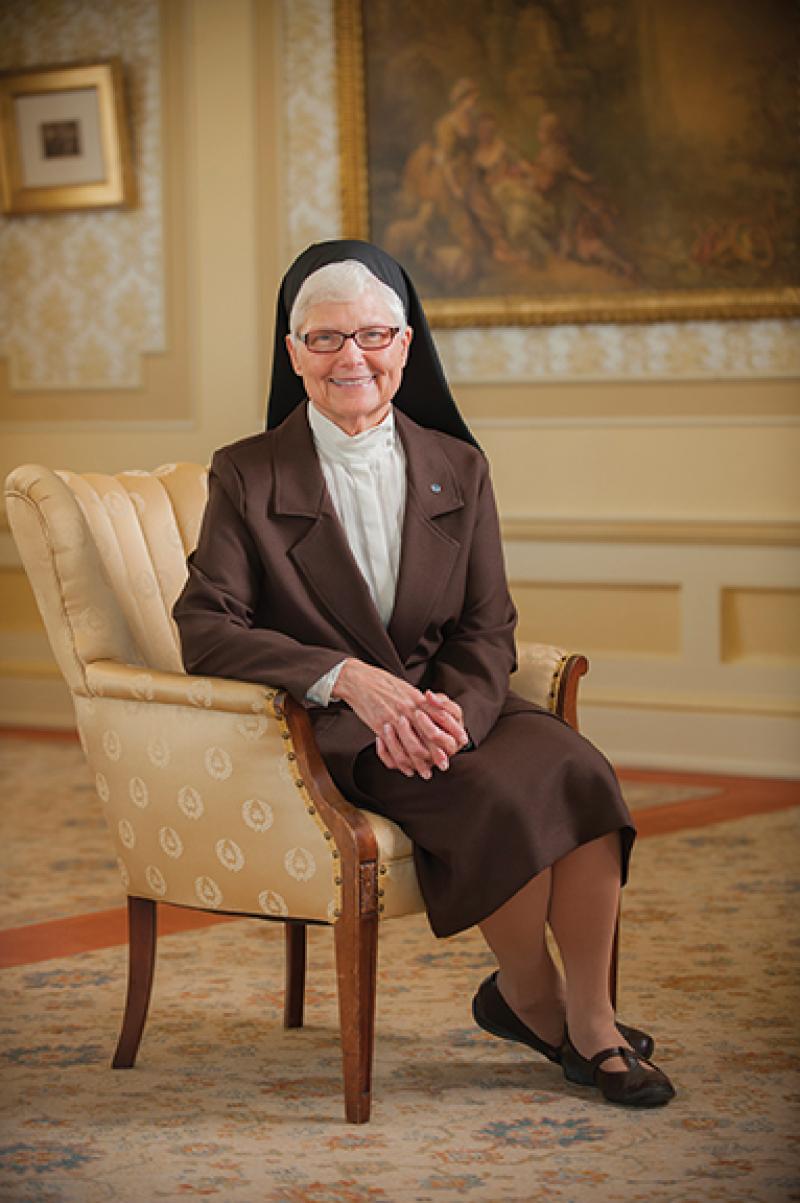
Fighting for Justice
As a New Hampshire Cold Case Unit volunteer, Verne Green Cracks open decades-old murder files
Twice a week for the past six years, Verne Greene has made the 50-mile trip from her home in Keene, N.H., to Concord—the state capital and headquarters for the New Hampshire Cold Case Unit. As a volunteer, she spends approximately 12 hours a week meticulously indexing case files for unsolved homicides, suspicious deaths and missing person cases in which foul play is suspected. Some of the case files are 400 pages long; others include 15,000 pages of information that Ms. Greene and one other volunteer have to review and index.
“I work on one case at a time,” says the member of Reprisal Chapter, Newport, N.H. “I go through the box, take out any duplicates and arrange everything in chronological order. Then, I take one page at a time and index whatever is on that page, including the name, how they’re related to the victim, and what they said at the time of the investigation. Sometimes that’s when you catch a criminal—when you realize they told their story a little differently each time.”
January/February 2017
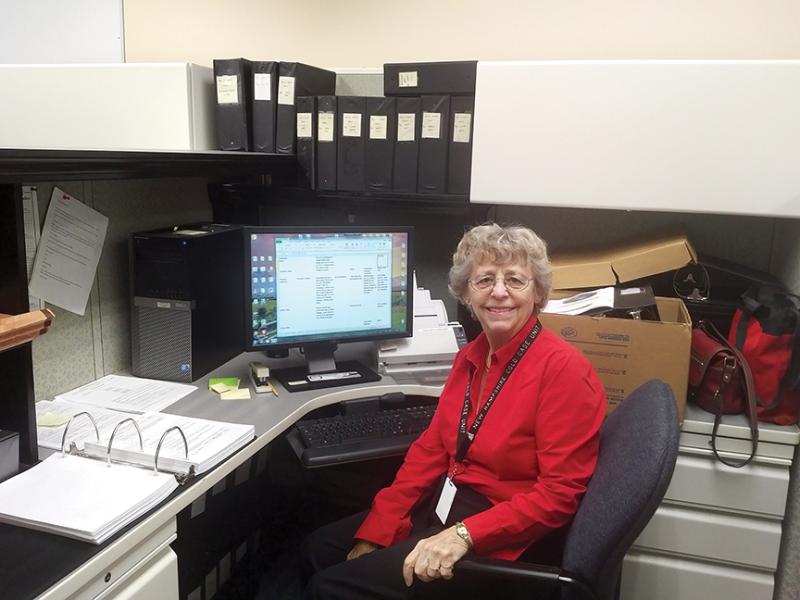
Honored to Serve
Peggy Wilmoth’s childhood dream was to become an Army nurse. That dream has come true and then some. In 2015, after being confirmed by the U.S. Senate, Major General Wilmoth became the first nurse in the 106-year history of the Army Reserve to serve as Deputy Surgeon General. In this position, she advises the Army Surgeon General on the mobilization and readiness of Army Reserve medical personnel.
Her Army Reserve career began 35 years ago, when she was commissioned as a captain. A highlight of her career came in 1984, when MG Wilmoth earned the Expert Field Medical badge, one of the most prestigious Army special skill badges.
“It’s extremely hard to earn, and it’s rare for officers to have it,” she said. “But it’s important for a leader to validate that they understand what it takes to be a soldier. It’s important to walk the walk, not just talk the talk.”
November/December 2016
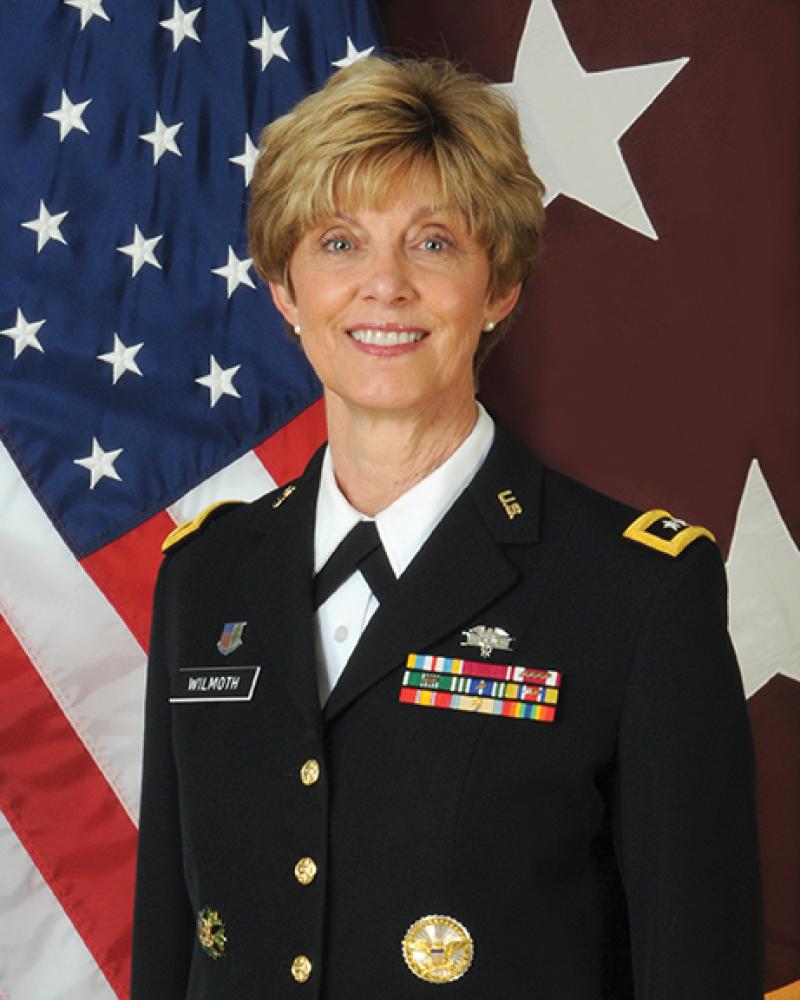
Honored to Serve
Nancy Taft, M.D., has always been patriotic, but it wasn’t solely a love of country that led her to the Army Reserve just 22 days before 9/11. A single mother of two and full-time nurse, she needed the extra money to help pay her medical school bills and to help send her children, Megan and Nathan, to college.
A surgeon specializing in breast cancer surgery, she graduated from medical school in 2004, and was called up for her first deployment the following year. She spent four months at Fort Bliss in El Paso, Texas, filling in for active-duty doctors who were sent to the front lines in Iraq. Four years later, she deployed to the Forward Operating Base Salerno in Afghanistan, where she helped staff a combat support hospital.
In 2013, she returned to Afghanistan. At Kandahar Airfield, she was part of a forward surgical team, a small, mobile unit composed of 20 medical professionals. The unit practiced hooking up supplies to a helicopter and quickly setting up a triage center upon landing, so that they would be able to perform so-called damage control surgery on wounded soldiers and civilians within 90 minutes of touching down.
November/December 2016

Honored to Serve
Military service is a family tradition for Jeanette Barrows. As a member of the Roger Sherman Chapter, New Milford, Conn., she’s undoubtedly proud of her Patriot, Zadoch Noble. But the eight generations after him have also served, including Ms. Barrows.
Ms. Barrows is a Hospital Corpsman First Class in the U.S. Navy Reserve. She enlisted in 2000 after receiving her paramedic’s license—and a letter from the Navy expressing interest in her joining.
“For patriotic reasons, I had wanted to be a part of the military when I graduated from college, but I wasn’t able to join,” she said. “When I got the letter, I realized this was the chance to finally be able to serve my country.”
In 2014, Ms. Barrows deployed to the Kandahar Airfield in Afghanistan for seven months. She served as the lead petty officer for the 12-bed trauma bay, which treated serious casualties. On one occasion, after a nearby medical clinic was bombed, the trauma bay treated 50 patients in the span of four hours. “But that was a rarity,” she said. “Every day was not like that.” In fact, many of the injuries Ms. Barrows saw in the hospital were construction-related.
November/December 2016
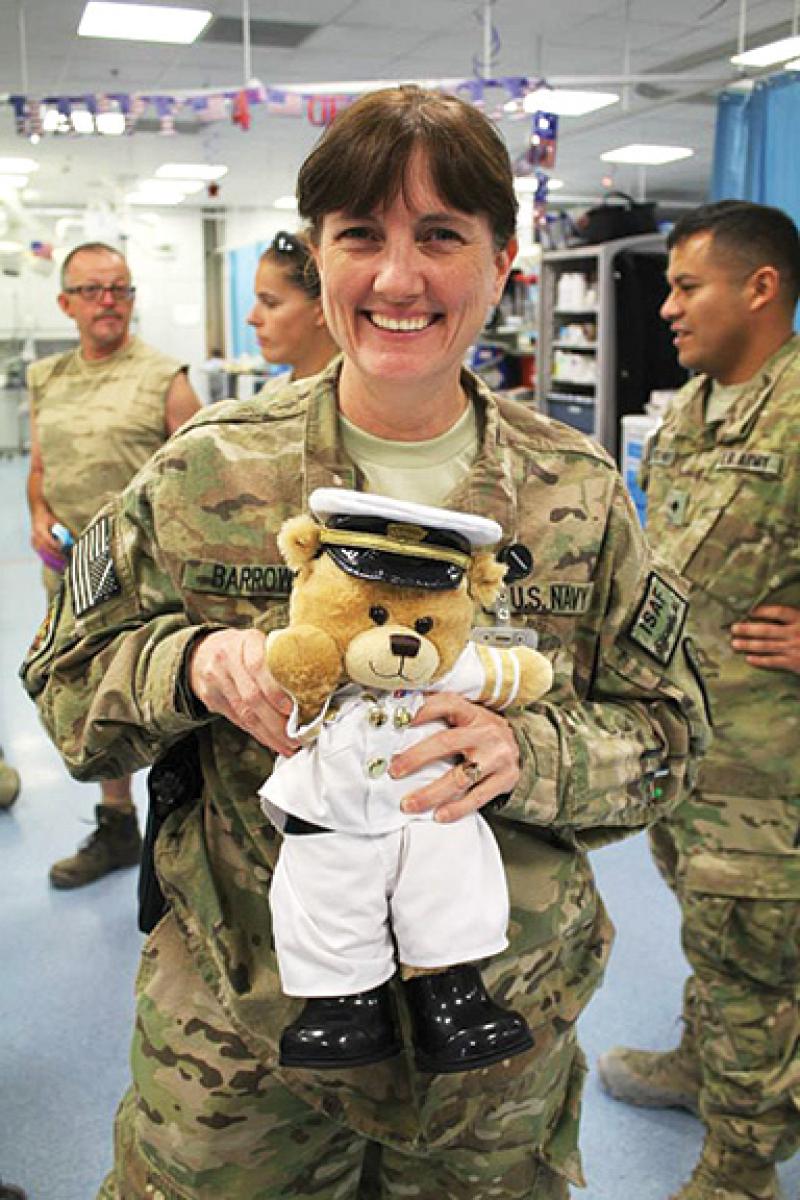
Finding Her Way Home
How a California member discovered her American Indian heritage
Diane Tells His Name, a DAR member with both Patriot and American Indian heritage, always knew she was different. While her sister was the spitting image of her mother, Ms. Tells His Name, who used to be called Mrs. Buchanan, looked—and acted—nothing like her.
“When I would ask why I was so different, my mother would tell me we had American Indian in my dad’s family,” said the member of Rincon del Diablo DAR Chapter, Escondido, Calif. “And I was always satisfied with that answer.”
When she had her first child, a doctor questioned Ms. Tells His Name about spots on the child’s back during a checkup. They were Mongolian spots, which occur in about 80 to 85 percent of American Indian children. A few years later, at a dental appointment, her dentist asked if she was American Indian because she had shovel-shaped incisors, a common distinguishing trait
September/October 2016

Carrying on Tradition
Colorado Daughter cultivates an authentic cultural experience
Holly Kinney has been immersed in American Indian culture since she was a child. Born in Denver to advertising executive parents with a passion for western art and history, Mrs. Kinney spent many summer vacations on the pueblos of New Mexico, visiting with her parents’ American Indian artist friends.
When she was 9 years old, her family moved into a new house—a full-size replica of Bent’s Fort, an important 1840s adobe fur trading post that, at that time, had all but disappeared from Colorado history. In addition to living quarters, the structure was to house a living history museum to help share the story of Bent’s Fort and the Kiowa American Indians who once inhabited the area. But when construction costs got to be too high—workers made 80,000 adobe bricks by hand—the family decided to open a restaurant instead.
Since 1963, the Fort Restaurant has served traditional foods of the Early American West, such as buffalo, corn, beans and squash, sourcing recipe inspiration from historical documents and old cookbooks. When the Fort first opened, Mrs. Kinney’s family was determined to make it not just a culinary but a cultural experience as well. Servers dressed in traditional garments, the walls were adorned with American Indian art, and there was even an historical interpreter on site.
September/October 2016
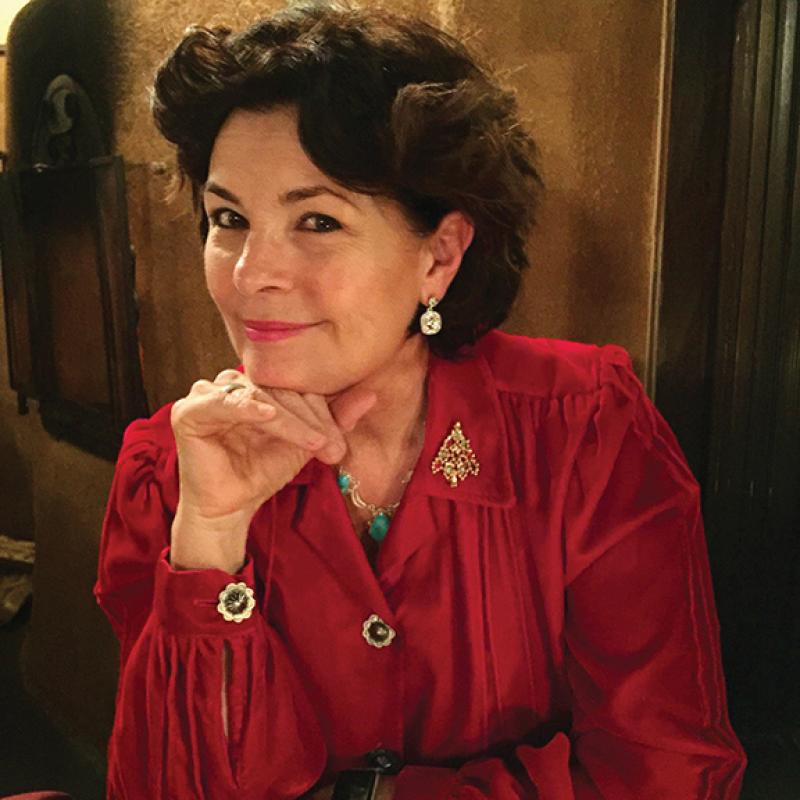
Fired Up
When there’s an overnight emergency in her district, lieutenant firefighter and EMT Liza Babington doesn’t have to go far before springing into action. When she became a volunteer firefighter for the Boone County Fire Department in Columbia, Mo., in 2010, Lt. Babington also became a full-time resident at the fire station. In exchange for taking calls and responding to emergencies at night, she gets to live at the fire station rent-free.
As a resident, Lt. Babington responds to more calls than a typical firefighter in her district might. Car accidents, stranded cats in trees and medical emergencies are all commonplace in her mostly rural district.
“It’s important to remember that, no matter how big or small, every call is an emergency to someone,” she said. “Our job is to make sure everyone is OK and do what we can to help them.”
At the scene of a fire, Lt. Babington takes on any necessary task, including assessing the situation, creating a plan of action, pumping the truck or fighting the fire. “I do like to play to my strengths when I can,” she said. “I’m really good with ropes, and I’m a great problem-solver. I’m small, so I can enter easily into small spaces, and I’m good with kids, especially little girls, because they can relate to me.”
July/August 2016
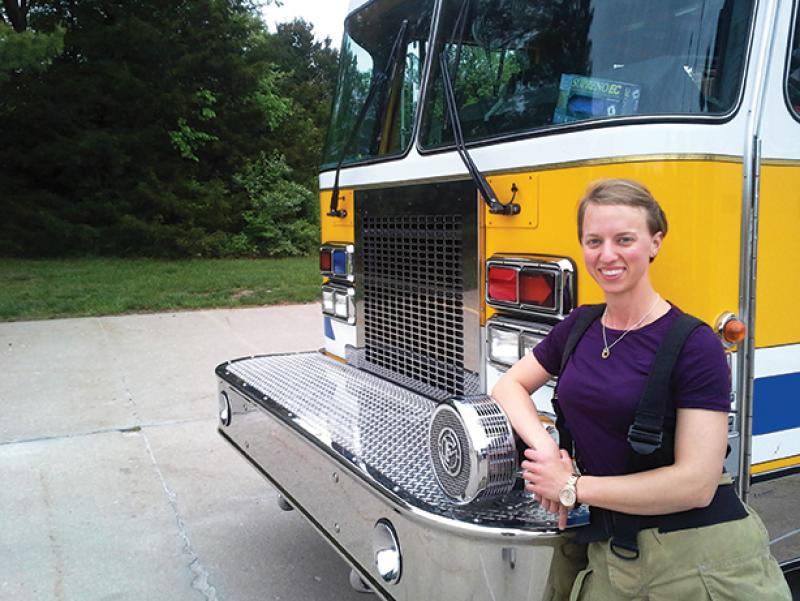
No Horsing Around
Erika Gonzalez was just 4 years old when she first rode a horse. By the age of 12, she owned one. Today, she owns two. In the barn, these horses answer to George and Blake, but on competition days, they are known as Copper Dancer and Yes, This is It—names that pay respect to the horses’ thoroughbred racing pedigrees.
During equestrian competition season, which runs late March through the beginning of November in her home state of Maryland, Ms. Gonzalez rides at least five days a week, sometimes six, depending on which horse she’ll ride in any given event. George is her primary horse and generally enters intermediate-level competitions with her; Blake is younger and currently competing at a lower level (that means the fences he jumps are lower and wider). Some years, Ms. Gonzalez travels south for the winter, training in an equestrian community like Aiken, S.C., or Ocala, Fla.
“The horses love going south because it’s warmer for them,” said Ms. Gonzalez, a member of Goshen Mills DAR Chapter, Gaithersburg, Md. “It also gives me a head start on the season, which I sometimes need depending on what my goals are for that year.”
May/June 2016
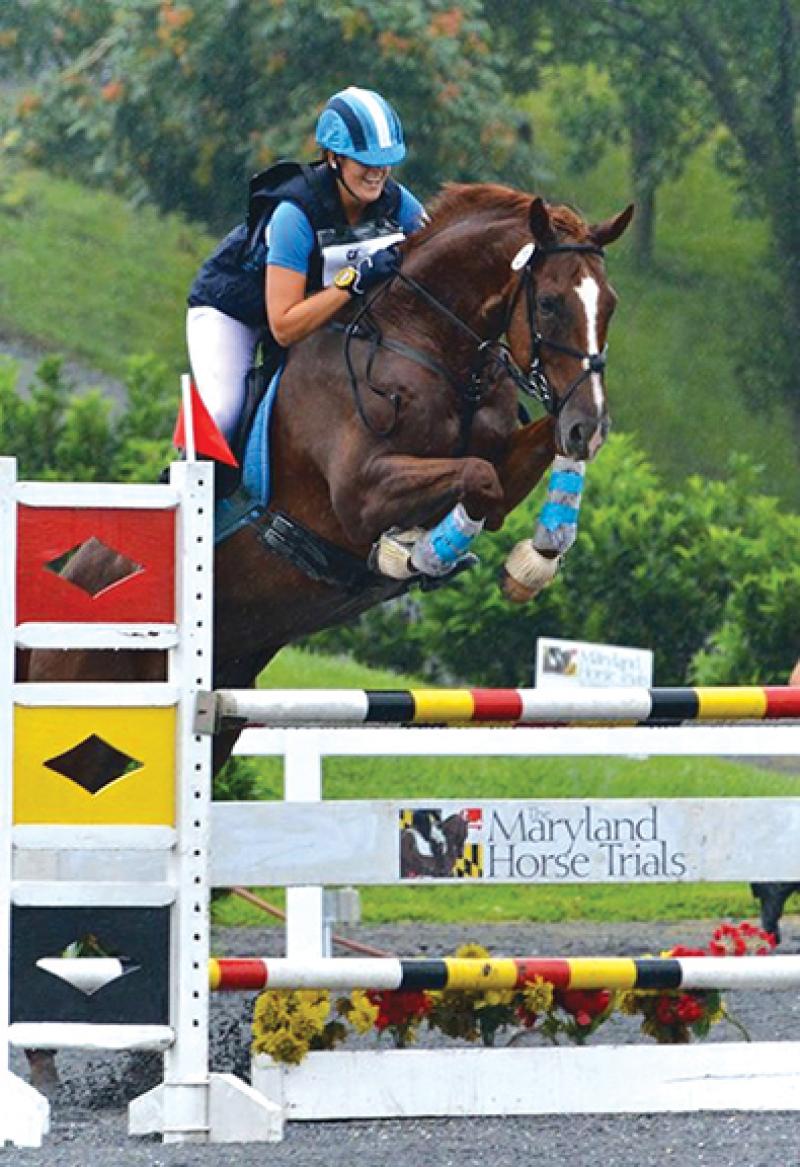
Saluting Civil Servants
t has been 50 years, but Frances Goodwin Holt can still recall her first day of work at the Naval Weapons Station in Yorktown, Va.—that’s how bad it was. From the first person she met when she walked through the door to the supervisor who would later become her mentor, everyone cast doubt on her ability to succeed. She was a chemist, having graduated four years previously with high honors, but that hardly mattered. All they saw was a woman, and they couldn’t fathom the success she would bring to the Navy over the next 48 years.
Dr. Holt worked as a chemist in the Naval Mine Engineering Facility until 1981, when she transitioned to managerial roles. In 2006, she became the executive director of the newly created Navy Munitions Command, designed to align all naval ordnance support operations worldwide into a single unit. As executive director, Dr. Holt provided the strategic vision, leadership, technical knowledge and administrative skills to ensure the U.S. Navy always had access to the right weapons at the right time and in the right place.
For her service to the Navy, Dr. Holt received the Distinguished Civilian Service Award, two Navy Superior Service Medals and a Federally Employed Woman of the Year award. And Building 1959, the 64,000-square-foot, state-of-the-art headquarters for the command, is unofficially known as the Holt Building for Dr. Holt’s involvement as its champion.
March/April 2016
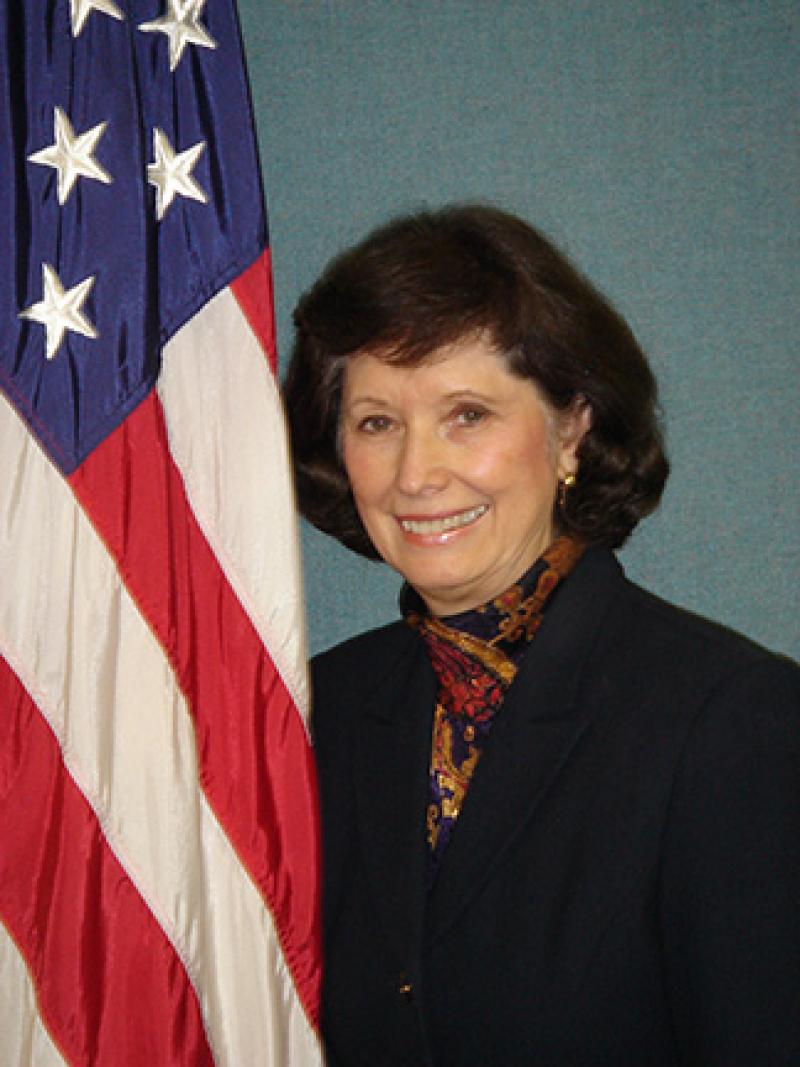
Saluting Civil Servants
As the branch chief of procurement for the NATO Support and Procurement Agency in Capellen, Luxembourg, Michelé Hull oversees contracting for NATO operations in Afghanistan, as well as Hungary, Iraq, Italy, Kosovo, Latvia, Lithuania and Macedonia. At the height of NATO’s involvement in Afghanistan in 2011, Ms. Hull’s team consisted of more than 40 contract officers. It has since shrunk to 20, but that doesn’t mean her job is any less hectic. She routinely works 10-hour days and spends most of that time interacting with contractors and contract officers in the field.
“I go into work and I never know what will hit me,” said Ms. Hull. “It’s anything but predictable, particularly when you’re talking about a war zone.”
Working for NATO since 2006 and in this position since 2011, Ms. Hull has deployed to Afghanistan five times, most recently in May 2014. While there, she never leaves a force-protected zone, but safety training and protocols, as well as ballistic vests and helmets, keep her safe if the base comes under fire.
March/April 2016
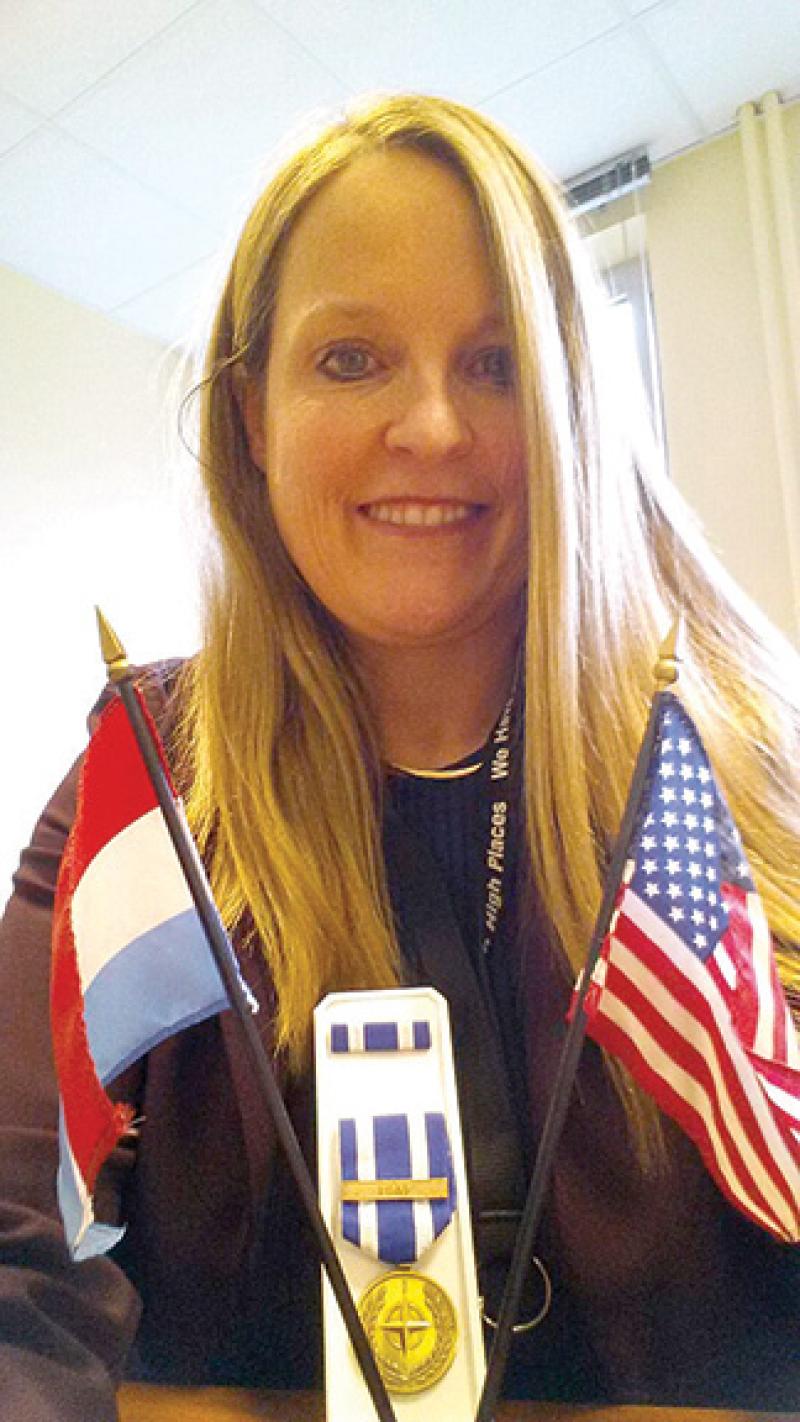
Paving Her Own Way
Hawaii State Representative Cindy Evans credits hard work for her path to success
The Hawaii House of Representatives is a part-time legislature, but Cindy Evans (D-HI) considers it her full-time job—and then some. When she’s not in session in Honolulu, Rep. Evans, who also serves as majority floor leader, is back in her home district meeting with community leaders, listening to the needs of constituents, researching issues and helping effect change one step at a time.
Originally from Illinois, Rep. Evans was introduced to the idea of public service early on. Her parents were both World War II veterans, and her father, who was a plumber, was an elected representative in his union.
After graduating from high school, Rep. Evans moved to Washington state to pursue a degree in oceanography, but ultimately studied business administration. She worked full-time at a phone company to pay her tuition bills.
“While there, I became a union steward, which taught me a lot about negotiation and finding common ground,” says the member of Hawai’i Loa Chapter, Kamuela, Hawaii.
January/February 2016

Champion for Veterans
Dr. Linda Schwartz still has the issue of Life magazine that made her want to join the U.S. Air Force as a nurse during the Vietnam War. It was filled with photos of soldiers covered in mud, some of them dying. “We saw the war every night on TV, but something about that magazine made me get up off the couch and join,” said the member of Abigail Phelps DAR Chapter, Simsbury, Conn. “I said to myself, ‘Those are Americans, I’m a nurse, and I should be there, too.’”
She volunteered in 1967, but because of a rule that no more than 2 percent of the armed forces could be women, she didn’t begin training until the following year. By 1968, she had arrived at Tachikawa Air Force Base in Japan, a battle casualty staging area for the Vietnam War. Stationed there for two years, Dr. Schwartz sometimes worked around the clock caring for injured soldiers.
Nursing casualties from the bloody Battle of Hamburger Hill in May 1969 reaffirmed Dr. Schwartz’s decision to join the Air Force. Wounded soldiers, even those with severe injuries, were pleading with her to take care of their worse-off buddies first. “To see how they cared for each other, it made me realize that I would never be able to go back to civilian nursing,” she said.
November/December 2015
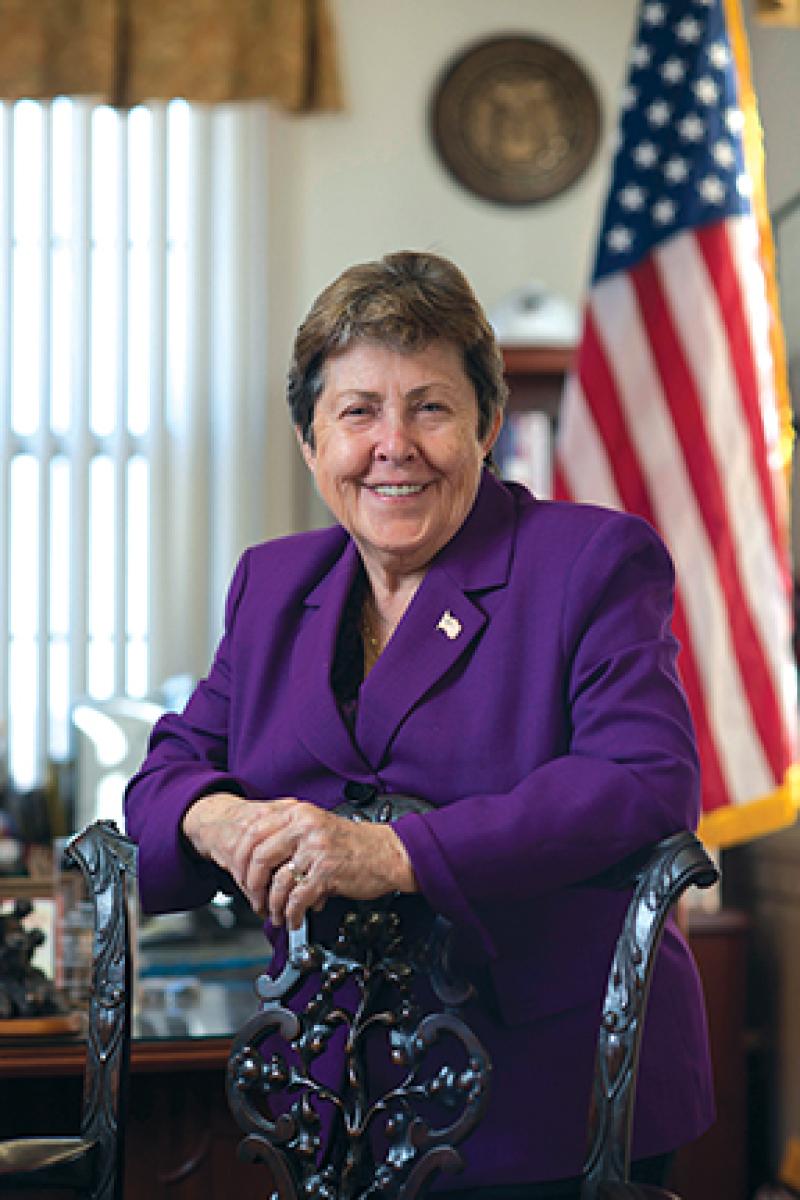
Making History Accessible
Pennsylvania Daughter and Penn State Librarian Sue Kellerman turned her passion for history into a career with worldwide impact—pioneering the field of preserving and digitizing print collections.
As the Judith O. Sieg Chair for Preservation at Penn State University’s Pattee Library, Sue Kellerman is responsible for the care and preservation of important collections of historical documents. When she started in this role almost three decades ago, such preservation simply meant careful bookbinding and microfilming and the use of de-acidifying paper in order to slow documents’ inevitable deterioration. During the past 15 years, Ms. Kellerman’s responsibilities have expanded to include overseeing the digitization of university collections in order to prevent further disrepair, and also to promote free, open access to the materials. Today, Penn State has one of the country’s largest digitized collection of maps, as well as numerous other digitized collections of Pennsylvania history that are available to the public.
Ms. Kellerman, a member of Bellefonte DAR Chapter, Bellefonte, Pa., is now considered a pioneer in her field. Excluding graduate school and a two-year stint in Ashland, Ky., as a reference librarian, she has spent her entire career at Penn State, where she is now an endowed chair.
September/October 2015
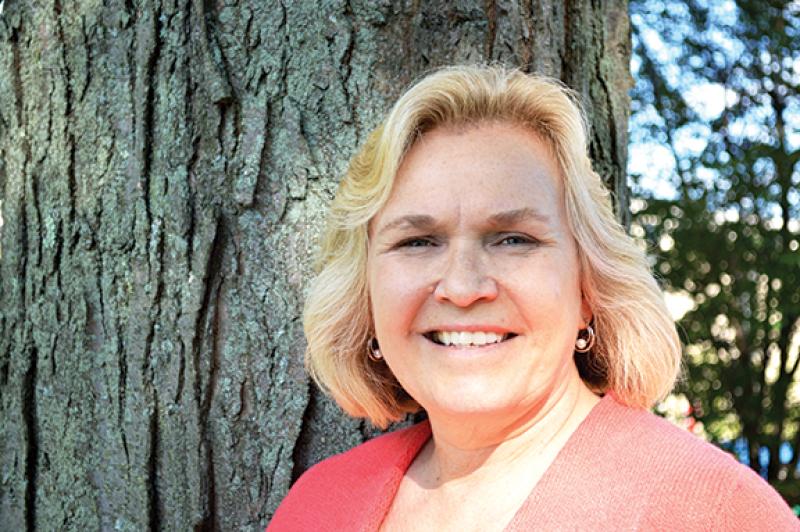
Investing in the Future
As a lifelong educator, Kathy Bihr has experienced many proud moments, from seeing individual students succeed to being recognized for her leadership in education. But nothing could top the opening of the Tiger Woods Learning Center in Anaheim, Calif., in 2006.
Hired as the executive director of the Tiger Woods Foundation in 2004, shortly after finishing her doctorate in educational leadership, Dr. Bihr was given a broad directive from her new boss, legendary golfer Tiger Woods. He wanted the learning center to be a safe place for kids to come after school—a place where they would have access to learning opportunities, particularly in science, technology, engineering and math (often called STEM education).
“The development of the learning center was a big unknown because it hadn’t been done before,” says the member of John Greenleaf Whittier Chapter, Whittier, Calif. “That made the opening extremely emotional, even more so when we saw kids from all over the city talking and figuring out chemistry concepts together. It put a lump in my throat.”
July/August 2015
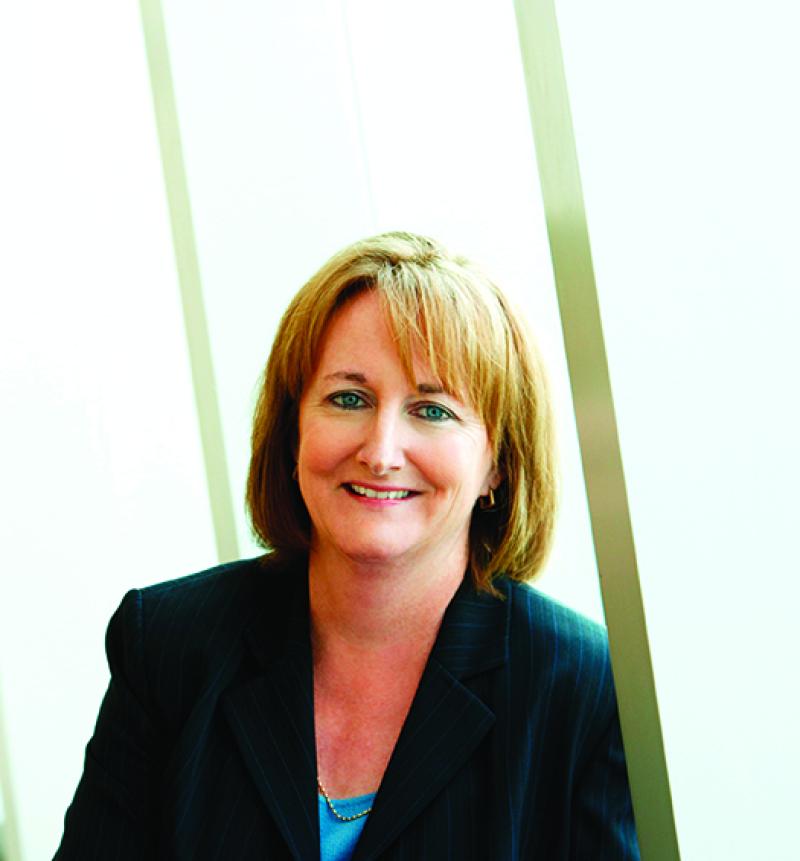
Empowering Women Abroad
When Sarah Oxford decided to study abroad in Cameroon in 2004, she was looking forward to learning a new language and going to a part of the world that would be difficult to visit on her own. The experience delivered, and then some. What Ms. Oxford discovered was a multifaceted country with more than 250 ethnic groups and a diverse landscape of deserts, rolling hills, rainforests and volcanoes.
“It’s a captivating place,” says the member of Ponte Vedra Chapter, Ponte Vedra Beach, Fla. “The cultures are very family- and community-focused, and I don’t remember a day passing where I didn’t roll with laughter or dance. I’d never seen a place more fascinating, nor had I ever felt more welcomed. But in all its beauty, Cameroon faces serious challenges, such as a poor health system, rampant corruption and bordering countries in conflict.”
Eager to do her part, Ms. Oxford returned to the Central African nation in 2007, this time as a volunteer with Breaking Ground (www.breaking-ground.org), a grassroots organization that provides funding and other resources to motivated Cameroonian communities with specific goals.
“What makes Breaking Ground distinctive is that each project is radically different, and our timescale depends on the community, not the donor,” she says. “The common thread among projects is that it is the community’s idea, and they must own it.”
May/June 2015
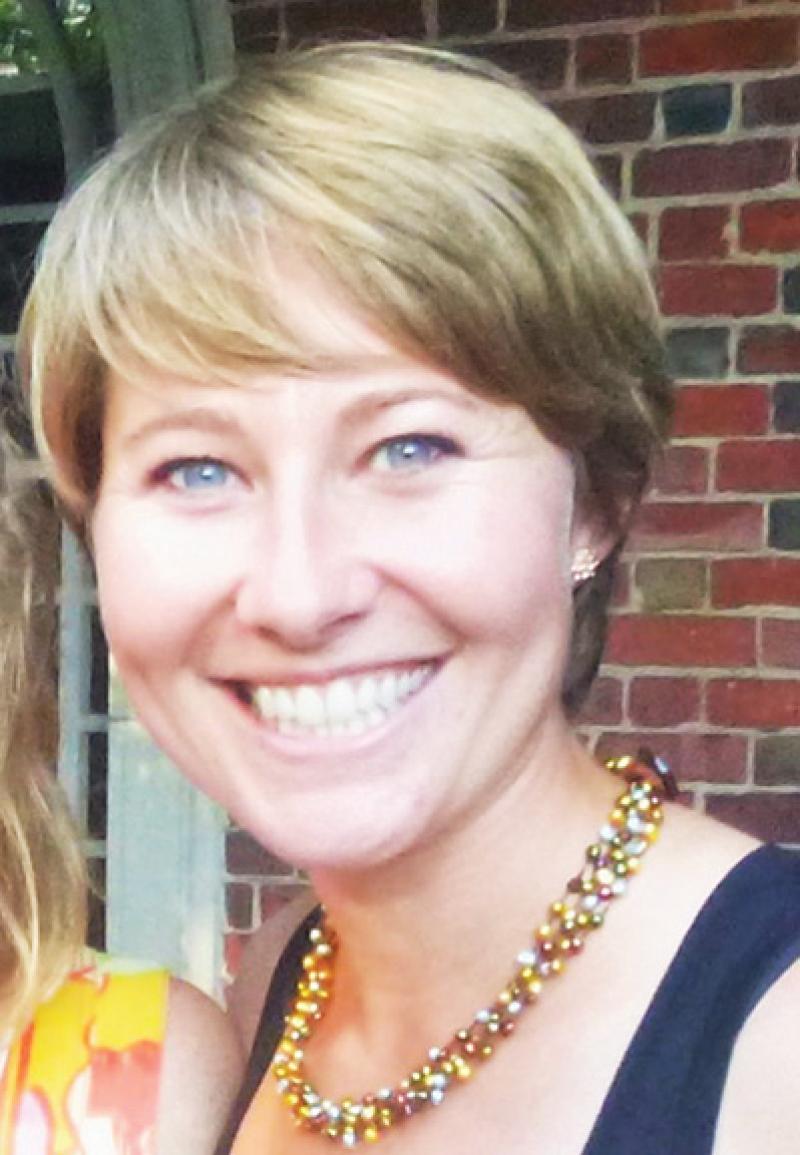
Exploring 50 By 30
Taylor Harkins always considered herself an avid traveler. She traveled extensively with her family as a child, and in college, she participated in Semester at Sea, a study-abroad program run by the University of Virginia. Her ship docked in locations around the world, from Morocco to Mauritius. But in 2013, when a friend sent her an online quiz about how many states she had visited, she was surprised by the results. “Eighteen states,” says the member of Presidio Chapter, San Francisco. “I had actually been to more countries, and that was really surprising since I love America.”
She decided to increase her state count by visiting the other 32 by the time she turned 30. With about six years to go, she picked up the phone, called a friend in Michigan (a state she hadn’t been to) and asked if she could visit that weekend.
At press time, Ms. Harkins had increased her state count to 30, with trips to five more states planned for the remainder of the year. “I’m going to New Mexico with my mom, and then taking a father-daughter road trip through Montana, Wyoming, South Dakota and Nebraska before attending a family wedding in Kansas,” says Ms. Harkins, who now lives in Newport Beach, Calif.
May/June 2015
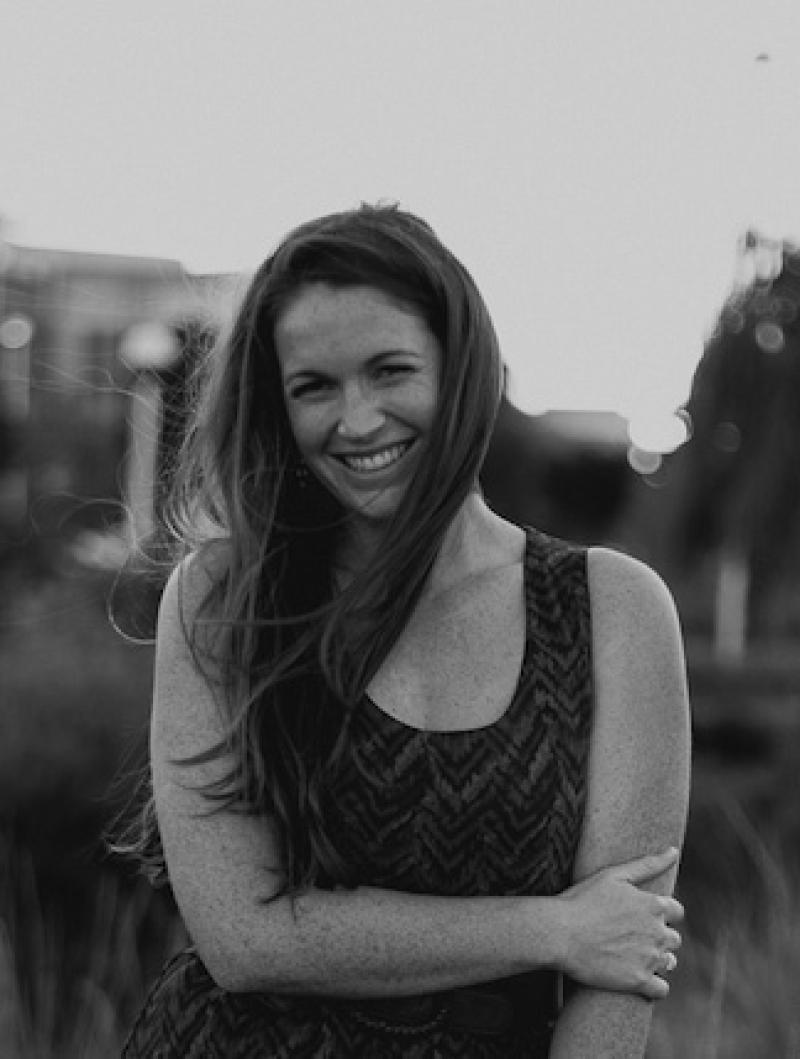
Defending Freedom
Controlled chaos. That’s how Laura Murphy describes her job as director of the Washington Legislative Office for the American Civil Liberties Union (ACLU), where she oversees a team of lobbyists, researchers and administrative staff responsible for advancing the ACLU’s public policy priorities on a wide variety of issues.
For every victory there are even more defeats, but Mrs. Murphy credits her optimism and perspective for being able to deal with them. “Defeat is part of the job,” she says. “It took 100 years for women to earn the right to vote. We’re just itty-bitty dots in the making of history.”
It’s easy to see where her drive comes from. Her parents were community and political leaders in Baltimore whose lives were dedicated to mobilizing black voters and reversing segregation laws. In her immediate family alone, she can count 14 runs for public office. “When my parents couldn’t find a sitter but had to campaign, I would tag along,” Mrs. Murphy says. “I took part in countless dinnertime debates about what it meant to be free and equal.”
Meanwhile, her journalist uncle, George Murphy, encouraged her to read The New York Times when she was 9. “Every time he visited, he would want to know what I thought about the news,” she recalls. “He was a huge influence on my life.”
March/April 2015
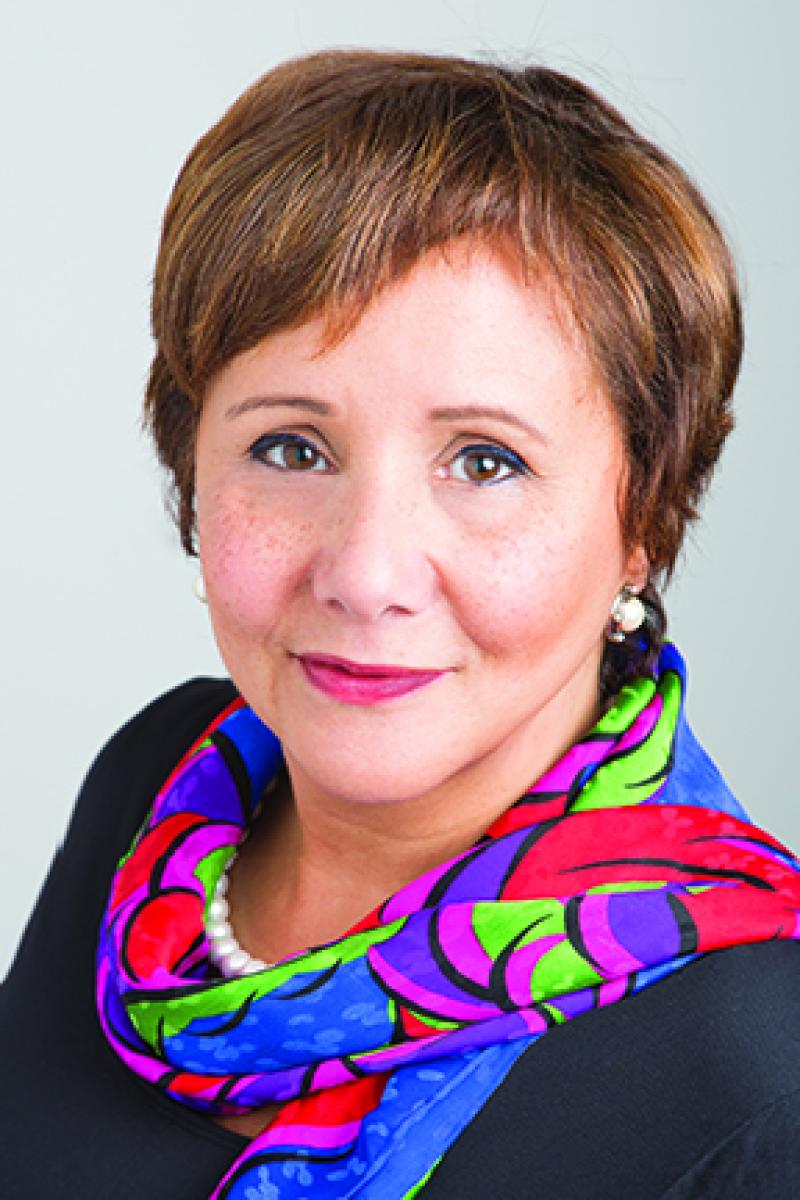
A Genealogy Journey
Roceta Gonzales always knew she had roots in America. As a child growing up in the Philippines, she often heard the story of her paternal great-grandfather, Colonel James Villard Heidt, an American officer fighting in the Philippines during the Spanish-American War. He married Ms. Gonzales’ great-grandmother, but left the Philippines shortly after she gave birth to twins and never returned.
The story was hardly a source of pride for her family, but these days she’s grateful to know it, since the details have helped her unlock a rich ancestral past, with ties to the Revolutionary War and beyond.
In order to escape instability in the Philippines, Ms. Gonzales immigrated to the United States with her family when she was 8 years old. They settled in Los Angeles, and despite being the new kid, she remembers her fourth-grade teacher made the transition easier.
“She introduced me to the class in a way that celebrated my being a new student from another country,” says Ms. Gonzales, a member of Kate Waller Barrett Chapter, Alexandria, Va. “Instead of being teased and bullied, the children looked at me as sort of a celebrity. Years later, I realized what an incredible act she performed and how influential it was for my life.”
January/February 2015
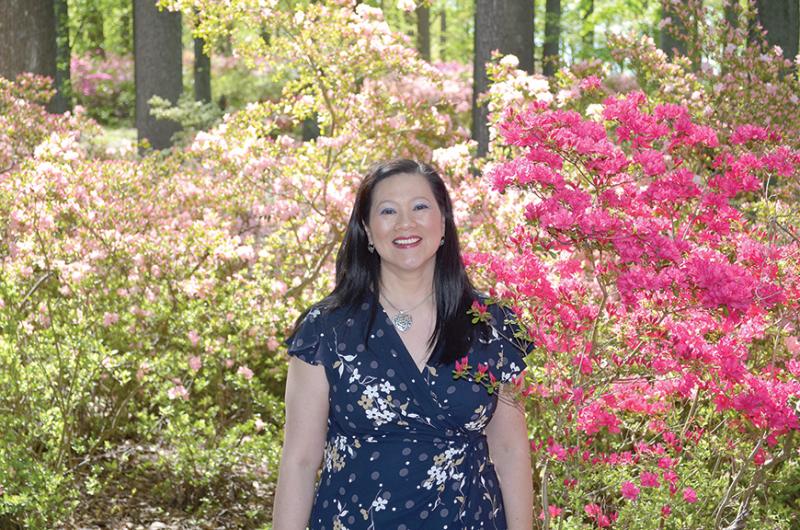
Champion of Change
Many people say it’s an honor just to be nominated, and that’s exactly how Ellen Houlihan felt when she learned that a respected colleague wanted to nominate her for the White House Champions of Change program, which recognizes everyday Americans making positive changes in their communities.
“I was literally speechless that he would consider me,” says Mrs. Houlihan, who was in the United States Military Academy’s (USMA) third graduating class that included women and now serves as vice chair of the board of directors for the West Point Association of Graduates (WPAOG).
That speechlessness turned to jumping up and down in an airport parking lot when she learned that she, along with nine other women from around the country, had won for their service as female veteran leaders. This past March, they were invited to the White House for a panel discussion and ceremony in front of senior White House and Veterans Affairs staff, as well as local male and female veterans. The day also included a luncheon, which gave the 10 honorees a chance to connect.
November/December 2014

An American Abroad
To many Americans, serving one’s country brings to mind military service. But Molly Roby knows that’s just one way to serve. In 2012, Mrs. Roby and her husband, Seth, joined the U.S. Peace Corps, a volunteer organization established by the federal government in 1961 to promote world peace and friendship. They were posted to the West African nation of Ghana, where they began a two-year post as health, water and sanitation volunteers.
Serving in two separate communities in northern Ghana, they worked to educate locals about disease prevention caused by stagnant water and inadequate sanitation, as well as methods to promote health and hygienic practices. They also taught a variety of subjects to high-school students, helped start a half-acre school garden and educated the local youth about American culture, as well as other cultures around the world.
“We worked hard to break down a lot of stereotypes and show them that Americans are very diverse, but that we all have values and goals to promote peace and responsibility to others,” says Mrs. Roby, a member of Sleeping Ute Mountain Chapter, Cortez, Col.
September/October 2014
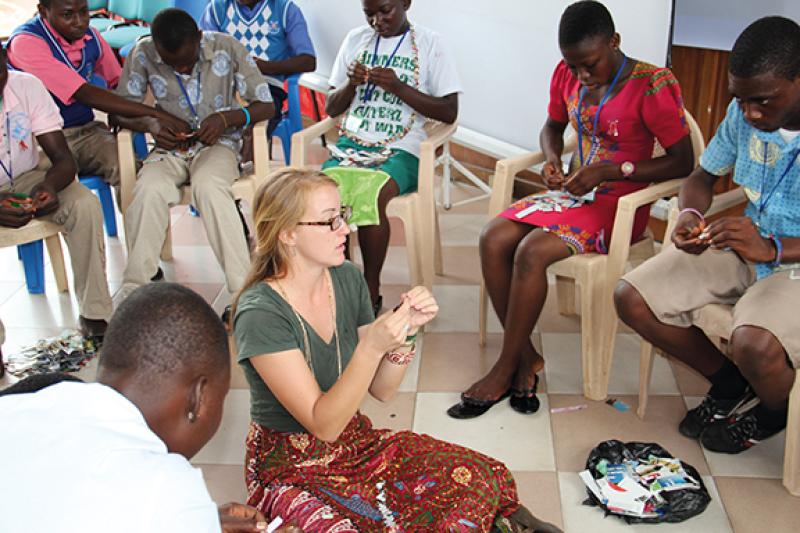
A Blue Ribbon Daughter
Every August, hundreds of thousands of people flock to rural Sedalia, Mo., population 21,500, for the Missouri State Fair. The historic fairground has been in use since the first state fair in 1901 and is one of few historic fairgrounds remaining in the country. Sixty-four of the fairground buildings are on the National Register of Historic Places, and unlike many modern fairgrounds, Sedalia’s offers a park-like setting with expansive grass lawns and giant shade trees. The historic buildings and setting are some of the fair’s biggest draws, but they also pose some of its biggest challenges, with upkeep of both consuming large parts of already slim budgets.
Wendy Faulconer takes on those challenges as executive director of the Missouri State Fair Foundation. In her role as the foundation’s only paid employee, Ms. Faulconer works to raise funds that support historic preservation, fairground improvements and agricultural education.
From January through June, Ms. Faulconer builds the foundation’s member donor base, composed mostly of Missouri farmers and other agricultural business owners. In July her focus turns to fundraising events such as the annual Governor’s Ham Breakfast, which draws elected officials and agricultural leaders from across the state. After the 11-day fair is over, Ms. Faulconer concentrates on showing appreciation to the foundation’s members and its 200-plus volunteers, and seeing that the funds raised are put to good use.
July/August 2014
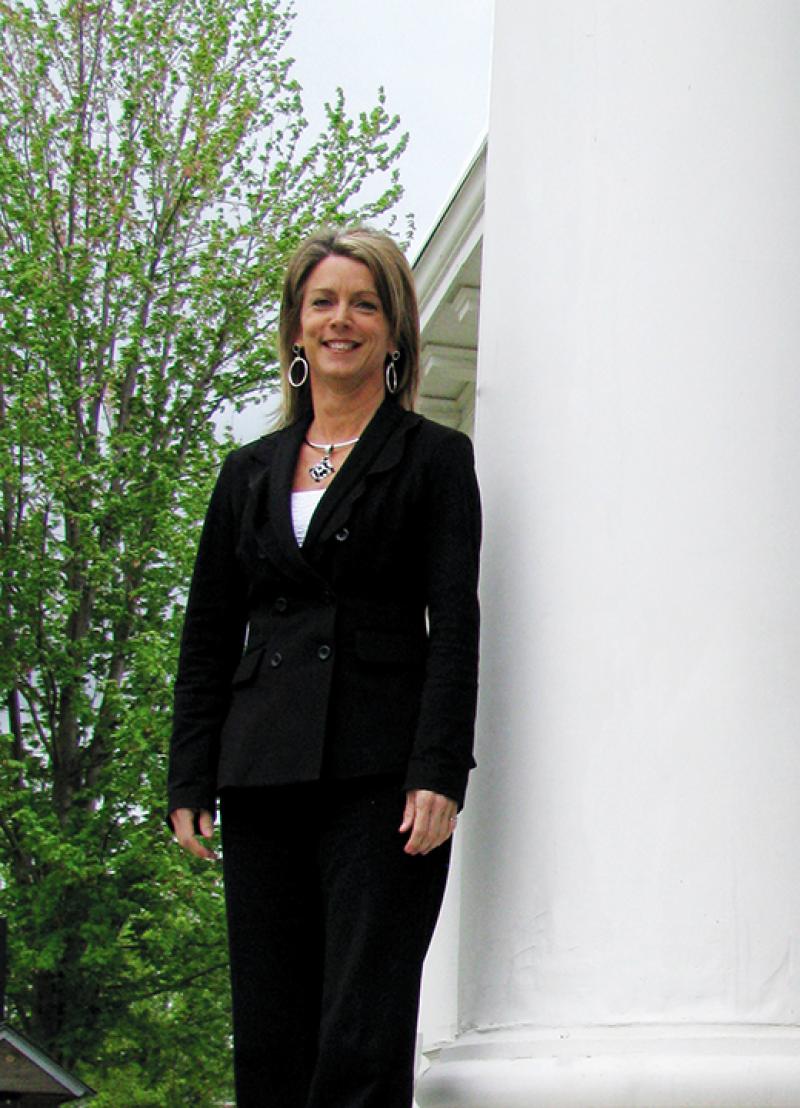
Looking for Adventure
As the wife of a dairy farmer in Idaho’s Boise Valley, Jean Davis didn’t get the chance to travel often. It’s not that she didn’t want to; there just wasn’t time to get away. “We had to be there morning and night to milk those cows,” says Mrs. Davis, who worked alongside her husband, Fred, on the farm from the late 1940s until they sold it in 1980.
She also worked full-time outside of the farm, first for the telephone company, then as the owner of a ceramics studio that began in her laundry room and expanded into a successful retail shop. She eventually became a business management assistant for the U.S. Forest Service.
In 1981, when the Forest Service offered to transfer Mrs. Davis to Seward, Alaska, she and her husband jumped at the chance, knowing it was an opportunity for a new life and a chance to travel.
May/June 2014
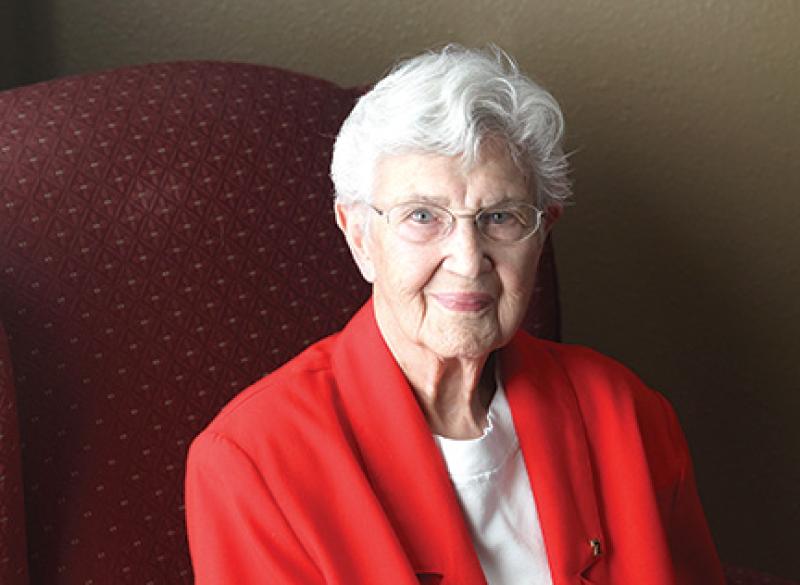
Reaching for the Stars
When Carolyn Bushman first learned about the NASA Explorer School Project in 2004, she immediately thought about what it could mean for her low-income, predominantly Hispanic students in their small, rural town of Wendover, Utah.
"We're about an hour and a half away from the nearest city, and when you're that far away, there aren't a lot of professional role models," says Ms. Bushman, a math teacher at Wendover High School. "Too many of our students were dropping out to start working at the nearby casinos. We had to find a way to show them there were other opportunities out there."
She thought the program, which provided grant money and access to NASA's people, missions, research and facilities, would help inspire her students. Others in the school felt it was a long shot. The program, in its second year, was choosing just 50 schools nationwide, and the deadline to apply was three weeks away.
March/April 2014
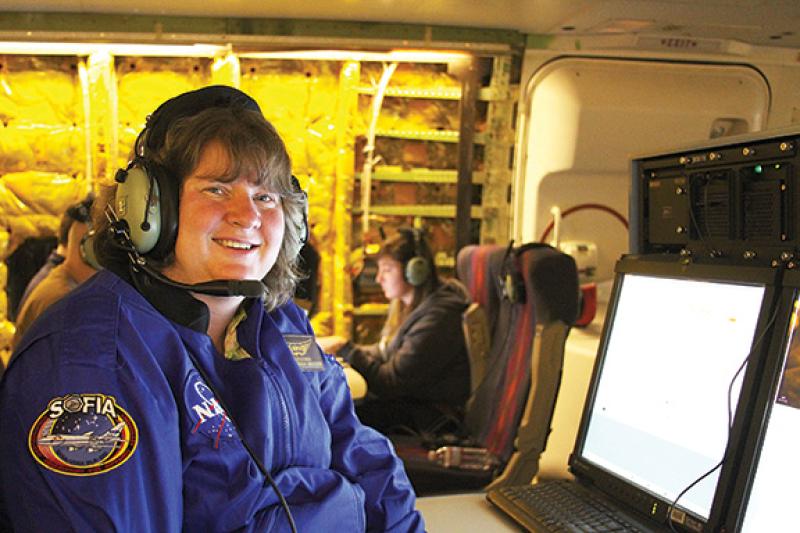
Aiming High
She’s barely into her 30s, but Ariel Batungbacal already has a globe-spanning rèsumè. Now a major in the U.S. Air Force, she has served more than five years in overseas assignments, supporting military intelligence operations in Asia, Europe and the Middle East, including three deployments supporting Operation Iraqi Freedom and Operation Enduring Freedom. For her work in the Air Force, she received the Defense Meritorious Service Medal and two Air Force Meritorious Service Medals, among others. She also worked for the Joint Chiefs of Staff at the Pentagon.
In 2012, Maj. Batungbacal was appointed to the 2012-2013 class of White House Fellows. One of America’s most prestigious programs for leadership and public service, the White House Fellowship was created by President Lyndon B. Johnson to give a select number of young leaders the opportunity to contribute meaningfully at senior levels of the federal government.
As a fellow, she got to meet President Obama, have lunch with cabinet secretaries and lead important initiatives. She calls the experience “truly remarkable” because of the other fellows. “They come from diverse backgrounds, making amazing impacts in unique fields, like climate science, computer science, justice and medicine, but all are driven to improve the world using their talents,” says the member of Margaret Whetten Chapter, Washington, D.C.
January/February 2014
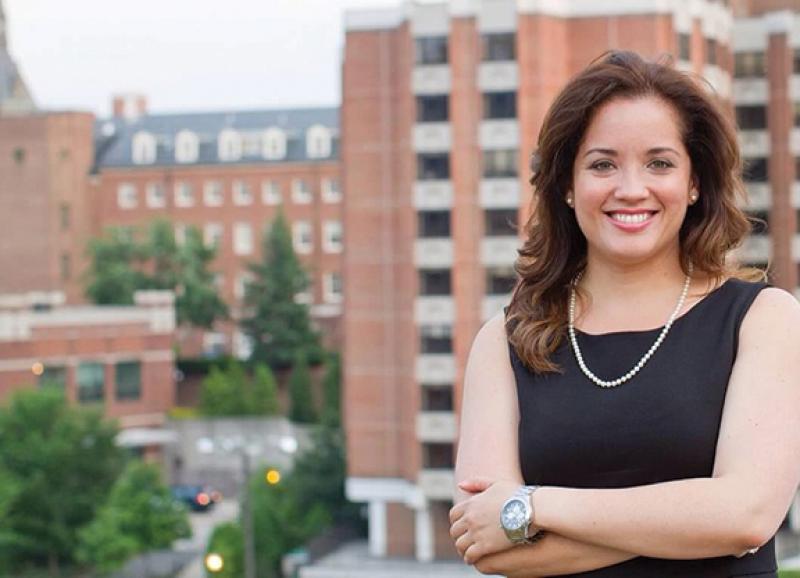
Patriotism on Parade
As a volunteer balloon handler for the Macy’s Thanksgiving Day Parade for the past decade, Katherine “Kitty” Bowers knows which balloons draw the most cheers from the crowds of children watching from New York City’s sidewalks. She has handled some of the most popular balloons, including Hello Kitty and Kermit the Frog, which alone requires 70 handlers to navigate through the 2.65-mile route.
“You can’t imagine the emotion when you’re walking down Broadway in front of all these children,” says the member of the Francis Hopkinson-Monmouth Court House Chapter, Freehold, N.J. “By the end of the day, your face hurts from smiling so much.”
Your legs hurt, too, Mrs. Bowers says. But the exhaustion doesn’t stop her from enjoying a traditional Thanksgiving meal with her sister, Barbara Eckert, a fellow DAR member, and their brother, Charles Eckert, a member of the Sons of the American Revolution. Both also are balloon handlers in the parade. “We let the crowds disperse and find somewhere to get a turkey sandwich,” she says. “We always make sure to have turkey.”
November/December 2013
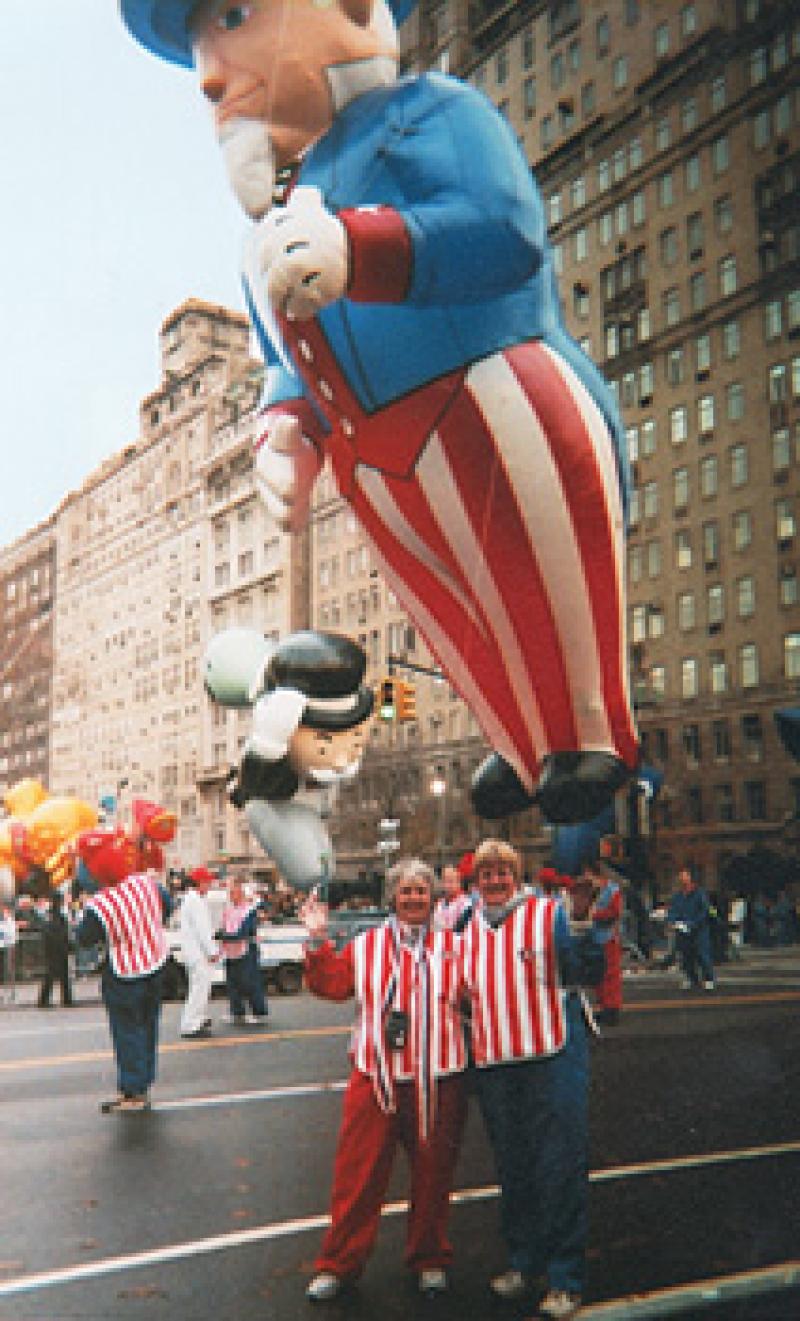
Creature Comforts
Angel Forbes Simmons always knew she’d eventually take over her family’s farm in Maryland. She’s an only child, and her mother had been saving the property for her, though both of them were living in Florida. The tobacco farm had been in her family since 1802, and today it is one of only four bicentennial farms—a designation given to farms in continuous operation for at least 200 years—in the state of Maryland. But when the time came to finally take over the land in 1996, Ms. Simmons still didn’t know the first thing about farming.
“I’m a Florida girl through and through, so I knew tobacco wasn’t going to work anymore,” she says. “The crop is very labor intensive, and you need a lot of acreage. Plus, I wasn’t interested in farming tobacco.
After doing extensive research, Ms. Simmons settled on turning the property into an alpaca farm. “At the time, they were quite marketable,” she says of the gentle South American animals coveted for their soft fleece. “They didn’t need a lot to care for them, and they’re very lovable animals.”
September/October 2013
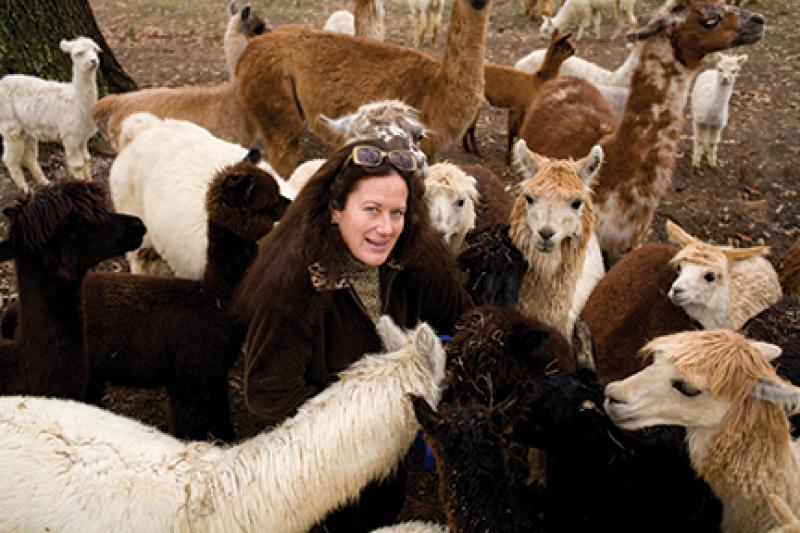
Reversing the Trend
Michelle Bouchard says she always has been a risk-taker who was willing to “jump off a cliff” for an idea she believed in. She was once a corporate spy for a software company. She ran for public office. She also writes plays and sings opera. So in 2007, when her good friend, heart surgeon and talk-show host Dr. Mehmet Oz, asked her to head up a national initiative that would tackle the problem of obesity among teens, she didn’t hesitate to say yes.
Armed with her fearless attitude and a long history of successfully leading nonprofits, Ms. Bouchard became president of HealthCorps, a high-school peer mentoring program that aims to improve the nutrition, fitness and mental resilience of teenagers through fun and experiential in-school and community education.
When she became president of the organization in 2007, HealthCorps had an annual budget of $600,000 and was active in seven schools in New York and New Jersey. Six years later, the organization’s budget has grown to almost $9 million, and the program spans 66 schools in 14 states. By 2015, Ms. Bouchard says HealthCorps hopes to be active in 100 schools across all 50 states.
July/August 2013
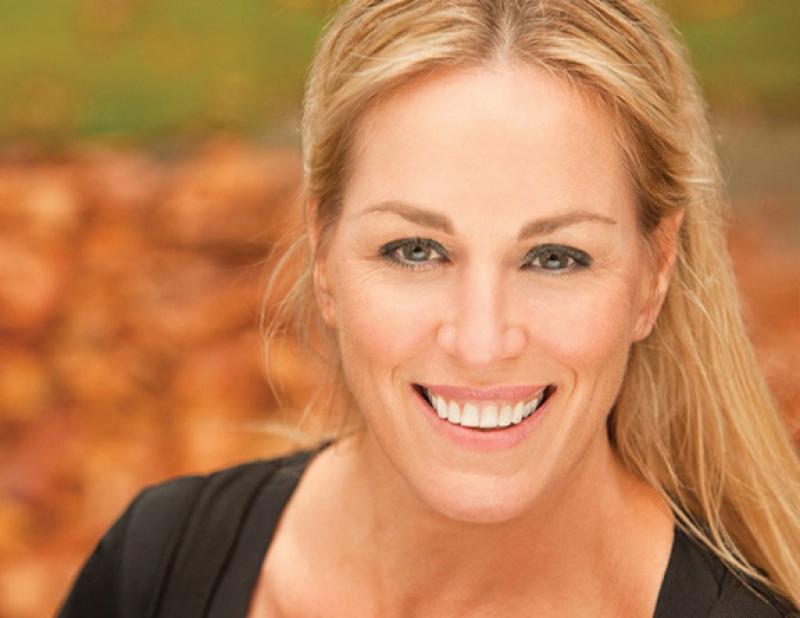
Opening Doors of Opportunity
Frances Hesselbein was never president of her student council, and she grew up wanting to be a poet. Yet she went on to become an inspiring and collaborative leader. “I never saw myself as a leader,” says Mrs. Hesselbein. “In my case, someone opened a door for me, and I went through it.”
That door was the opportunity to lead Girl Scout Troop 17 in Johnstown, Pa., which had lost its troop leader and was in danger of being disbanded. Mrs. Hesselbein did not want the job at first. “I protested, but this woman recruiting me pleaded with me that 30 little 10-year-old girls were going to lose their troop if I didn’t take the job,” recalls Mrs. Hesselbein, a member of the Mary Washington Colonial Chapter, New York, N.Y.
She agreed to take the position for six weeks, but Mrs. Hesselbein ended up staying on for eight years until the girls graduated from high school.
March/April 2013
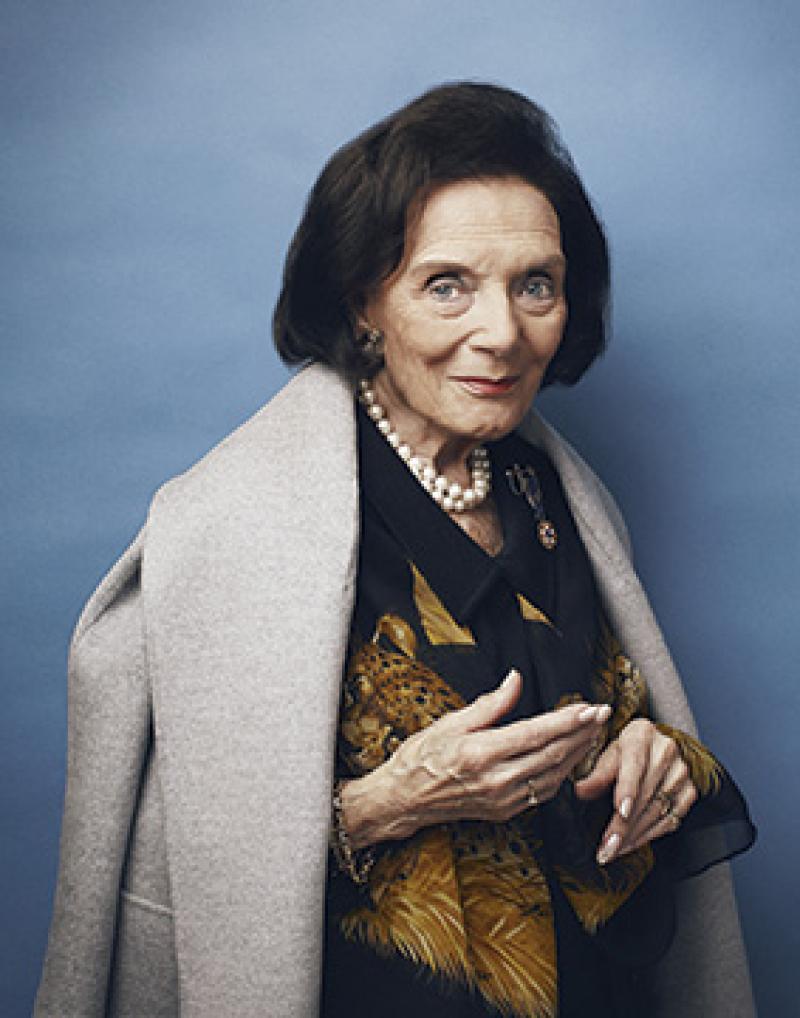
Battle Detective
Acqunetta Anderson was conducting research for a family history book when she came across a set of documents about the Battle of Bladensburg, which took place during the War of 1812. One was a British map of the battle site and the other was an account of the battle written by Joshua Barney, a commodore in the U.S. Navy who helped defend—unsuccessfully—the nation’s capital from the British on August 24, 1814. After looking at the documents, a thought occurred to her: Could part of the battle have taken place in Washington, D.C.?
To verify her suspicion, Mrs. Anderson, who is lead historian for the Benjamin Harrison Society (BHS), a nonprofit dedicated to educating the public about the Revolution and the War of 1812, created a historic overlay map using the battle map and a present-day map of the area. While the map showed that the majority of the battle took place in Maryland, as history books have long chronicled, she also discovered that Joshua Barney and some 300 flotilla-men, 300 militiamen and 100 Marines may have been just inside the District of Columbia line when they fired their five cannons that inflicted heavy casualties on the British.
January/February 2013
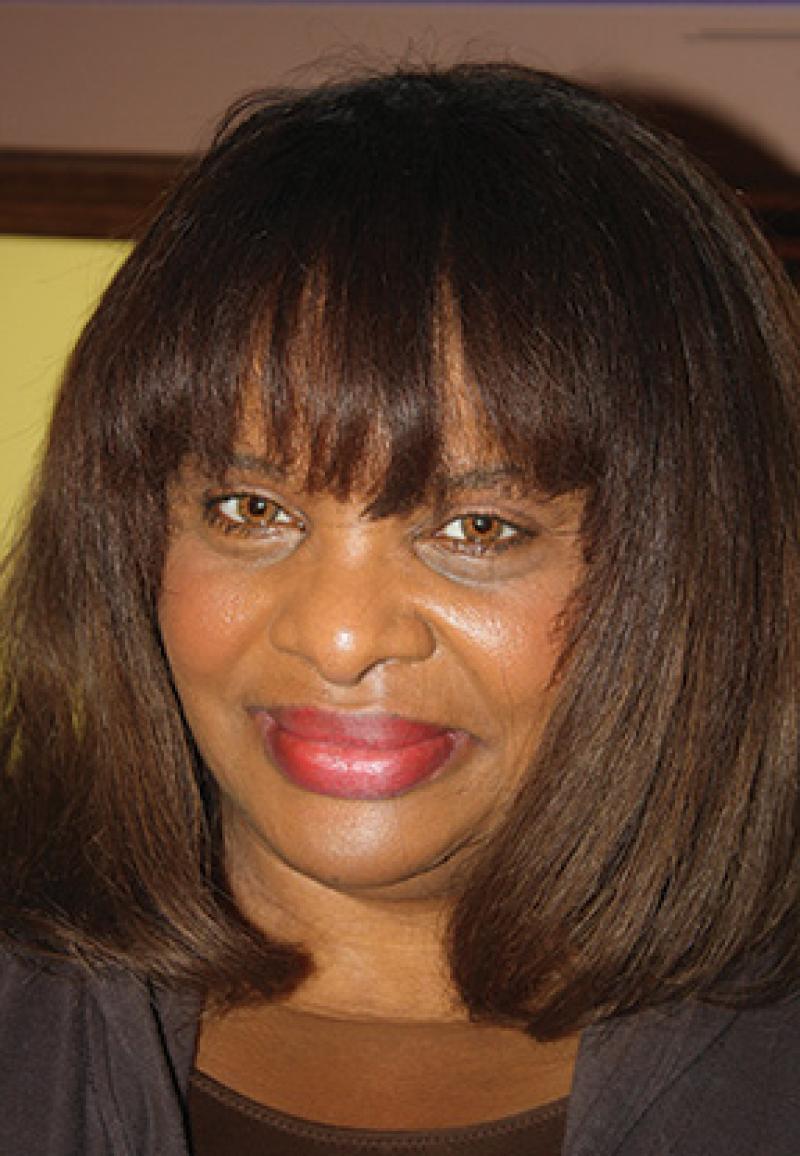
Active-Duty Daughters
After completing her first year at the United States Military Academy at West Point, Captain Lorilyn Woods took a ride in a Blackhawk helicopter. It was that ride during summer training that set her sights on pursuing aviation. After graduation in 2004, Capt. Woods went directly to Fort Rucker in Alabama, where she learned to fly the AH-64D Apache Longbow helicopter.
In 2008, Capt. Woods spent 11 months as company commander in Iraq, where she flew in support of the ground troops stationed at COB (Contingency Operating Base) Speicher.
“When the Apaches were around, the ground troops knew they wouldn’t get shot at,” she says. “It was so rewarding to know that, by being their eyes in the sky and giving them a better idea of what was going on around them, I was protecting them and keeping them out of harm’s way.”
November/December 2012
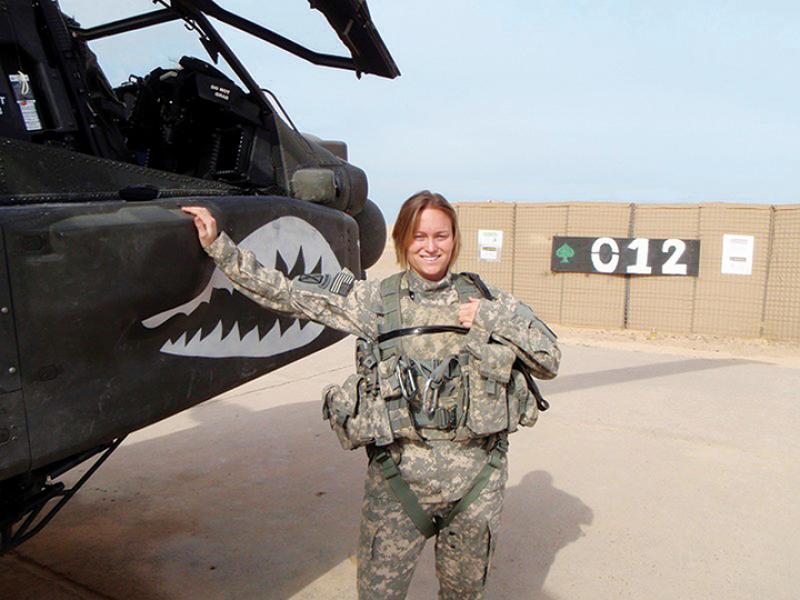
Active-Duty Daughters
As a member of the 27th Infantry Brigade of the New York Army National Guard for the past 19 years, Major Roberta Comerford has been deployed three times: First to Fort Drum, N.Y., then she was sent to Iraq, and now she’s in Kuwait, where she serves as director of emergency services and provost marshal in Northern Kuwait. She oversees hundreds of military and contract police and fire and EMS personnel charged with protecting U.S. military facilities in Kuwait.
When asked what a typical day is like, Maj. Comerford laughs before explaining that “a typical day is an atypical day.” But, she says, it shares many similarities with her civilian job as a sergeant supervisor in the North Syracuse, N.Y., police force. “Stolen property is stolen property, whether it happens back home or on a military base,” she says.
Maj. Comerford knew she wanted to go into law enforcement after completing a college internship and getting hired full-time at the district attorney’s office. “I really love law, and I found it so interesting,” says Maj. Comerford, who became a military police officer in 1993 and joined the North Syracuse Police Department five years later.
November/December 2012
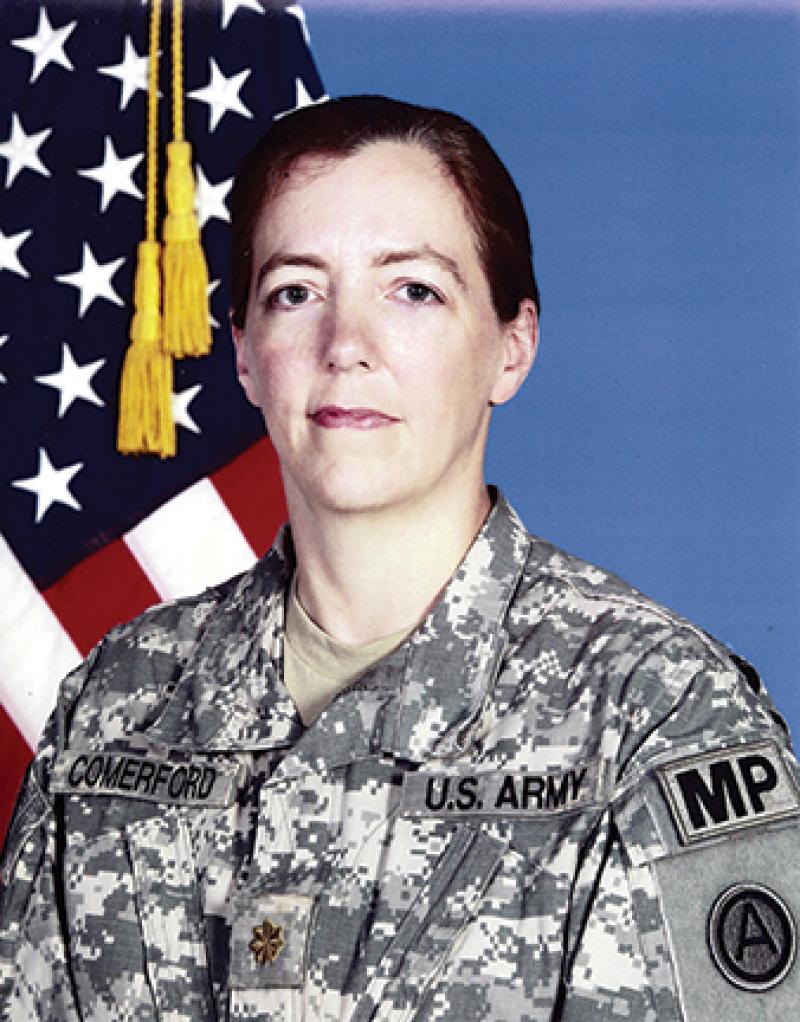
Active-Duty Daughters
When Diana Arnold received an Army recruitment letter in February 2005, she threw it away, thinking it was a joke. “Why would the Army want me?” thought Captain Arnold, a registered dietitian at the time. But the more she learned about being in the Army Reserves—from friends and the Army recruiter with whom she met—the more she realized that it was a good fit.
Once she joined, she threw herself into being a reservist. “I celebrated both my 25th wedding anniversary and my induction into the Army the same day,” Capt. Arnold says. “I was in an Armed Forces Parade on my 50th birthday, and celebrated my 30th anniversary doing field training.”
Climbing the ranks quickly, Capt. Arnold became a company commander of her unit four years ago, but stepped down earlier this year when the opportunity came up to spend nine months in Kuwait as the nutrition care officer in charge of the Kuwaiti Theater of Operations.
November/December 2012
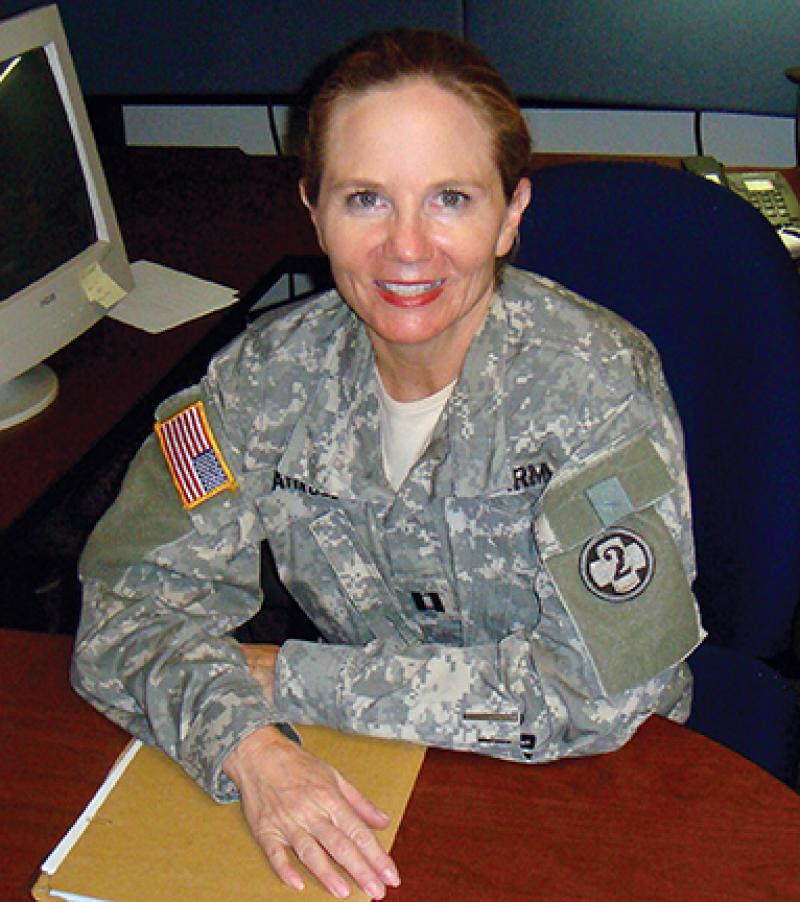
Medal in Sight
For her second Olympic Games appearance, Amanda Clark wants only one thing: a medal. It’s an ambitious goal for the sailor, who started training with a new partner just three months before the Olympic Trials began in 2011. But it’s a dream she hopes to make a reality this August, when Mrs. Clark’s Team GO SAIL will represent the United States in the women’s 470 sailing event at the London 2012 Games. (The event is named for the boat—the two-person International 470, which measures 4.7 meters long.)
Mrs. Clark found a shared determination and drive in her partner, Sarah Lihan. The past year has pulled Mrs. Clark away from home and her husband, Greg, for long stretches of time so Team GO SAIL could participate in worldwide sailing events and log grueling training sessions on the water.
When the team isn’t training together (Mrs. Clark lives in Shelter Island, N.Y., while Ms. Lihan resides in Fort Lauderdale, Fla.), its members are getting stronger on their own. Every day they lift weights for two hours and do cardio exercises for another hour.
July/August 2012
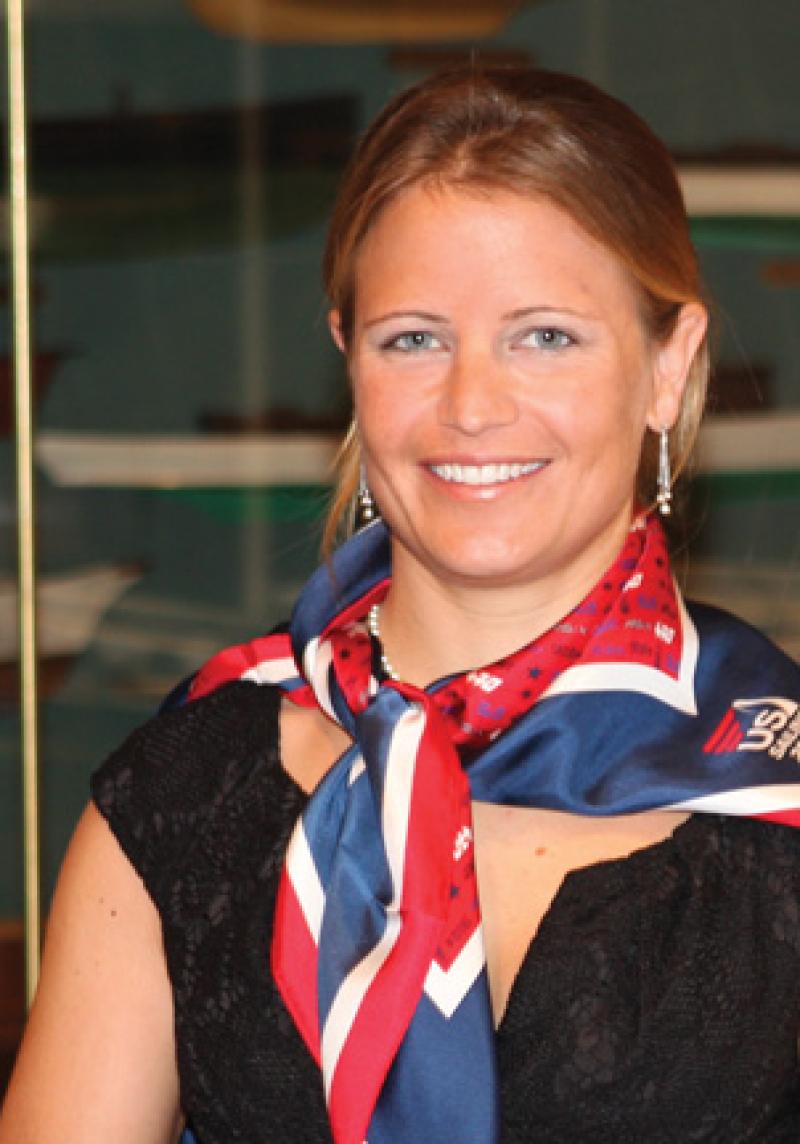
Making a Splash
Mary Kelly Vowell is proud of the fact that, at 86 years old, she doesn’t take any medication. She knows that good genes have a lot to do with it, but she also gives some of the credit to being an avid swimmer.
Mrs. Vowell started swimming for health reasons in the 1980s. “My ankles and feet were swelling, and my doctor told me I had a choice to make,” says the member of James Buckley Chapter, Martin, Tenn. “I could either walk more, prop my feet up for a couple of hours each day or start wearing elastic hose. I didn’t like any of those options.”
So she jumped in the pool. She worked her way up to 18 laps (½ mile), alternating between the breaststroke, sidestroke and backstroke. “After a while, I noticed that my feet and ankles weren’t swelling,” she says. “That’s when I decided I would swim for as long as I’m able to, because my health is so much better when I’m swimming.”
May/June 2012
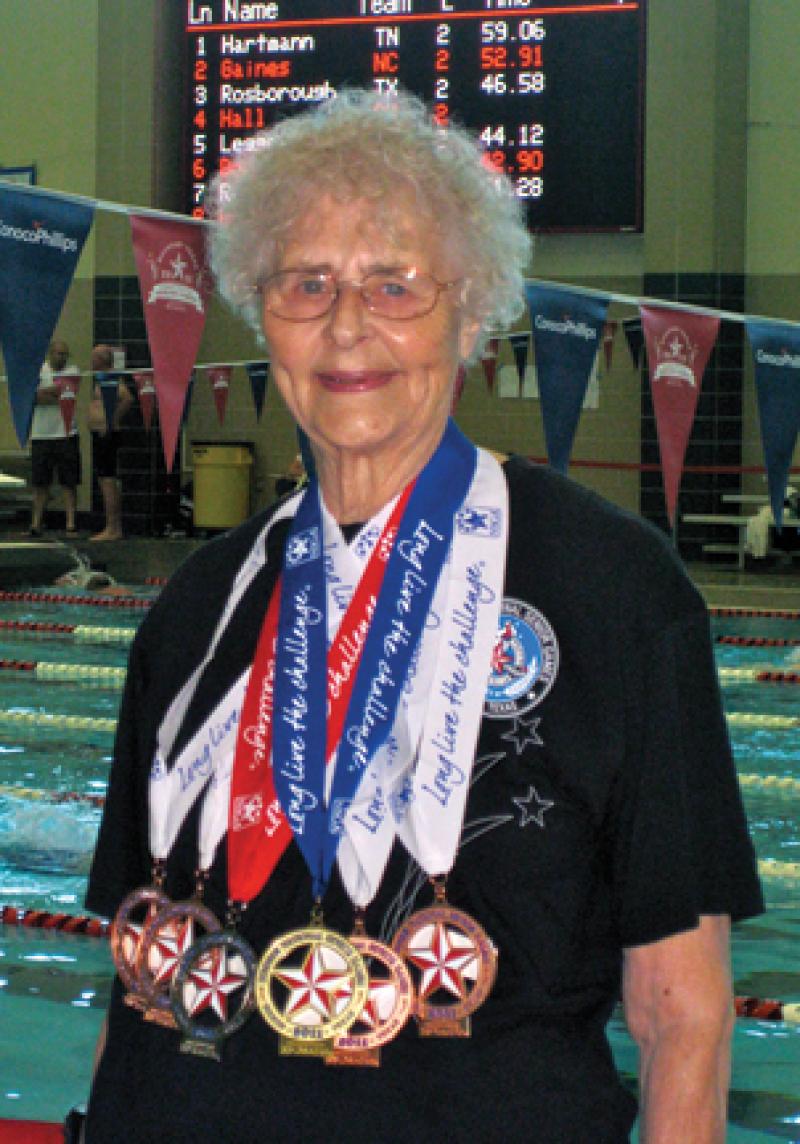
Helping Hands
In 1997, Karen Bernardo was disappointed with the lack of programs catering to children with special needs in her community of Wellesley, Mass. Her stepdaughter, Cassie, then a teenager, wanted to participate in activities and socialize with other kids, but there just weren’t many opportunities. So Mrs. Bernardo and her husband, Tom, created one.
That year, they launched Wellesley S.T.A.R.S. (www.wellesleystars.org), which offers a swim training and competition program for individuals with special needs ages 6 to adult.
“As a parent of a child with special needs, you’re the best friend, the confidant, you’re everything,” she says. “For the typical kid with special needs, the phone never rings. We saw Wellesley S.T.A.R.S. as a way to help these kids develop social skills, raise their self-esteem and improve their confidence levels.”
March/April 2012

Helping Hands
Connie Gilkeson Boggess has loved horses for as long as she can remember. “In kindergarten I had a pretend friend—a horse named Princess,” she says. After graduate school, when most of her friends were getting their first apartments, Mrs. Boggess moved back home with her parents and bought a horse.
Today, Mrs. Boggess gets to pursue her lifelong love for horses by working with them at River Cities Therapy and Recreation Center (www.rctrc.org) located at her family farm in Milton, W.Va. The nonprofit program that she started in 1994 uses horses to help improve the social, emotional, cognitive and physical well-being of individuals with special needs.
The program operates seasonally, usually running from May until October. With the help of three carefully trained horses, a mule named Seven and several devoted volunteers, the program serves about 40 children per season. Students with muscular dystrophy, cerebral palsy, visual impairment, Down syndrome, autism, amputations, deafness and attention deficit disorder have benefited from the lessons.
March/April 2012
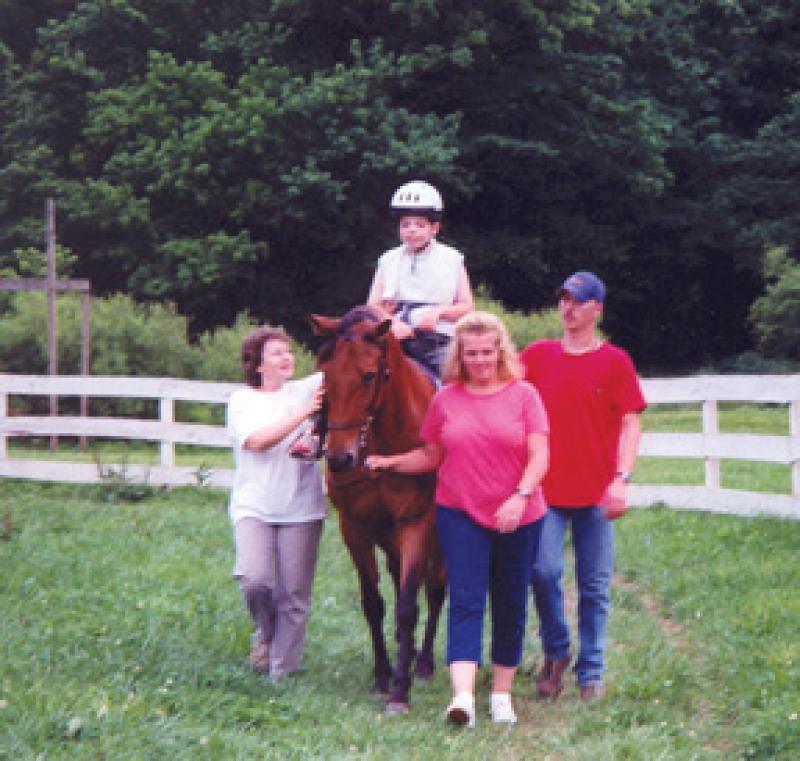
Tackling a Man’s World
When it comes to how she feels about football, Angela Hales says the word “fan” doesn’t fully describe it. Her parents raised her to root for the University of Alabama, a school whose football program is often ranked among the best in the nation, and she grew up in New Orleans, home of the Saints. In fact, she went to the very first game the Saints played in 1967. She and her husband, Myrt, love watching football on weekends: high school on Friday night, college on Saturday and the NFL on Sundays.
It was during one of these football weekends four years ago that Mrs. Hales got an idea: “I turned to my husband and said I wanted to be the first female NFL referee,” says the member of the Boeuf River Chapter, Rayville, La. “He immediately said that it was too dangerous, but asked why didn’t I become an agent instead.”
So she did. Armed with an MBA (either that or a law degree is a prerequisite), Mrs. Hales applied and was invited to take the licensing exam.
January/February 2012
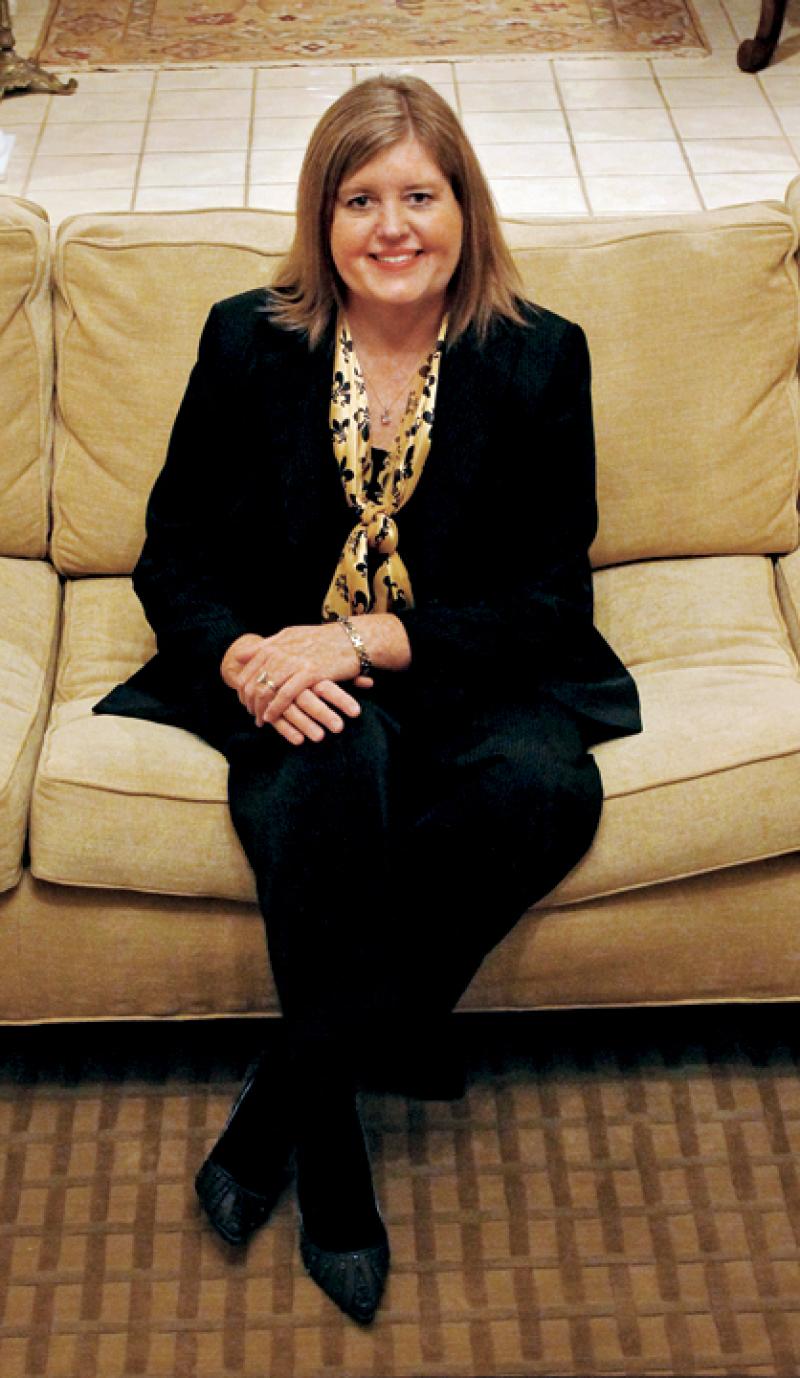
Honored to Serve
Every Wednesday morning for the past eight years, Doris Woodward has had an appointment with the police. No, not that kind of appointment—she’s one of the main researchers responsible for writing, editing and printing the history of the Spokane Police Department. In addition to meeting weekly to discuss the goals of the project, she spends at least a few hours each week combing the archives of The Spokesman-Review, Spokane’s newspaper, uncovering new facts and checking those her team has already found.
“We’ve become such good friends over this,” she says of the committee, which includes fellow DAR member Rae Anna Victor. “I love the give and take. We don’t all agree about everything. We each have our own ideas, but we talk things out. It’s nice because life isn’t always like that.”
The project encompasses a series of five books, spanning the early history of Spokane (settled in the mid-1800s) to the present day. Right now, the team is wrapping up the third book, covering the Great Depression to World War II, which they hope will be finished by the end of the year.
November/December 2011
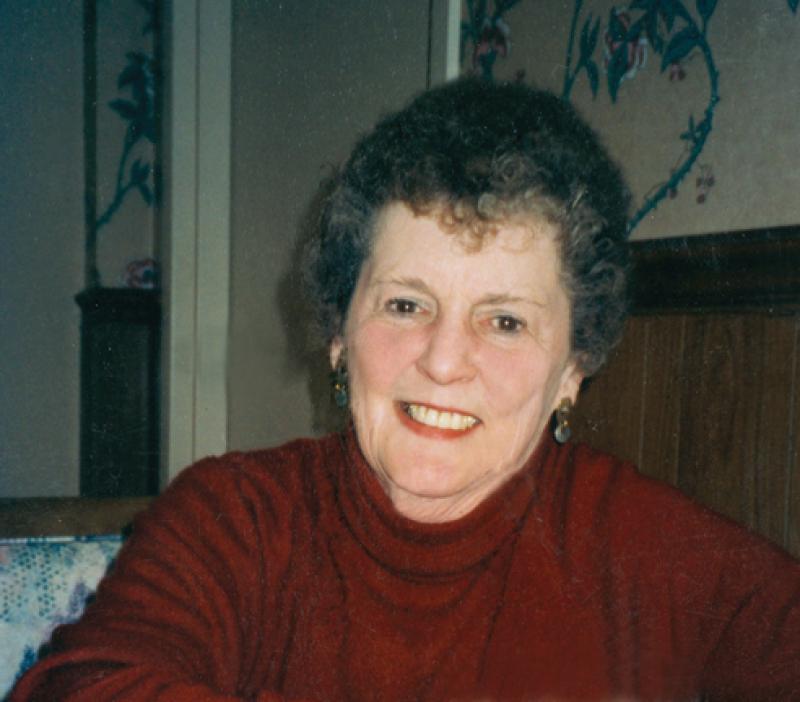
Honored to Serve
How do you help someone whose loved one has just died? What if that loved one was a beloved grandmother or a teenage son killed in a car accident? Ask Pat Tosch, who has developed the sensitivity necessary to handle such situations as a volunteer chaplain with the King County Sheriff’s Department in the greater Seattle area.
Ms. Tosch is responsible for notifying the next of kin when someone in the precinct has died. When making notifications to family members, she is very careful about how she approaches them. Since everyone reacts differently to tragic news, she has to make a quick assessment of how to help them understand what has happened. She not only gives them details about the death, but takes care in handling their emotional state. She also leaves her contact information for follow up. Sometimes she hears nothing from these grieving individuals; other times she has been asked to conduct funerals; and occasionally, she has developed friendships with the families she has served.
Ms. Tosch was the first female chaplain for the King County Sherriff’s Department when she joined in 2002, which surprised even her: “There are so many things a woman can do in this role that a man can’t,” she says. “When a mother is devastated over her son’s death, I can hold her. A man can’t do that. If there are children involved, I’m able to help with them in a way men just don’t know how to do. It’s often really nice to have a woman there.”
November/December 2011
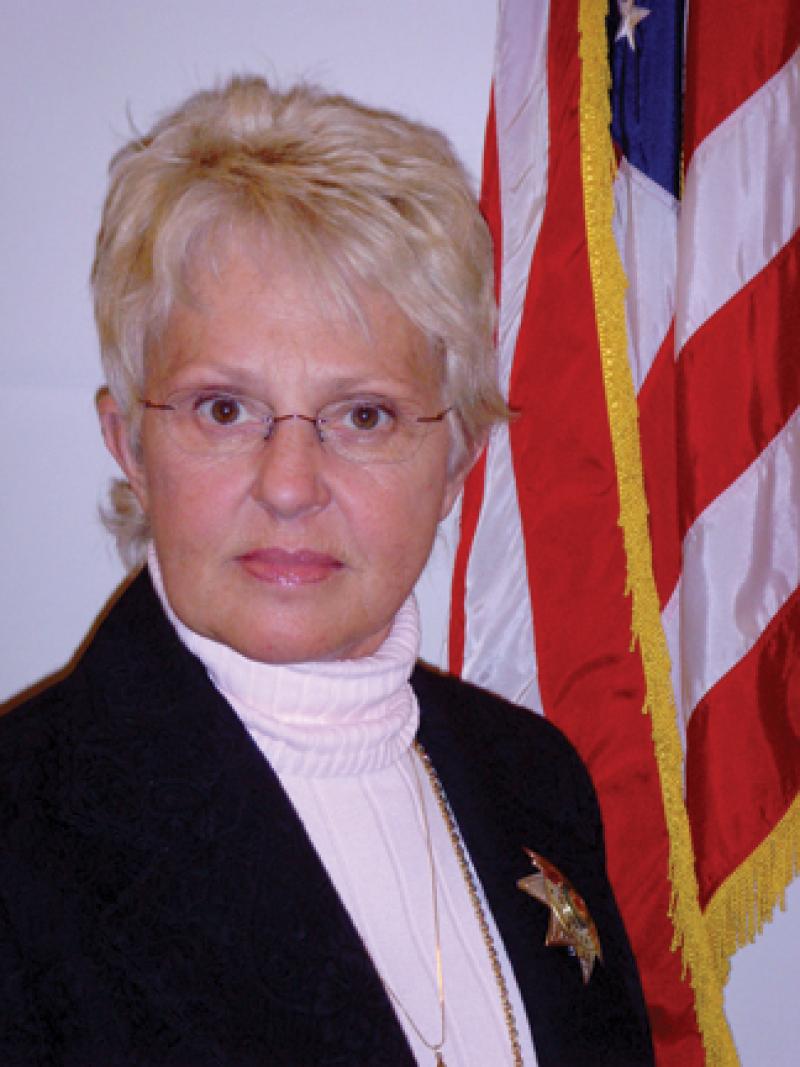
Rebuilding a Country Through Education
In 2005, Alusine Kanu, a doctoral graduate of George Mason University, came up with a noble but far-fetched idea. Growing up in the western African country of Sierra Leone, which had been devastated by a decade-long civil war that ended in 2002, he saw an opportunity for its people: a community college that would help educate the adults in the country.
Had he taken this proposal to just anyone, it probably would never have gotten off the ground. But he brought his vision to Gail Kettlewell, who was serving as director of George Mason’s community college education doctoral program at the time. Today, Dr. Kettlewell and teams of volunteers both in the United States and Sierra Leone are making Kanu’s dream a reality.
It’s a huge undertaking. The vision involves a new, comprehensive model for developing nations. Paramount chiefs—chosen for life, these are the highest level of traditional tribal chiefs in a region—donated land in four rural provinces for the community college system. Each 200-acre college site will include a business/industrial park and a community town center. Currently, Dr. Kettlewell is working on securing international funding—the goal is $55 million—as well as recruiting businesses to provide on-the-job training for students and eventual employers for graduates.
September/October 2011
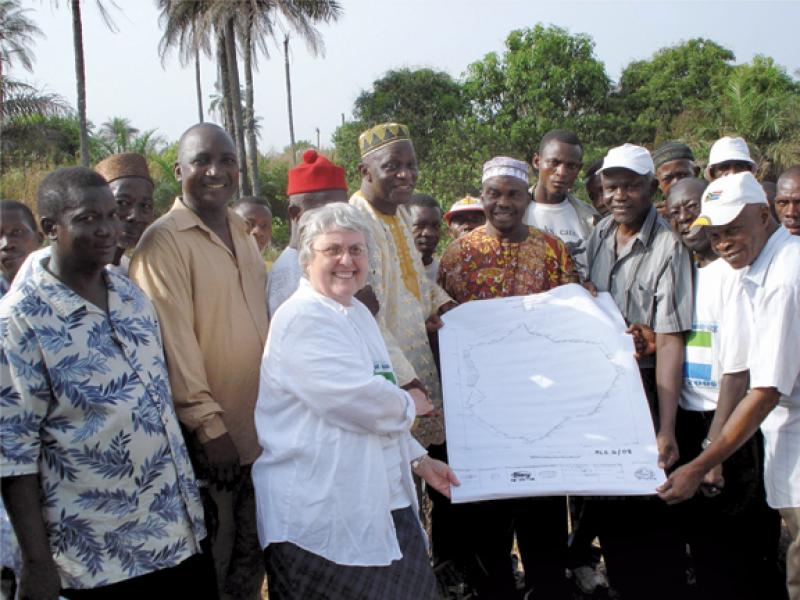
Still Running Strong
You wouldn’t be able to guess it today, but Rachel Veitch didn’t care for the beautiful new sports car her then-husband brought home more than 46 years ago. Though it was a top-of-the-line, soft yellow, 1964 Mercury Comet Caliente, she “wasn’t too happy about it,” she recalls. “But after I had driven it a few years and realized how easy she was to handle, I warmed up to her.” Since then, it’s been nothing but love for the car she dubbed “Chariot.” In 47 years, Ms. Veitch has logged 564,000 miles on the car—and has no intention of trading her in.
“People ask me all the time why I never bought a new car,” says the retired cardiac nurse, DAR member for 68 years and present member of the Orlando Chapter, Orlando, Fla. “And I tell them, ‘I didn’t need one.’ I had a perfectly fine car, and I still do.”
Ms. Veitch says the past year has been a whirlwind. She and Chariot attended various car shows across the country, from Milwaukee, Wis., and Charlotte, N.C., to the nation’s largest antique car show in Carlisle, Pa. She also appeared on “The Tonight Show With Jay Leno” in August 2010. “While I was waiting in the green room, Jay came and presented me with a box of the most beautiful long-stemmed roses I have ever seen,” she says. “The next day I was also taken to see Jay’s private collection of automobiles, which is not open to the public. It was all so exciting. I tell people that my cup runneth over with blessings, because I cannot believe I’ve had such an exciting year.”
July/August 2011
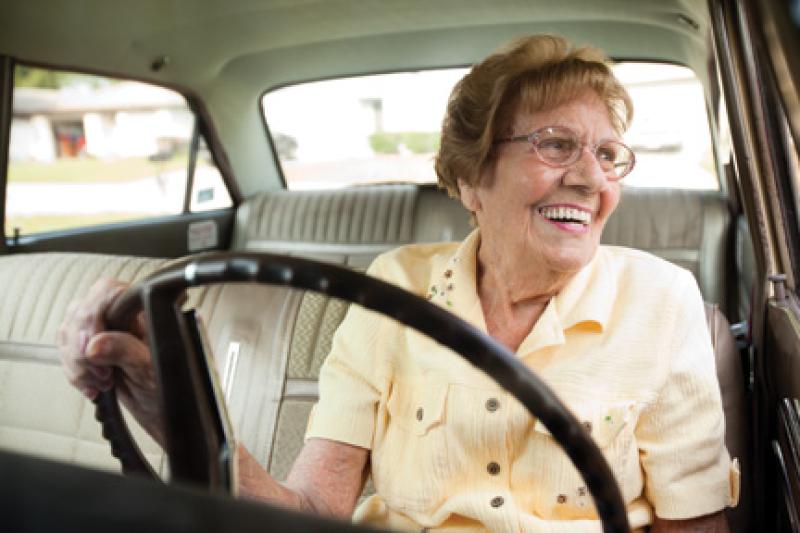
Marathon Woman
Most people consider running one marathon to be a feat. Brooke Curran is two years into her pledge to run a marathon in all 50 states, on all seven continents (yes, even Antarctica) and to finish each of the five world marathon majors in five years.
Mrs. Curran doesn’t just train and run for her own sake. She uses her passion to support women’s and children’s organizations in her hometown of Alexandria, Va. A longtime runner, the mother of three and member of the Eleanor Wilson Chapter, Washington, D.C., remembers when she was first inspired by the idea of running for charity.
She recalls driving through one of Alexandria’s run-down areas—a neighborhood she frequently passed through on her way home. Usually, she would look around for a moment and feel badly for her neighbors, then a mile down the road she forgot about them.
May/June 2011
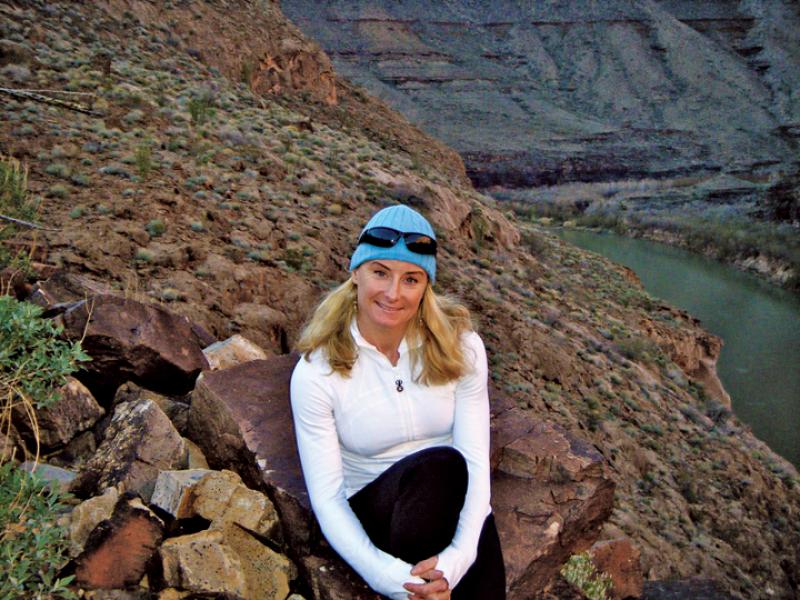
History’s Protector
To say that Mary Collins Landin, Ph.D., has a passion for genealogy would be an understatement. She’s been working on her own genealogy since she was a teenager, and she’s always willing to help someone find a lost ancestor—whether the searcher is in her home state of Mississippi or elsewhere.
Her favorite genealogy-related pastime is recording old cemeteries, which she and her son, now a space engineer with Lockheed Martin, would do on the weekends when he was a boy. “I record them because of their history,” says Dr. Landin, the Regent, past Registrar and longtime member of the Ashmead Chapter, Vicksburg, Miss. “Before 1850, census records didn’t list anyone except a head of household or widow, so cemetery records play a very important role in tracing one’s lineage.”
She spent four years researching and writing a book that lists more than 13,000 Mississippi cemeteries. That’s just one of more than a dozen genealogy books Dr. Landin has published since the 1960s.
March/April 2011
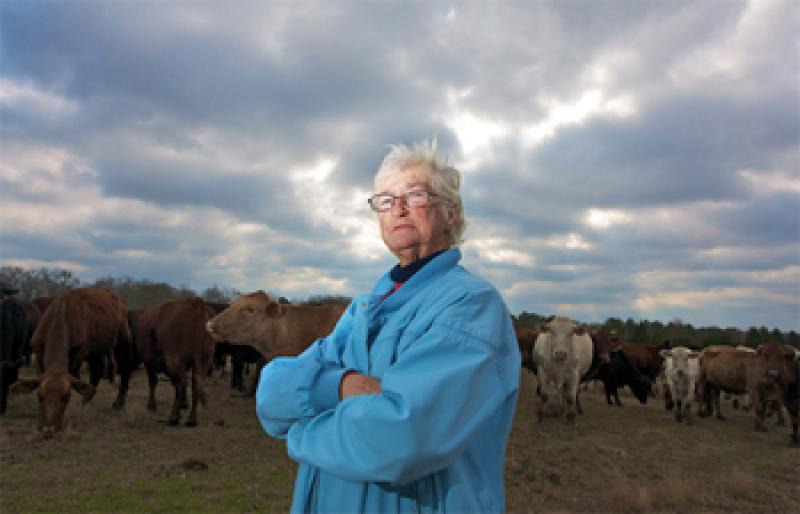
A Worldly Perspective
Excited and apprehensive—that’s how Anne Woods Patterson describes her reaction when she was appointed U.S. ambassador to Pakistan almost four years ago. “It was exciting because I knew it was an important job, but I also was apprehensive because I knew it was going to be difficult—and dangerous,” says Mrs. Patterson, who served as ambassador from July 2007 until October 2010.
For more than three years, Mrs. Patterson oversaw U.S. diplomatic operations in Pakistan, including working with Pakistani officials and managing U.S. assistance programs, which totaled about $3.5 billion in aid each year. Her job also entailed trying to improve the U.S. image in Pakistan. “People there are regrettably quite anti-American, a sentiment that goes back a long way,” she says. “We certainly had problems communicating that America could have a positive place in their lives, but when you talked one-on-one with people, they were quite hospitable and amiable.”
She also worked hard to increase private investment in Pakistan—she even brought a group of Pakistani business leaders to the United States. “I thought American companies were intimidated by the dangers in Pakistan but were missing out on some good opportunities,” she says.
January/February 2011
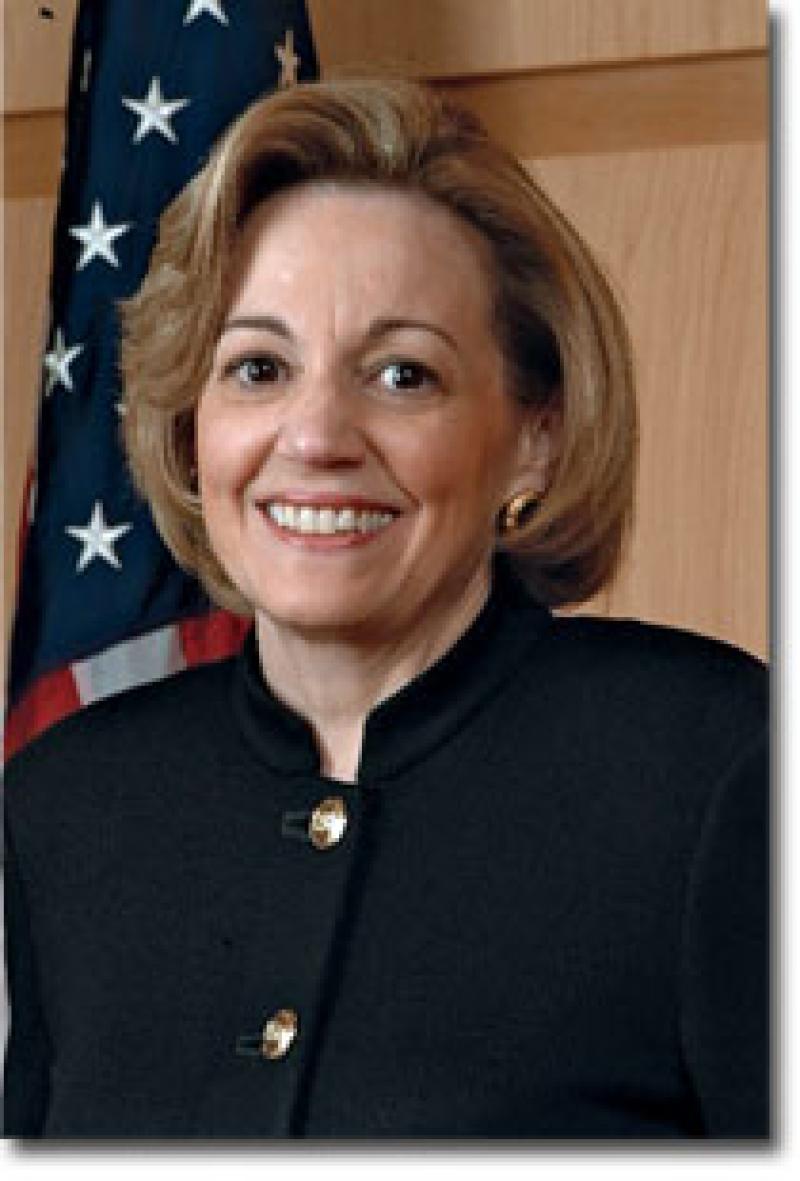
Through a Veteran's Eyes
Since she was a little girl, Laura Kennedy knew she wanted to perform in front of a camera. In high school, she fine-tuned that goal and set her mind to becoming a TV reporter, later graduating from the Walter Cronkite School of Journalism and Mass Communication at Arizona State University with a degree in broadcast journalism and human communication. Today, she’s a reporter for the CBS station in Springfield, Mo.
Now that she’s been a TV reporter for more than three years, she says her favorite part of the job isn’t being on camera—it’s being out in the community and meeting the people behind the stories she reports. She met dozens of World War II veterans while working on a story about the Honor Flight Network, which enables World War II veterans from across the country to visit the World War II Memorial in Washington, D.C., free of charge. Then a TV reporter for the NBC affiliate in Billings, Mont., Ms. Kennedy was selected as the media representative for Montana’s second Honor Flight to Washington, D.C.
May/June 2013
